

















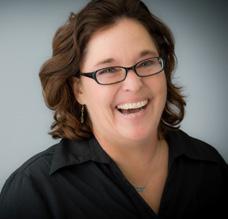
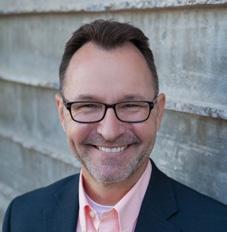

































Honor is what motivates our team of dedicated healthcare professionals. Through passion and purpose, we come together to ensure every patient is provided with the best possible care. honorhealth.com










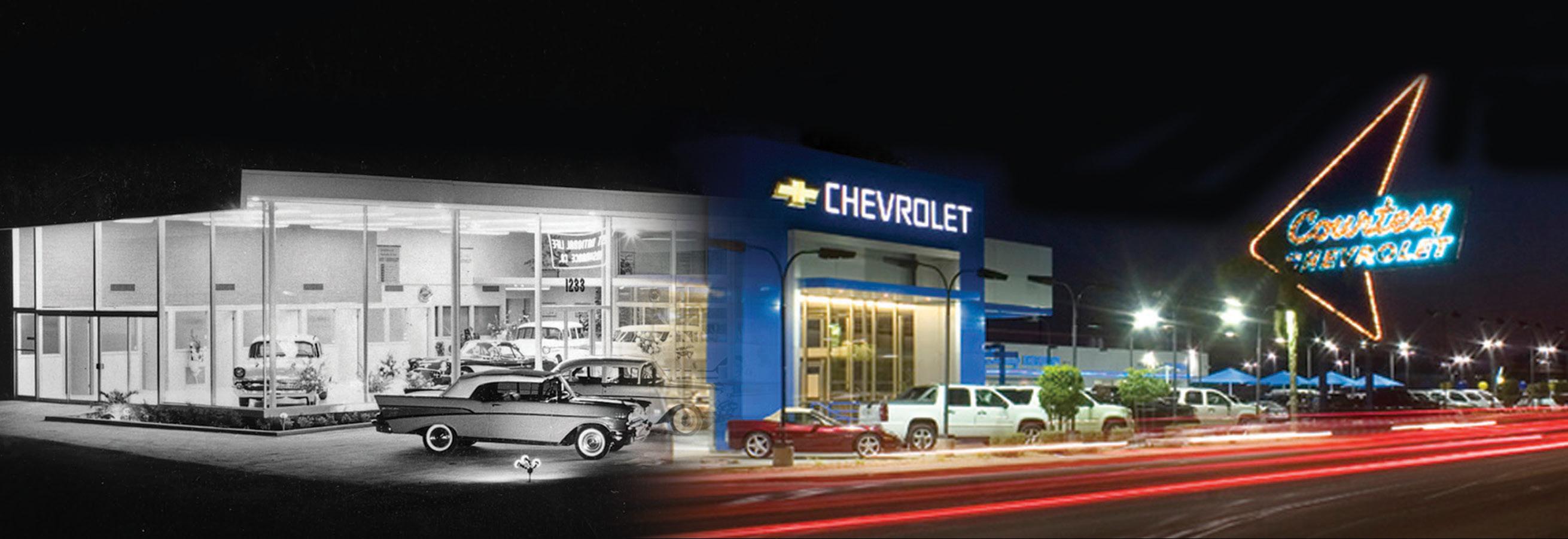











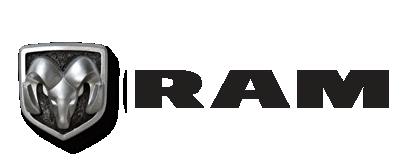
For over 40 years, the Arizona Community Foundation has supported nonprofits and students across our state by mobilizing the collective passion and generosity of thousands of Arizonans.
When you are ready to take the next step in your personal charitable giving journey, we are here to help you achieve your goals.
Learn more | azfoundation.org | 602.381.1400
This month spotlighting Vrbo Fiesta Bowl, Tyler Butler’s series explores the myriad ways businesses give back and the positive ways their programs impact our community.
Jesse Meschuk examines how today’s challenges will push into next year. 61 Why B2B E-Commerce


Tim Beyer discusses the problems and pitfalls that ensue when nonIT business leaders are blinded by their uninformed enthusiasm.
Tim Bottke explores how companies can design their digital transformations to maximize value. DEPARTMENTS
Neil Giuliano, president and CEO of Greater Phoenix Leadership, introduces the “Top Valley Leaders” issue.
32 19 Top Leaders – Our list of Valley leaders who are making a real difference!
Leaders across a variety established sectors within our business community answer some hard-hitting questions to give us a sense of what they see for 2023.
“Optimizing HVAC Systems – Decarbonize Building Operations, Save on Operating Costs,” “Caliber Focuses on Mesa’s Downtown Revitalization,” “Attainable Housing Development Begun in Downtown Tempe,” “Luxury Build-for-Rent Community Planned for Southeast Valley,” “What the Development of Teravalis Means for Buckeye” and “Phoenix Gains Mixed-Income Housing Development”
From the
Founding 345 Wealth Management, Dillan Micus’ FRESH view on leadership comes from the bottom, no the top.
“Axiom Care Breaks Ground on Drug-Use Treatment Facility” and “Sensor-Infused Smart Diabetic Footwear Improving Outcomes”
“Ride the Social Commerce Wave to Revitalize Small Business Competition” and “Becoming Truly Data-Driven with Data Visualization”

Cathy Graham, Elizabeth Hart and Whitney Yates-Woods respond to In Business Magazine’s burning business question of the month.
“Fighting Inflation in the Multifamily Maintenance Shop,” “Dailies Top Stories,” “Local Standouts Recognized for Achievements and Philanthropy,” “High-End Home Service Brand Offers Eco-Friendly Initiatives” and “Arizona Opera Pioneers a Novel Revenue Stream” 18
“Job Hunters’ Pet Peeves – Employers, Take Heed” and “Quiet Constraint – The New Workplace Villain”
A recent 42Floors report on data center sales activity and construction data for the decade 2012–2021 ranked Phoenix No. 5 among the top 20 data center markets by sales volume, with a total of $482.3 million in transactions closed from 2012 through 2021, and No. 12 in growth, with a total of 876,000 square feet of new data center space added since 2012. 42floors.com/news/data-center-construction-and-sales-report
MoreThanAStore.com
Goodwill is so much more than a store. Learn how Goodwill is ending poverty through the power of work.
Recognized by In Business Magazine as a 19 Top Leader of 2022 honoree for his exemplary leadership in Arizona.

Thank you, Tim, for your dedication to creating services that help underserved people thrive.
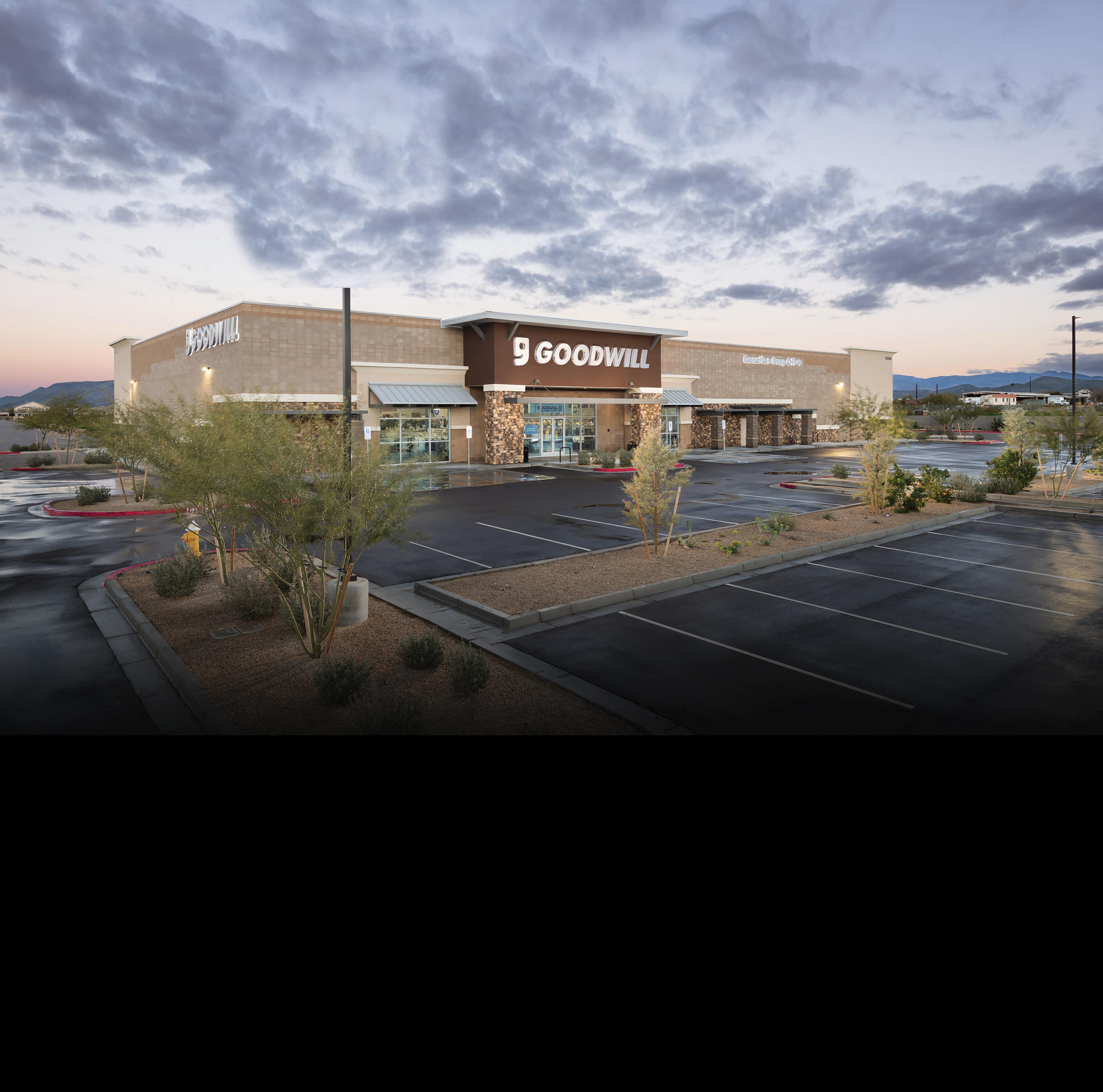
In Business Magazine is a collaboration of many business organizations and entities throughout the metropolitan Phoenix area and Arizona. Our mission is to inform and energize business in this community by communicating content that will build business and enrich the economic picture for all of us vested in commerce.


Kristen Merrifield, CEO
Alliance of Arizona Nonprofits (602) 279-2966 www.arizonanonprofits.org

Debbie Hann, Chief Operating Officer
Arizona Small Business Association Central Office (602) 306-4000 www.asba.com
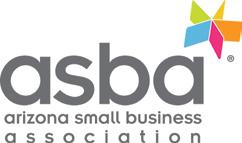
Steven G. Zylstra, President & CEO Arizona Technology Council
One Renaissance Square (602) 343-8324 www.aztechcouncil.org
Doug Bruhnke, Founder & President
Global Chamber® (480) 595-5000 www.globalchamber.org
Ania Kubicki , President
NAWBO Phoenix Metro Chapter (480) 289-5768 www.nawbophx.org

Colin Diaz, President & CEO
Tempe Chamber of Commerce (480) 967-7891 www.tempechamber.org
Our Partner Organizations are vested business organizations focused on building and improving business in the Valley or throughout Arizona. As Partners, each will receive three insert publications each year to showcase all that they are doing for business and businesspeople within our community. We encourage you to join these and other organizations to better your business opportunities. The members of these and other Associate Partner Organizations receive a subscription to In Business Magazine each month. For more information on becoming an Associate Partner, please contact our publisher at info@inbusinessphx.com
Ahwatukee Foothills Chamber of Commerce ahwatukeechamber.com
Arizona Chamber of Commerce & Industry azchamber.com
Arizona Hispanic Chamber of Commerce azhcc.com

The Black Chamber of Arizona phoenixblackchamber.com
Chandler Chamber of Commerce chandlerchamber.com
Economic Club of Phoenix econclubphx.org
Glendale Chamber of Commerce glendaleazchamber.org
Greater Phoenix Chamber of Commerce phoenixchamber.com
Greater Phoenix Equality Chamber of Commerce gpglcc.org
Mesa Chamber of Commerce mesachamber.org
North Phoenix Chamber of Commerce northphoenixchamber.com
Peoria Chamber of Commerce peoriachamber.com
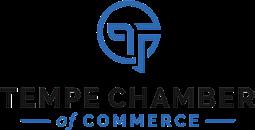
Phoenix Metro Chamber of Commerce phoenixmetrochamber.com
Scottsdale Area Chamber of Commerce scottsdalechamber.com
Scottsdale Coalition of Today and Tomorrow (SCOTT) scottnow.com
Surprise Regional Chamber of Commerce surpriseregionalchamber.com
WESTMARC westmarc.org


RaeAnne Marsh became editorial director of Phoenix-based InMedia Company in 2010 and helped launch Valley-wide business resource In Business Magazine. Her journalism career began more than 20 years ago, when she left California and 12 years of teaching to transplant in Phoenix’s vibrant entrepreneurial environment, and includes incorporating her own business, Grammar & Glitz, Inc., through which she has taken writing and editing gigs with business and media clients nationwide. Holding the magazine to strong editorial standards, she says, “New businesses are founded, out-of-staters bring new strengths, established businesses evolve and expand — all of which contributes to the dynamic vitality that I see as the mission of In Business Magazine to be the voice of and vehicle to nurture, in each monthly edition. It is my challenge to ensure each edition is packed with relevant information on a broad spectrum of issues, aimed at a readership that runs the gamut from entrepreneurial startup to major corporation.”
As editor of the Spanish section of In Business Magazine, Edgar R. Olivo shares weekly content for Spanish-preferred small-business owners in Phoenix. As a first-generation Latinx and native-Arizonan, Olivo’s upbringing was filled with similar challenges that Latino communities in Arizona face when they engage with the economy. An entrepreneur and nonprofit executive, he is leading the charge to help strengthen a diverse, inclusive and sustainable entrepreneurial ecosystem in Arizona. His work is nationally recognized for establishing programs that help advance equitable economic recovery, and increase generational wealth for Latinx/Hispanic small business owners in Arizona.
“I believe today is a moment for leading big change. Business ownership is a critical means to build community and individual wealth. I hope my work will demonstrate to the Latino community that the entrepreneur ecosystem in Arizona has their back.”
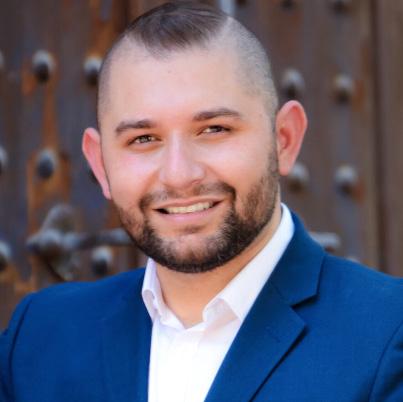
Guest columns are feature articles presented as a special, limited series as well as regular, ongoing series in In Business Magazine.
A long time corporate social responsibility practitioner, Tyler Butler is known for her expertise in creating, launching and developing successful social impact programs. Her commitment to rallying people together to make a positive difference has created sustainable signature programs empowering people to give back in a myriad of ways globally. Butler operates under the ethos of “each one teach one,” and so her contributions to In Business Magazine provide her with an outlet to share the best of what companies are doing to aid humanity. Butler looks to shed light on good corporate citizens and share stories about the magic they are creating through their generous outreach efforts.

Joanna C. de’Shay is executive director of Diversity Leadership Alliance, the premiere education training organization in Arizona dedicated to eradicating racism, bias and prejudice. DLA’s goal is to create an inclusive community where each person is equally respected and empowered. De’Shay is an avid servant leader who was born in Accra, Ghana, on the western coast of Africa to a Nigerian father and a Russian mother. An immigrant herself, she believes in being a part of the solution to disrupt systems and is on a mission to create bridges and partnerships by educating companies, nonprofits and educational organizations on the vital need for diverse voices and fresh perspectives.
As a 35-year newspaper veteran in Arizona, Don Henninger has always made journalism his passion as well as his career. Facts matter — especially in this day and age — and information is the foundation that enables citizens to be positive participants in their communities at all levels. Henninger has been fortunate to serve as a community leader and continues in that role today as director of the Scottsdale Coalition of Today & Tomorrow, which convenes leaders to work on issues in that city, and as a member of several nonprofit boards in the Valley.
Bruce Weber sees In Business Magazine as a valuable forum for topics relevant to our business and nonprofit community. “I am deeply interested in organizational capacity and what makes organizations successful and impactful in the work they do. In my work in the community for more than 16 years, I have worked with all sizes of organizations and leaders in helping their businesses grow and expand their impact. My previous careers with Microsoft and Hewlett Packard involved working with business integration partners to design strategies to engage new markets. In today’s complex world, I enjoy exploring the possibilities and opportunities that change can bring.”
Publisher Rick McCartney
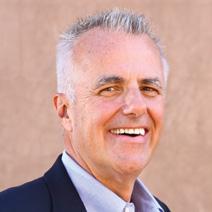

Editor RaeAnne Marsh
En Negocios Editor Edgar Rafael Olivo
Web Editor Jake Kless
Graphic Design Benjamin Little
Alison Bailin Batz
Tim Beyer
Tim Bottke
John F. Bremer Jr. Brian Crisp
Jim Cunningham
Michael Daly Candie Guay Mike Hunter Merilee Kern
Rana Lashgari Kelli Mason Heath Melton Jesse Meschuk Rania Nasis Jeremy Nova Darren Rawson Gary Smith
Joseph Specter Davide Vigano
ADVERTISING
Operations Louise Ferrari Business Development Louise Ferrari Cami Shore Events Amy Corben
More: Visit your one-stop resource for everything business at inbusinessphx.com. For a full monthly calendar of business-related events, please visit our website.
Inform Us: Send press releases and your editorial ideas to editor@inbusinessphx.com
President & CEO Rick McCartney
Editorial Director RaeAnne Marsh


Financial Manager Tom Beyer
Office Manager Allie Schimmel
Accounting Manager Todd Juhl
Corporate Office InMedia Company 45 W. Jefferson Street Phoenix, AZ 85003 T: (480) 588-9505 info@inmediacompany.com www.inmediacompany.com
Vol. 13, No. 12 In Business Magazine is published 12 times per year by InMedia Company. POSTMASTER: Send address changes to InMedia Company, 45 W. Jefferson Street, Phoenix, AZ 85003. To subscribe to In Business Magazine, please send check or money order for one-year subscription of $24.95 to InMedia Company, 45 W. Jefferson Street, Phoenix, AZ 85003 or visit inbusinessphx.com. We appreciate your editorial submissions, news and photos for review by our editorial staff. You may send to editor@inbusinessmag.com or mail to the address above. All letters sent to In Business Magazine will be treated as unconditionally assigned for publication, copyright purposes and use in any publication, website or brochure. InMedia accepts no responsibility for unsolicited manuscripts, photographs or other artwork. Submissions will not be returned unless accompanied by a self-addressed, stamped envelope. InMedia Company, LLC reserves the right to refuse certain advertising and is not liable for advertisers’ claims and/or errors. The opinions expressed herein are exclusively those of the writers and do not necessarily reflect the position of InMedia. InMedia Company considers its sources reliable and verifies as much data as possible, although reporting inaccuracies can occur; consequently, readers using this information do so at their own risk. Each business opportunity and/ or investment inherently contains certain risks, and it is suggested that the prospective investors consult their attorney and/or financial professional. ©2022 InMedia Company, LLC. All rights reserved. No part of this magazine may be reproduced or transmitted in any form or by any means without written permission by any means without written permission by the publisher.
Since 2015 Neil Giuliano has served as president and CEO of Greater Phoenix Leadership, which, for 48 years, has been the forum for corporate leadership CEOs to collaborate with the government, education and philanthropy sectors to create and sustain a safe, healthy and prosperous Arizona.
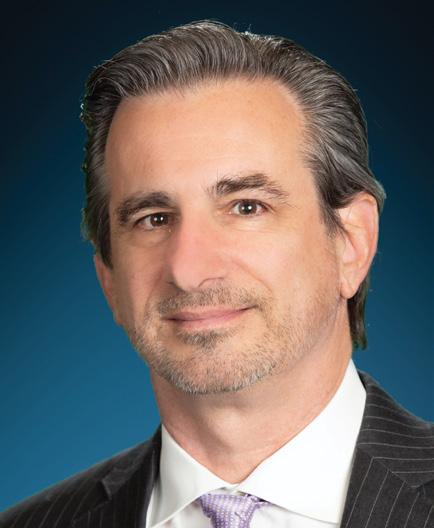
From 1994 to 2004, Giuliano served as mayor of Tempe. He led Tempe to earn, in 2003, the “All-American City” award, a coveted honor bestowed on local governments demonstrating exceptional success in problem solving.
Between then and now, Giuliano served 2010–2015 as president and CEO of San Francisco AIDS Foundation, one of the largest AIDS service organizations in the world and whose advocacy and care models have been replicated around the world. Giuliano is the author of The Campaign Within: A Mayor’s Private Journey to Public Leadership and has received numerous awards and honors for his work in public policy and community activism. gplinc.org
NEIL GIULIANO, GREATER PHOENIX LEADERSHIP

Every couple of years, our nation is embroiled in a debate about leadership: Who will be assigned to lead? What will they hope to accomplish? How will they be successful? We know that political leadership, governing our society, has deep and far-reaching impact. Yet business leadership has just as much influence and impact. You’re a leader of a business enterprise which powers our economy forward. Without your leadership there would not be a strong and functioning society to govern; you employ citizens and enable them to earn a living to care for themselves and their families.
I define a leader as one who influences people to accomplish a purpose. Simple, yes, but think about it: At its core, leadership is about serving others, articulating a desired outcome, and coalescing and aligning the work of other people to make things happen. You do it every day, and as we see at all levels of society, it matters. That’s why we need more and more people to accept leadership roles in the community.
Because of the impact on the broader community that businesspeople can empower — sometimes unwittingly through leadership decisions simply within their own companies — In Business Magazine is holding a magnifying lens and spotlight to the topic. In Business Magazine reached out to Valley notables in varied industry sectors and representing diverse social and business perspectives to explore the intersections of impact across the boundaries of individual business, industry, the greater business community and our overall community.
In this intertwined relationship, businesses may be able to turn to local municipalities for resources dedicated to helping them overcome challenges. Rana Lashgari examines this in her feature article, “Partnering with Your City Can Help Your Business Grow.”
This election season has seen a lot of political pundits discoursing on women as a powerful force, and a long-standing popular topic in terms of business has been the “glass ceiling” for women in major corporations. Rania Nasis makes a point that what really matters as a business force is woman-owned startups, and she takes a close look at that area of business in the Roundtable feature “The Female Founder Advantage in Startups.”
Digital applications have been taking over more and more functions of business. Tim Bottke addresses this in another of this month’s feature articles explores “Five Key Elements of Digital Transformation Payback,” from his book Digital Transformation Payday

It is my sincere pleasure to help In Business Magazine bring you this December 2022 issue, with informative and relevant articles on the many subjects that matter to business and featuring a cadre of successful business leaders. Please put this information to good use; and may it inspire you further with your personal and professional choices to lead.
Sincerely, A Year of Leadership
A Year of Leadership
DON’T MISS OUT!
Get a year of In Business Magazine Subscribe now at inbusinessphx.com
Let us know what you think of this issue of In Business Magazine. Email our publisher at feedback@inbusinessphx.com
Manténgase informado sobre temas empresariales en español a través de En Negocios, artículos para los lectores de habla hispana en el área metropolitana de Phoenix. Visite inbusinessphx.com/ ennegocios para más información.
Stay informed on business topics in Spanish through En Negocios, articles for Spanish-speaking readers in the Phoenix metropolitan area. Visit inbusinessphx.com/ ennegocios for more information.
CONNECT WITH US: Story Ideas/PR: editor@ inbusinessphx.com
Business Events/ Connections: businessevents@ inbusinessphx.com

Marketing/Exposure: advertise@ inbusinessphx.com
Visit us online at www.inbusinessphx.com
FEEDBACK QUESTION: Let us know what you want to know from the Valley’s top business leaders. editor@inbusinessphx.com
At Desert Financial, we know that when the economy impacts our members and community, our business will be impacted as well. The economic trends we expect will impact our business in 2023 are lower inflation, rising interest rates and a cooling labor market.
To prepare, we have been reviewing budgets carefully and taking a close look at spending, which are things we encourage our members to do, too. Building a budget that has an emergency fund is crucial when planning for the unknown. That leads to our next step in preparation: anticipate change.
We are doing our best to plan for any situation, but the one thing that we always keep in mind is not to panic. Now is not the time to make huge financial changes. It’s always best to stay the course during an economic downturn.
Finally, we believe financial literacy is incredibly important, but especially during economic uncertainty. In 2023, we will be ramping up efforts to provide financial literacy to the community. We believe that when our community, members and employees are financially strong, so is Desert Financial Credit Union.
Desert Financial Credit Union desertfinancial.com
Axon Sector: Public Safety Technology
Businesses are facing extreme cost cutting as demand and growth have not kept pace in a post-pandemic environment. While we are keeping a close watch on global recession forecasts, not all tech companies will be impacted identically. At Axon, we enjoy a highly recurring, stable business model that benefits our company, customers and communities. We continue to build upon a solid foundation of customer trust by delivering mission-critical product offerings to create the premier operating system for public safety.
Leading People Operations, I am focused on impacts to our most valuable asset — our employees. Attracting, developing, motivating and retaining world-class talent are critical to delivering for the future. Our moonshot, to cut gun-related deaths between the police and the public by 50% in the next 10 years, can only be unlocked by having bright, inspiring individuals willing to deliver this goal. Our strategy includes an enhanced focus on retention and internally cultivating talent. We’re not hiring just for today; we’re hiring for five to 10 years from now.
Axon axon.com
For all past Feedbacks go online to inbusinessphx.com and see what Valley executives think on various business topics.
DEC. 2022
Cathy Graham brings a unique blend of creativity and strategy to marketing and brand loyalty. Her tenured expertise in the credit union movement grew from a passion for credit unions’ not-for-profit missions and community engagement. Graham earned a bachelor’s degree in advertising from Pennsylvania State University and studied at the CEO Institute at the Cornell, Wharton and Darden schools of business.
Elizabeth Hart joined Axon in 2019 and is responsible for leading the company’s global people organization. Prior to joining Axon, Hart was the CAO for Trax Group, a Saas-based startup, and spent five years at Bloomberg LP. She currently sits on the board of Girls in Tech – Phoenix. Hart holds a BS in Business Administration from the University of Mary Washington.



Sign up for the monthly In Business Magazine eNewsletter at www.inbusinessphx.com. Look for survey questions and other research on our business community.
There are a couple of economic trends I expect will impact Yates Buick GMC in 2023. First, the rise of electric vehicles. Several major automakers are planning to launch new models of EVs, including Buick and GMC. My company has been preparing for this transition for more than a year by training EV specialists, purchasing new service equipment and installing superchargers.
Next, interest rates may continue to rise, but the good news is rebates are back and manufacturers are offering 0% financing or subvented financing if a buyer qualifies. This, combined with an increase in inventory, means buyers can negotiate a good deal again, which should significantly impact the number of people looking to purchase a car or truck.
After pushing through the chip shortage during COVID and experiencing a lull in inventory due to supply chain issues, 2023 is looking bright for the automotive industry.
Yates Buick GMC yatesbuickgmc.com
Whitney Yates-Woods is dealer principal of family-owned Yates Buick GMC in Goodyear.
Yates Buick GMC has been serving the Phoenix metropolitan area for more than 37 years and treats every customer like a member of the family. The company takes pride in being a long-standing fixture in the community, with several repeat customers over the years.
What economic trends do you expect will impact your business in 2023?
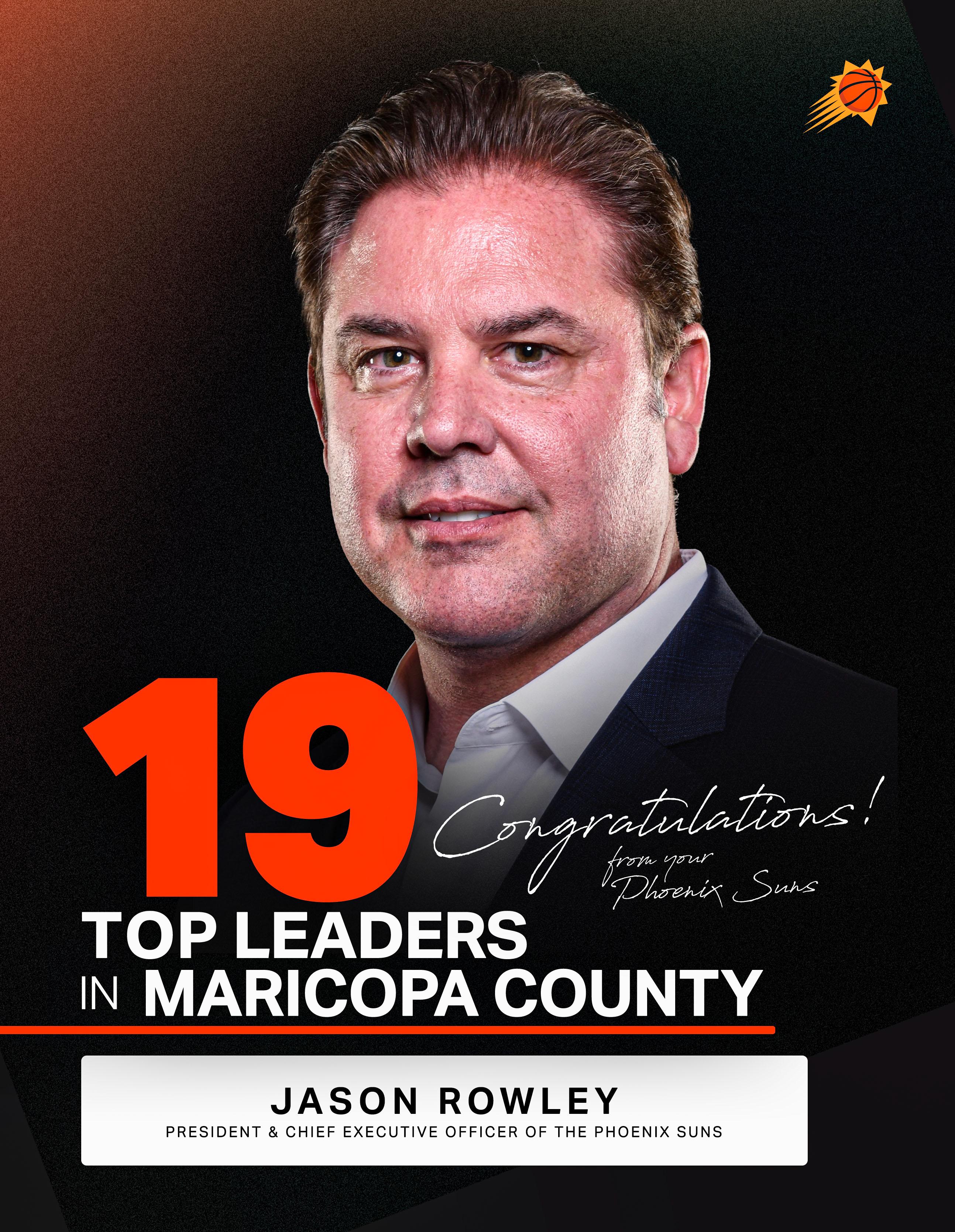
Here are the stories with the most views over the past 30 days (prior to press time) that were features in our In Business Dailies. The In Business Dailies hit email inboxes twice each weekday — at 9:30 a.m. and updated at 4:30 p.m. Sign up today at www.inbusinessphx.com/dailies-signup
“Greater Phoenix is such an amazing incubator for upand-coming restaurant concepts and has become a dining destination attracting visitors from across the nation and all parts of the world,” says Joey Maggiore, co-founder of The Maggiore Group. “It has really been growing quickly and it has been astonishing to be a part of our restaurant industry’s massive growth and see it exponentially expand.”
HR & Management | Feature | November 2022
Much talk of labor challenges, employee turnover and the Great Resignation this past year has focused on rank-andfile workers and mid-level talent.
But CEOs and other top executives have not been immune to these forces.
Economy & Trends | Economy | November 2022
Despite some positive signs in the Arizona labor market, growth may slow in the next couple of years. Unemployment is low, prices on housing and consumer goods are high, and average consumers are cutting back on spending as their paychecks fall behind expenses. Given this, how might smart leaders prepare their businesses?
Special Section | 2021 Excellence in Banking | November 2021
“Banks are the single most important component of Arizona’s economy. Not only do they lend to Arizonans, but they employ nearly 50,000 Arizonans, reinvesting in their communities and providing financial and social stability in their markets. Bankers educate young adults on the importance of financial responsibility. Bankers donate significant time and money to charities. Banks are, in many ways, the lifeblood of our neighborhoods and communities,” says the Arizona Bankers Association on its website.

Across the economy, inflation continues to push up the cost of doing business — particularly for managers and maintenance teams tasked with fixing and repairing multifamily properties.
Prices for items such as appliances (8.5%), window coverings (16.2%) and flooring (7.2%) all climbed year over year, according to the U.S. Bureau of Labor Statistics. Not only are parts and supplies more expensive, but labor is in short supply as well, compounding challenges to maintain properties, meet residents’ needs and also contribute to the bottom line.
Although it’s impossible to avoid or eliminate the impact of inflation completely, with several strategic changes, property managers can soften the blow of higher prices — while still driving long-term value.
For multifamily properties, the greatest resources in the cost-savings toolbox is streamlining maintenance procedures and policies, which can prove to be a hedge against inflationary pressures. Some basic adjustments property managers should consider include:
• Choosing standardized parts and supplies: This tactic is an effective way to manage costs and improve efficiencies. For example, if a property manager installs only one type of faucet or shower head across all units, they need only stock replacement parts for that brand or model rather than an array of parts and products that can add unnecessary expenses and time.
• Implementing a maintenance routine: Simply put, the best way to not only hedge
against price hikes and maintain a property’s value is with a proper maintenance routine. Regular HVAC checkups, filter changes and water heater draining ensure longevity and reduce costs for repairs.
• Establishing part limits: Establishing minimum and maximum limits for various maintenance products and supplies allows for better cost management and ensures maintenance teams are never without the parts they need to make timely repairs.
• Buying in bulk: Whenever possible, property managers should purchase commonly used maintenance parts, products and supplies in bulk. This helps lessen the impact of price increases on maintenance budgets and improves the maintenance team’s ability to respond to and fix issues in a timely manner.
Nobody knows what the future holds — and that’s certainly true when it comes to inflation. But that doesn’t mean multifamily property managers are helpless when it comes to higher prices.
Evaluating existing processes and procedures while implementing strategic changes to improve efficiencies and better manage maintenance spending will help property managers alleviate inflationary stresses without sacrificing long-term value. —Darren Rawson, president and CEO of AZP Multifamily (www.myazp.com), a leading maintenance and parts supplier exclusively serving the multifamily industry based in Phoenix
Arizona is the No. 5 best state for hiring as the unprecedented hiring crisis worsens, according to the study CareerCloud released last month on the Best States to Hire Workers using data from the Census Bureau, BLS, Tax Foundation, and the St. Louis Fed. careercloud.com/news/best-and-worst-states-to-hire-workers
At Fennemore, we believe in inspiring others to do their best, so together, we can do MORE. And the embodiment of this mission is our fearless leader, James Goodnow, who started here at the age of 19 as a file clerk, and by 36, became the youngest known chief executive of a large law firm in the U.S. Known for his thought leadership at the intersection of law and business, James has helped to transform the legal profession, and he’s just getting started – constantly focused on positioning Fennemore for the future.
Thanks for inspiring us, James. By continually striving to be your best self, you help our firm, our clients and our community thrive by creating endless possibilities.

Fennemore. ExpectMORE. www.fennemorelaw.com

Tri Pointe Homes Earns EPA Award - Again!
Tri Pointe Homes®, a recognized leader serving the Phoenix market for more than 30 years under the name Maracay®, has received the EPA’s 2022 Indoor airPLUS Leader Award for the fourth year in a row. The homebuilder contributed 704 homes that were Indoor airPLUS-certified throughout the Greater Phoenix area in the past year with a commitment to build 100% of its homes utilizing the program in 2022. tripointehomes.com
Duffy Group, an executive recruitment company whose winning Recruitment Research model helps employers fill critical roles on their teams at about half the cost of traditional recruitment, has been named one of the inaugural winners of Inc. Business Media’s Power Partner Awards. The awards honor business-to-business organizations around the globe that have a proven track record of supporting entrepreneurs and helping startups grow. duffygroup.com • inc.com
Larry H. Miller Hyundai Peoria was named “No. 1 Dealership to Work For” by Automotive News for 2022 and was also named No. 1 in the Large Dealership category, the third year in a row the store has received that recognition. autonews.com • larrymillerhyundai.com
TruWest Credit Union strengthened its longstanding partnership with Mesa Community College and support of students participating in its First Year Experience program with a recent $40,000 grant that covers tuition and fees for approximately 50 students and funds student leadership opportunities through stipends for FYE ambassadors for the 2022-2023 academic year, and in-kind programs that include financial literacy workshops for the students and their parents led by TruWest professionals. truwest.org • mesacc.edu
U.S. Egg, the Valley’s ultimate breakfast and lunch spot, dedicated the entire month of November to team up with Arizona Helping Hands for its annual toy and pajama drive benefitting more than 14,000 boys and girls in foster care. All six Valley locations of U.S. Egg collected new toys and pajamas for the nonprofit. azhelpinghands.org • useggrestaurant.com
With more businesses trying to combat climate change, one franchisee at a high-end painting brand is doing just that by offering eco-friendly paint for projects to address the growing demand for sustainable services. In fact, Shanmugam Mukundan is debuting the eco-friendly paints for the franchise. Says LIME’s CEO and founder, Nick Lopez, “Shan is a top performer and a member of our franchise advisory company. He is innovative and being sustainable is important to him and LIME.”
With the Phoenix population being so environmentally conscious, the transition to offer eco-friendly paints came as a no-brainer to Mukundan. LIME Painting of Phoenix has become the exclusive dealers for Enviro Thermal Coatings, a European based thermal coating brand all of whose products are sustainably sourced and are made with carbon dioxide reduction properties. Mukundan is proud to be able to offer these eco-friendly options and give
customers the chance to help save the planet.
While eco-friendly paint costs more than standard paint, the benefits far outweigh the cost. With a negligible fade rate, extreme durability, and thermal insulation, this sustainable product can reduce cooling and heating costs by up to 50%! These advantages prolong the repaint cycle by decades, saving you money in the long run.
LIME Painting offers more than 40 painting and restoration services to luxury residential and commercial properties in Phoenix. It is always looking at ways to innovate and stay ahead of trends within the industry and, with the introduction of eco-friendly paint, the brand has cemented itself as the premier high-end painting franchise. The Phoenix location is just the first of many in the LIME system (76 in 19 states!) that plans to implement more sustainable practices.
—Mike HunterLIME Painting of Phoenix limepaintingofphoenix.com
The creation of Arizona Opera’s Carmen: The Graphic Novel hails back to 2019, when the company won a $150,000 Innovation Grant from the national service organization OPERA America — supported by the Ann and Gordon Getty Foundation — to launch the OnPitch Business Challenge.

OnPitch was a venture capital-inspired, national competition designed to seek out innovative business proposals, with a goal of reimagining dynamic, new income opportunities for Arizona Opera (AZO) and the cultural sector more broadly, thus supporting AZO and other organizations in their ability to deliver their missions for the communities they serve. It was the first competition of its kind in the field of opera.
Opera singer and director Alek Shrader’s OnPitch competition submission, calling for the creation of “an opera that can be held in one’s hands,” emerged as the most compelling finalist and won the competition, which was adjudicated by AZO’s Funding Innovations Task Force in summer 2020, when nontraditional revenue opportunities for opera companies were most needed because of the pandemic — and Carmen: The Graphic Novel was born.
While designed to stand on its own as a piece of art and entertainment, Carmen: The Graphic Novel also serves as a companion to attending a live performance, enhancing the transformative power of operatic storytelling. Given the multibillion dollar U.S. comic book market, there is also a remarkable opportunity for AZO to create awareness about opera among an incredible number of people who may never have experienced opera before, while also creating the potential for a new earned income stream.
Carmen: The Graphic Novel has overcome a slew of disruptions related to the pandemic to reach this moment, and Arizona Opera is thrilled to at last bring this stunning work to consumers nationwide this month via Barnes & Noble, Amazon and independent bookstores and comic shops. —Joseph Specter, president and general director of Arizona Opera (azopera.org)
Since 2019, TruWest Credit Union has provided $135,600 in grants to the Mesa Community College First Year Experience program, supporting more than 235 FYE participants.













Kelli Mason, co-founder of JobSage, an employer review site focused on inclusion, purpose, growth, flexibility, & feedback. The public can share their voice and help shape the future of belonging at work.

JobSage’s pet peeves report is meant to help inform both employees and employers to improve their first impressions and processes, creating a better experience for all involved. jobsage.com
 by Kelli Mason
by Kelli Mason
Layoffs have surged over the past year, causing an increase in job hunting. As this hunt is the reality for many Americans, the system of applying for a new job is hardly seamless, even when done online. From hard-to-navigate online job portals to being ghosted by an employer, many candidates have jobhunting pet peeves that make the process difficult.
JobSage was interested to know the biggest pet peeves on both sides of the interview — the employer and the potential employee — to help both navigate the process better. So they conducted a survey of 1,000 full-time employed Americans and 400 with hiring experience.
So, what turns candidates off from applying for a job based on its description alone? The biggest red flag was requiring multiple years of experience for an entry-level position. Applicants also take notice when salary information is not included, or they find obvious spelling or grammatical errors. Additionally, they said that specific phrases like “fast-paced” included in job descriptions raise work-life balance alarm bells.
When it comes to online applications, 51% of survey respondents said the process takes too long. Three major pet peeves in the application process are difficulty with online job portals (71%), unclear job descriptions when it comes to role
Multiple years of experience required for entry-level position 32%
Salary information not included 28% Spelling or grammar errors 24%
Company culture described as “fun” or a “family” 10% Benefits or time off not mentioned 6%
“Fast-paced environment” 20%
“Work hard, play hard” 19%
“Above and beyond” 19%
“Start-up mentality” 18%
“Competitive” 9%
“Self-starter” 8%
“Flexible” 7%
responsibilities (64%) and requiring cover letters (61%).
Now to the interviews themselves. Major interview pet peeves for candidates include learning the job description doesn’t match the role, and when an interviewer is late, misses the interview, or reschedules at the last minute. Requiring more than three interview rounds is also frustrating for applicants.
With video calls being commonplace today, employers said there are some behaviors during this step that create a negative impression on their side. At the interview stage, being inappropriately groomed or dressed and giving unfocused answers to questions can seriously hurt an applicant’s chances of getting a job, as can talking negatively about former employers or forgetting to research the company beforehand. Hiring managers don’t want applicants to be overly flattering, either.
In conclusion, there is room for improvement at each stage of the interview process, and those improvements will help professionals authentically connect.
“Rockstar” 47%
“Ninja” 19%
“Guru” 17%
“Nerd” 11%
“Wizard” 6%
Salary information not included 86%
Manually typing in what is already on résumé 84% Online portal difficult to use 71% Job description unclear about role 64%
Cover letter required 61%
Getting ghosted 85%
Job description doesn’t match role 84%
Interviewer misses interview 82%
Three-plus interview rounds required 79%
Interviewer rescheduling last minute 74%
Source: www.jobsage.com/blog/job-hunting-pet-peeves
Jobseekers have many pet peeves during the process of applying for jobs. They don’t want to be ghosted, they want salary information upfront, and they think online applications take too long.
We need your help advancing Read Better Be Better’s mission to connect young Readers and youth Leaders to inspire a love of literacy and learning. Advancing our mission means expanding our program to reach additional readers and leaders. Communities built on a foundation of literacy will allow the creativity and energy of more voices to be heard and change our communities for the better through civic engagement, lessened costs (such as to our prison and health care systems), and a healthier society. Read Better Be Better is committed to creating an environment in which the values and perspectives of each individual are respected. Your support is essential to the success of Arizona students as they work to master the foundational skills to become independent learners. Make a difference


This survey was conducted online within the United States by marketresearch consultancy Researchscape on behalf of Kahoot! from August 18 to September 12, 2022. The results in this report are from an online survey of U.S. workers employed in firms with 250+ employees; 1,635 responses were collected.
Quiet quitting has a new rival from Kahoot!
The 2022 Workplace Culture Report recently released by Kahoot!, the global learning and engagement platform company, reveals that “quiet constraint” is Corporate America’s current hidden threat at work. According to the data from a new third-party survey of U.S. enterprise workers, more than half (58%) employees say they hold in valuable knowledge they could share with their colleagues. The Gen Z generation exhibited this behavior more than any other generation, with 77% of Gen Z-ers reporting that they silently sit on beneficial information in the workplace.
“This data is a big wake-up call for employers, particularly those with hybrid or fully distributed work models,” says James Micklethwait, a vice president with Kahoot! at Work. “For the first time, we have an insight into what people are really doing when they switch their video off and ‘zone out’ of those virtual meetings which they don’t feel are worth their attention. But what really surprised us from this research was just how much valuable knowledge workers believe sits with them but is not currently being shared. It’s clear that employers need to step up and both create a culture which encourages knowledge sharing and provides engaging ways to do so.”
Despite the buzz on quiet quitting — the practice of reducing one’s effort and engagement at work to a bare minimum — the survey revealed that 76% of workers want to go the extra mile for their employer at work. However, the survey identified there may be a new phenomenon called “quiet constraint” emerging in workplaces. According to the survey, more than half (58%) of workers hold valuable knowledge that could benefit or help their co-workers that they haven’t yet shared.
More men (63%) say that they hold in information at work vs women (57%) and are more likely to do it often (27% vs. 16%). When asked why workers were holding in information, 26% said they were never asked and 23% said their employer doesn’t provide them a channel or means to do so. In addition, 26% said they feel like their talent and self-expression is stifled at work. More than three-quarters of employees said they would value an engaging way to share knowledge.
While some employers may see quiet constraint as cause for concern, the data shows that many companies’ teams are, in fact, richer in knowledge than they realized, and that most employees are eager to share this knowledge if given the opportunity and resources.
Kahoot!’s vision is to build the leading learning platform in the world, with a learning platform that makes it easy for any individual or corporation to create, share, and host learning sessions that drive compelling engagement.
Since launch in 2013, Kahoot! has hosted hundreds of millions of learning sessions with 8 billion participants (non-unique) in more than 200 countries and regions. The Kahoot! Group includes Clever, the leading US K-12 EdTech learning platform, together with the learning apps DragonBox, Poio, Drops, Actimo, Motimate and Whiteboard.fi. kahoot.com
According to the data, 87% of workers feel bored at work, primarily due to online employee training and virtual team meetings. The survey revealed that 35% of workers said they mentally check out of online employee training, while 32% check out of virtual presentations and 31% check out of virtual team meetings.
Boredom led workers to engage in other work tasks during online meetings.
Reading and responding to email 45%
Working on side hustle businesses 18%
Younger workers (millennials and Gen Z) even double-dipped and attended two meetings simultaneously
Some workers skipped work altogether.
11%
Employees Are Willing to Pay Out of Pocket for More Engagement
• While 71% of employees are extremely or very interested in their work, 47% would give up some of their wages to be more engaged.
• In fact, 35% of hybrid workers would give up more than 10% of their pay for a little more excitement and interaction in their day.
Friendly Competition Is the Answer to Re-Engagement: Generation Z Says, “Yes Please!”
Among all generations, Gen Z is the most disengaged.
Workers mentally check out of virtual meetings because they feel completely disconnected from their co-workers.
29%
• Twenty-three percent of women doodled.
• Twenty-one percent of men exercised.
• Almost a quarter of respondents (23%) played with their pets.
• Twenty percent 20% napped.
This shows that despite most companies now having years of experience hosting virtual meetings, training sessions and events, many have not yet optimized their team collaboration, communication and training for a virtual context.
Willing to forego a percentage of their salary: Gen Z 68% Boomer 32% Gen X 41% Millennial 56%
Clearly, this is a signal for employers and HR teams to examine critical stimulus factors and strategies to increase participation and connection with Gen Zs. Calibrating boredom, defined as a “wandering mind” state of distraction and uncertainty, was the most prominent form of boredom among Gen Z.
Workers tune out because they are spoken to vs actively participating. 31% Workers feel meeting is too long. 51% Level of engagement depends on the time of day. 33%
When asked what would help them get engaged, the top three responses were: A little dose of friendly competition could be an effective remedy. 59%
Brainstorming with co-workers would help them become more present and engaged.
51%
More rich and interactive media would help. 38%
Source: kahoot.com/business/workplace-culture-report-2022/
Gen Z is the top generation for untapped knowledge sharing; 77% of Gen Z-ers say they have more knowledge they could share at work.


Part of Caliber’s ongoing redevelopment efforts in downtown Mesa is its recent lease to ZenniHome, which will be installing 90 ZenniHome units at 29 West Main Street. This innovative company was founded in 2019 to bring viable solutions to the housing industry shortage, designing and factorybuilding their model homes — constructed with a minimal environmental footprint — to be easily transported and stack in multi-family configurations. Caliber began acquiring a series of buildings in and around downtown Mesa in 2017 and is currently developing 10 buildings and approximately 160,000 square feet of mixed-use space. —Mike Hunter caliberco.com
With current and upcoming carbon footprint reduction requirements aimed at reducing greenhouse gas emissions, now is an excellent time to look at simple ways HVAC systems can contribute to building decarbonization goals while simultaneously lowering energy costs.
Before we can discuss solutions to enhancing the sustainability of HVAC systems, a clear understanding of the basic refrigerant-oil relationship is essential.

Construction will begin soon on Dwell: A Work @ Home Community, among the existing Farmer Studios buildings. Developer Holualoa companies conceived Dwell to be a combination of flexible workspace and apartments for urban professionals, priced for people making 80 to 120% of the average median income in the Valley. According to the company, the project is designed to address the increasing housing accessibility challenge in urban locations while capitalizing on the emerging trend of hybrid/remote work, developing underutilized commercial properties to reduce land and parking costs. —Mike Hunter holualoa.com • senderlaw.com/dwell
Scottsdale-based developer Empire Group recently closed on a 27-acre parcel near the foothills of the San Tan Mountains for approximately $13.8 million. Plans for the land are now underway for a build-for-rent gated community called Village at Borgata within the masterplanned Borgata at San Tan, which is a total of 100-acres that will include mixed-use commercial, apartments, condominiums and single-family homes. Empire Group is targeted to break ground on Village at Borgata in spring of 2023, with leasing to begin by fall 2024. —Mike Hunter builtbyempire.com
The compressor lubricant in HVAC systems has many important functions. In addition to keeping the compressor moving parts running by reducing friction, oil also works as a seal, keeping compressed refrigerant from escaping from the compressor and ending up in the oil sump.
Under normal circumstances, there will always be a small amount of oil that escapes a compressor’s crankcase and is circulated with the refrigerant throughout the system. It is for this reason that refrigerant oil and the refrigerant itself must be miscible. However, as time goes on, the oil that escapes begins to build up and remains as a film on the heat exchanger coils. This slow oil migration of oil buildup is referred to as oil-fouling.
Oil-fouling can leave HVAC units operating at 70% or less of their original capacity. It creates excessive work for compressors in delivering called-for BTUs, leading to substantial energy loss, higher electricity bills and a shortened system or component life.

As the HVAC supply chain continues to face serious disruptions and production shortages, in addition to inflated prices, extending current equipment longevity while looking for methods to reduce operational costs and carbon emissions is extremely important.
Treatments for oil-fouling were first developed decades ago with mixed outcomes. For example, some initial treatment formulations chemically cleaned the oil from the heat exchanger coil surface, which did result in breaking down the oil. However, this solution was also detrimental to lubricating properties and inevitably shortened the life of compressors.
Fortunately, advances in material science have enabled oil-fouling treatment solutions to finally perform as intended by clearing deposited oil from heat exchanger coil walls, putting the oil back into circulation with the refrigerant and acting as a barrier against future buildup. These validated additives, like ECM Technologies’ ThermaClear solution, are a sure remedy to restoring lost efficiency, extending equipment life and lowering overall building emissions. With no additional hardware or downtime, one application can restore a system back to optimal operating efficiency for the life span of the equipment.
With validated HVAC additives, building owners and facility managers not only have the opportunity to gain back lost HVAC performance to the benefit of reduced energy consumption and lower energy costs, but can reduce building carbon footprint. —Michael Daly, P.E., chief technology officer at ECM Technologies (ecm-technologies.net), a seasoned professional with 30plus years of engineering and business management experience who is currently bringing HVAC innovation to the market with ThermaClear, ECM Technologies’ green HVAC treatment that helps building owners improve their carbon footprint and cut electrical costs with a fast payback period
The Phoenix metro area is No. 20 in the newest 42Floors study ranking the country’s best metros to start a business, based on cost and opportunity. It costs $27,494 on average to rent a small office space for a year in Phoenix’s metro area. The study analyzed all U.S. metro areas with at least 300,000 based on their potential for prospective entrepreneurs using CommercialEdge data. 42floors.com/news/best-us-metros-to-start-a-business
Traditional real estate investment approaches are being challenged. Investors need a fresh perspective and a focus on flexible, sustainable, technology-driven assets to build resilience and shape the future of real estate. We partner with investors to help them reposition, diversify and repurpose their assets and portfolios to enhance performance and drive returns. Let’s shape the future of real estate.

In the not-so-distant future, the Phoenix West Valley will look dramatically different from how it does today, thanks to Arizona’s largest masterplanned community: Teravalis.
The Howard Hughes Corporation recently broke ground on the 37,000-acre project of Teravalis, formerly known as Douglas Ranch, located in north Buckeye between the White Tank and Belmont mountain ranges. Strategically positioned in the pathway of growth, Teravalis is designed to meet the ongoing demand for quality housing in one of the nation’s fastest-growing cities. At final buildout, Teravalis is set to deliver 100,000 homes for nearly 300,000 residents, along with 55 million square feet of commercial real estate to be added over the next 50 years.
Our initial efforts will focus on attracting homebuyers — residents who are seeking an exceptional quality of life integrated into the beautiful Sonoran Desert landscape. Incorporating best practices from across our national portfolio to advance environmental priorities and technological innovations, Teravalis will follow our company’s commitment to sustainability, conservation and open spaces.
Phoenix projects to grow by 100,000 people annually over the next decade. With the construction of Interstate 11 projected to pump $30 to $60 billion into the region’s economy, Teravalis will provide vital commercial businesses and amenities for residents and employees in the area.
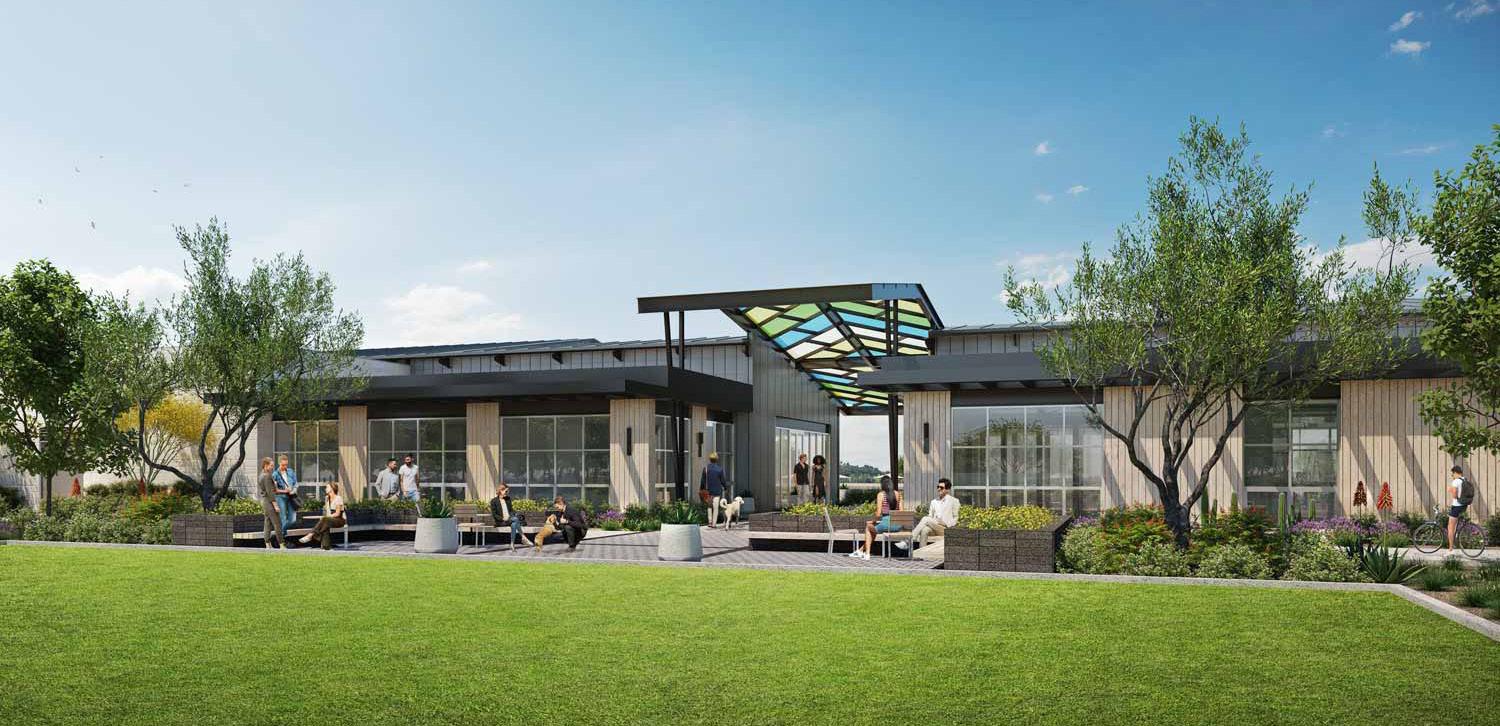
Teravalis aims to create 1.5 jobs for every home and have just as many commuters coming in on a weekly basis as we have going out. Our planning and development take a broad, cohesive view as
we work closely with local stakeholders, including our partners JDM Partners and El Dorado Holdings, to responsibly meet the needs of our community and plan for long-term sustainable growth.
The grand opening of model homes will take place in 2025. —Heath Melton, president of the Phoenix Region for The Howard Hughes Corporation
The Howard Hughes Corporation howardhughes.com Teravalis teravalis.com

Soluna Apartments is the first Choice Neighborhoods mixed-income housing development in the Edison-Eastlake Community. Holding its grand opening in October, Soluna features 177 modern, energy-efficient units ranging from one to five bedrooms. The community is designed to provide quality living at an affordable cost, with 80% of units offered as affordable housing and 20% of units available at market rate.
Centrally located at 19th St. and Roosevelt, Soluna offers residents views of Edison Park and multiple amenities including a unique art plaza, three community rooms, playgrounds, a business center, a fitness center, and green space with plenty of shade trees. Soluna is the first phase of rental housing units developed as part of a $30 million Choice Neighborhoods Implementation Grant from the U.S. Department of Housing and Urban Development (HUD) to revitalize the Edison-Eastlake neighborhood and encourage a sense of pride in the community.
Soluna, the combination of “sol” (sun) and “luna” (moon) in Spanish, received the 2022 Brian Mickelson Housing Hero Award for Outstanding Affordable Housing Initiative. The community was developed in partnership with Gorman and Company, capitalizing on transit-oriented development opportunities, deconcentrating poverty, and ensuring long-term housing affordability in this community.
“Phoenix has embarked on the Housing Phoenix Plan, which was approved by the Mayor and Council in 2020, to create and preserve
50,000 units by 2030,” says Titus Mathew, City of Phoenix housing department director. “There has never been a greater need for affordable housing than the present.”
Soluna was funded by Low Income Housing Tax Credit equity, private mortgage, Choice Neighborhoods funds and other sources of gap funding. Funding partners include the Arizona Department of Housing, Phoenix Community Development & Investment Corporation and HUD. —Mike Hunter
Phoenix industrial footprint is potentially headed for a 32% increase due to unrelenting overflow from Southern California, according to the October Industrial Report by CommercialEdge. commercialedge.com/blog/national-industrial-report

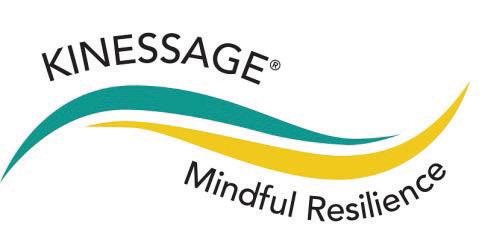


There is a meaning behind the 3, 4 and 5 in 345 Wealth Management.
3: Represents the three buckets of money where clients’ assets may be allocated.
4: Represents the four tax quadrants where assets fall, impacting how each will be taxed during each phase of the investment.
5: Represents the five strategies used to customize a plan using the buckets and quadrants to ensure clients have more time, money to do what they love.
Dillan Micus believes in systems. He also believes in breaking down antiquated systems to effect real change for the better as it relates to his own life, team and clients. This lesson, one he is putting into action today, is something he learned the hard way.
Until recently, Micus served as executive vice president of Equitable Advisors — then AXA Advisors Southwest — since 2005. The highest-ranking officer in the region, Micus helped successfully build the group from a few hundred thousand dollars of assets under management to one of the bestperforming divisions of the firm nationwide.
“I also drove myself into the ground, personally and professionally, which at the time is what I thought I needed to do to be successful,” says Micus, who continuously exceeded growth and financial goals by recruiting, retaining and supervising the best and brightest talent on the market for nearly a decade in his role. “It took years to develop processes and products while simultaneously building a company culture that attracted and retained top talent, but it was only part of the equation.”
Micus was burning the candle at both ends for years. He was also focused on everyone and everything beside himself.
“Actually, is there an option for more than both ends, because that was me,” says Micus, who was leading his firm while volunteering extensively in the community, first with the Boys & Girls Clubs and then Thunderbirds plus hosting an annual charitable gala of his own and spending all his spare time on activities outside the office.
Something had to give. And it did.
In 2017, his priorities had clearly changed so drastically that it was impacting everything else in his life.
“I had so many problems, dating all the way back to my childhood, which especially showed themselves when I drank,” says Micus, who got sober that year as a Step One toward his new life and leadership style.
As he took back control of his life and his team, things got much clearer.
“I think so many of us put business and family first, then friends and commitments, then last on the list is ourselves,” says Micus. “Once I started taking care of myself, I saw burnout, exhaustion and rapidly declining health among my team members and many of my clients, especially the outwardly hyper-successful ones.”
Over the past five years, Micus has worked not only on himself, but on a leadership and mentorship program to encourage and teach team members and even clients how to find balance as well as plan ahead and develop boundaries so

they have more time, money and energy for the things they really love.
“Earlier this year, I left my executive leadership role at Equitable after 17 years to found 345 Wealth Management, a financial services firm on comprehensive planning as it relates to the accumulation, distribution and transfer of wealth — but on my terms,” says Micus.
Team members at 345 Wealth Management can expect a FRESH perspective from Micus, literally.
FRESH, an acronym for Finances, Relationships, Education, Spirituality and Health, was developed by Micus in partnership with functional nutritionist and biometric expert Ashley Grimmel, who works with elite athletes that include Olympians, UFC fighters, PGA players and NFL stars. The step-by-step program identifies obstacles in life and provides coaching — including virtual and one-on-one time with Micus himself — to help overcome them, knowing that challenges in one area in our lives affect the others.
“I am also working to educate my team versus give them product to sell, which is a game changer,” says Micus. “I’ve spent more than 20 years understanding every single intricacy of the processes and products that impact our clients’ financial freedom, including estate planning, asset management, business continuation, qualified plans, the tax code, market conditions, client behaviors and more. In supporting and developing a new generation of specialists, we are empowering them to chart their own paths,” says Micus.
As a result, Micus’ firm grew to nearly 20 team members in its first 90 days in business. He has also launched a series of programs to help clients as well, including a tax planning strategy, given the ever-changing market, designed to help clients reduce their tax liability risk when it matters most, so they can do more of what they love, and a series of risk transfer strategies to take the pressure off clients and team members despite the current market conditions.
345 Wealth Management 345wealthmgmt.com
Dillan Micus’ FRESH (Finances, Relationships, Education, Spirituality and Health) approach to work and life is being piloted by a large university in the Southwest and a Californiabased music business. Plans are in place to launch it nationwide over the next 24 months.

His 345 Wealth Management differentiates systems for financial growth while addressing life as well by Alison Bailin Batz
SRP’s Business Demand Response (BDR) program pays participants to reduce energy use temporarily in response to peak conditions on the grid! By participating, your company can earn payments without sacrificing operational reliability, which helps strengthen the grid and increase sustainability efforts.
This could mean anything from rescheduling required maintenance to shutting off nonessential equipment when called upon and could result in significant earnings.
Our exclusive BDR provider, Enel X (formerly EnerNOC), works with customers to develop custom energy reduction strategies designed to minimize disruption in your facilities and maximize your program earnings.
To learn more about the program and all of the benefits, in addition to monetary payments, contact Eric Chang at eric.chang@enel.com or visit srp.net/BDR
An expansion of Axiom Care’s Ocotillo Community Campus, an Arizona-based addiction treatment and medical detox center in Apache Junction, recently broke ground as Medicaid managed-care health plan Mercy Care expands its services to all of Pinal County, in addition to Gila and Maricopa counties, as part of its new AHCCCS Complete Care-Regional Behavioral Health Agreement contract.
According to Vern Johnson, owner of Axiom Care — a locally owned, high-growth substance abuse treatment and recovery housing provider with locations in Maricopa and Pinal counties — construction of this larger facility means Ocotillo is a true “recovery campus,” with an emphasis on a continuum of care that has been proven to be beneficial for patients in recovery. In addition to inpatient and outpatient services, the new facility will include a gym, rec room and group therapy meeting rooms.
Along with the construction of the new building, a remodel of a third building will allow for urgent care and administrative office space. The kitchen facilities located in the Phase I property will serve the entire campus, and dining rooms will accommodate each level of care.
The center will feature 24 detox units and 36 in-recovery treatment rooms, as well as outpatient services and activities in addition to the 24 detox recovery units and outpatient operations currently housed on the campus.
The general contractor for this $5-million project is Equi-Team, with architectural design services provided by design point architects. The project is expected to be completed by the end of 2023.

“The Ocotillo Community Campus is predicated on the belief that effective and sustained recovery happens when supportive wrap-around services through all levels of care are delivered in a co-located site,” says Christine Stevens, Axiom Care CEO. “Although the first of its kind in Pinal County, this campus will provide service to clients from throughout the Greater Phoenix area.” —Mike Hunter axiomcareofaz.com • mercycareaz.org
Every 20 seconds in the world, there is a lower limb amputation due to diabetic foot complications. Every 1.2 seconds, there is an ulceration. There is no amputation without prior ulceration. After an amputation, patient life expectancy is five years; same as cancer. This is a problem of epidemic proportion that impacts the lives of many patients and their families. Diabetic foot complications cost U.S. taxpayers $17.5B a year — more than any one of the top five most costly cancers.
In my opinion, solutions, like CGM (Continuous Glucose Monitoring), are the precursors of the next generation of intelligent, truly wearable medical devices. Current medical devices are bulky, disconnected, and are often perceived by patients as a stigma that patients don’t want or cannot use in everyday life scenarios. On the other side, consumer wearables are often unable to monitor healthcare data accurately and can’t remotely measure relevant biometrics, adherence, and the activity of elderly (e.g.. gait impairment, recovery from surgery, suffering from diabetes, or neurological conditions). In the United States, 80 million people will be older than 65 years of age in the next few years according to the CDC. Through textile sensors, AI/ML algorithms microelectronics, and remote monitoring cloud software, Sensoria Health extends the reach of clinicians and delivers better outcomes for aging patients.
Thanks to our collaboration with USC Keck School of Medicine, Baylor College of Medicine, and their amazing clinical research teams, Sensoria® Core can now be used in conjunction with our own or third-party footwear. It enables us to deliver customized solutions across multiple health care scenarios.

A new breed of truly wearable, comfortable, and easy-to-use remotely monitored medical devices are finally coming to market. We think of Sensoria
Diabetic foot complications cost U.S. taxpayers $17.5B a year — more than any one of the top five most costly cancers.
as the “INTEL Inside” healthcare wearables and cloud-based remote patient monitoring solutions. We infuse everyday garments, accessories and footwear with sensors and connect them to the patient and his or her clinician. We have delivered the first AI-driven and wearable human augmentation platform that tracks patient adherence, total-body patient movement and activity — remotely and in near real-time.
Sensoria Health has delivered biometric sensor-infused smart garments and a robust Cloud/AI software platform that builds deep and differentiated clinical data assets to enable the delivery of personalized medicine and predictive analytics solutions for smart aging patients and their clinicians remotely and in near real-time.
Through embedded sensors, microelectronics, and cloud software, Sensoria Health makes sense of data and extends the reach of clinicians to deliver better outcomes for aging patients. The application of IoT smart garments and Artificial Intelligence algorithms to healthcare can automate and vastly improve patient care and clinical outcomes while drastically reducing healthcare costs and risk of rehospitalization. Beyond diabetes, as an example, we partnered with Rancho Research Institute on reducing risk of pressure ulceration for wheelchair users.
Even more importantly, Sensoria has created and delivered a product-independent, truly wearable platform that enables multiple smart tele-rehab and kinesiology solutions, including smart socks, insoles, accessories and smart shoes, which have proprietary textile sensors infused into the plantar area of the foot. —Davide Vigano, co-founder and CEO of Sensoria Health (www.sensoriahealth.com), the leading developer of Remote Patient Monitoring and Artificial Intelligence smart garment wearable solutions.
The health and well-being of your employees matters. UnitedHealthcare is here to help you guide them toward brighter days ahead. From finding new ways of controlling costs to connecting them with medical care and mental health support, it’s good to have a health plan that’s on their side and in your corner.

Riding the social commerce wave means buying and selling goods or services directly within a social media platform. This model enables customers to complete the full buyer journey from discovery to purchase without leaving their preferred apps. Small businesses can do this by turning their social profiles into a shoppable catalog and create a seamless customer experience.
Social platforms, mainly IG, FB and TikTok, are looking to really hone in on e-commerce shopping within social platforms this year to fully round out the social media experience. It makes sense because younger generations are spending considerably more time on social platforms, so having a seamless beginning to end buying process within these platforms is crucial to sales.
Pinterest and Instagram are just two examples of platforms that have created features to facilitate sales through Pinterest’s Product Pins and Instagram’s Product Tags that allow for users to purchase the product they’re looking at through the app. The platforms are ahead of the game, as social e-commerce sales are expected to surpass $600 billion by 2027. Because of this, the entire customer purchasing journey must now be tailored to fit the e-commerce features of social media platforms. Gone are the days of searching for outside websites to make a purchase.

To create a successful sales funnel, companies must first create a social presence that is credible with their audience and have a knowledge of what their audience is looking for. Although larger businesses might have an initial leg up in the e-commerce space, it really is tailored to favor smaller businesses. Some ways small businesses can accelerate their growth via e-commerce are choosing a niche, creating trust amongst a targeted audience with knowledge and credibility, and meeting the audience where they’re at. —Candie Guay, co-founder and creative director of Scottsdale-based Envida (envida.com), the nation’s leading multifamily creative agency
Research indicates that by the end of 2022, humans will produce 94 zettabytes of information. Ever heard of a zettabyte? It’s the equivalent of one trillion gigabytes — basically, a number with 21 zeros behind it…that’s a lot of data.
But extracting tons of information doesn’t guarantee that companies can harness its power to better understand their business. This is where data visualization can become a company’s greatest competitive advantage. Other organizations are already realizing its power, capitalizing on the space, which is set to grow at a rate of 10.4% annually, reaching $19.25 billion by 2027.
A business can’t manage what it can’t see, and data visualization helps to analyze databases and spreadsheets by seeing them pictorially — be it with charts, plots or maps, among many other representations. This is quickly becoming the firstrate solution in driving better business decisions, allowing stakeholders to assess the health of a company and where it can grow.
To start, project leaders need to identify the questions they’re trying to answer, and the data literacy they or their department may have. So, let’s explore how to become experienced in data visualization.
A dashboard is a data viz term indicating a homepage of sorts, where the visualizations will live. The inception of these dashboards depends on their initial purpose, whether to explore or explain the data. Here are some examples:
• Exploring: Spotting anomalies in processes through visuals, or realizing why a product is selling better during a specific season.
• Explaining: Visually getting a message across to stakeholders, such as quarterly reviews, or monthly and daily performance reports.
Depending on this, teams can deliver a dashboard once or update it as many times as needed. Typically, an exploratory dashboard is delivered to an audience one time, and an explanatory one changes depending on how frequently the information requires updating.
Initially, the advantages of data visualization might not be obvious to everyone, but presenting information in this way can help companies uncover patterns of success and pain points, improve performance or even design more effective business strategies. Its power also comes from the ability to convey a message to an
audience, whether it’s a CEO, an accountant, the marketing team or a store manager.
A data journey is where a business is at, regarding its data collection and usage. Maybe the information is kept in binders, cluttered spreadsheets or a digital database.
To evaluate where a company is in its data journey, managers must find out where data is stored, who handles it and whether the organization’s current solution effectively addresses their questions. Digitizing data is a necessary step in order to migrate it to a visualization platform. Additionally, knowing how the audience will view and interact with the data viz dashboard will clarify this process. Will it be consumed as a static PDF, on a mobile device, on a laptop?
To centralize the process, managers should decide on a project leader who can learn the ropes and be in charge of future data visualization tasks. A good suggestion would be to appoint whoever is already familiar with the information and has a fair amount of data literacy.
After the information is stored digitally and someone has been delegated, project leaders should explore the data visualization platforms available. Options range from costly and flexible, to free and more rigid. The choice depends on the company’s priorities and capacity.
The designing and coding part of the process will come with training, in which workshops can be essential. There are also many online courses and YouTube tutorials to gather the fundamentals.
Another option is to outsource the project to a data visualization agency. Agencies can both deliver dashboards to the business as well as offer training services to educate clients and upskill employees, supporting an organization’s data visualization journey.
Those who stick with data visualization will find it offers new angles and valuable insights into their businesses. And after these first steps are done, the creation phase can even be quite enjoyable and rewarding. —John F. Bremer Jr., CTO and chief of business development at LiftedViz (www.liftedviz.com), a data visualization consulting agency helping businesses thrive with data
What’s the best data visualization platform? Microsoft Power BI? It comes with Office 365 Enterprise, so it’s convenient for those using it! Tableau? The leading data visualization platform, it can be connected to almost any data source, but a bit costly. Google Data Studio? Perfect on a budget: free to use and works best with data from Google-based platforms.




Each year, we select top leaders who have had great successes in the past year. This year we selected 19 leaders in many established sectors within our business community. We asked some hard-hitting questions of these leaders to get a sense of what they see for 2023. Each of them is truly entrenched in growing their companies and our economy, in developing policy, managing people and growing business through innovations that have had a positive effect on our business community.
Each was asked the same questions on the subjects of their effective management style, the impact of COVID-19 disruption, what we can do to empower economic growth, and how their organization’s future will impact our economy.
Their answers are intriguing, thoughtful and certainly inspiring as we move into this new world of business we find ourselves in.
Q:What most notably stands out about your leadership style or what is an example of leadership success you can share with our readers?
I commit wholeheartedly to Carol Dworkin’s philosophy of the Growth Mindset. I fail regularly and make every effort to share my reflection and iteration with those around me. I endeavor to create a space in which others feel safe to do the same. Owning your failures means owning your success too, and this type of accountability encourages confidence in others.
What impact has COVID-19 or the disruptions of the past 18 months had on you as a leader?
It will not come as a surprise to many that I founded Read Better Be Better because I care deeply about, and passionately believe in people. I do this work because I know when resources are equally distributed, then all children will have the opportunities for self-actualization that my privilege has afforded me. Only then will we all thrive.
As we emerge into a ‘post-pandemic’ world, so much of the trauma continues, particularly in the under-resourced communities with whom Read Be Better works, but instead of a broader narrative of grace and compassion, there is frustration and anger.
Most importantly, we knew the children and families we exist to serve needed the critical programming Read Better Be Better provides more than ever, so, I came back to the program. Because of staff shortages (yes, we certainly had those, too), I had the opportunity to run Read Better Be Better’s program several times at different schools across our 10 Elementary School Districts. What an absolute joy it was to be back on campus and witness the unfailing resilience, grace, and boundless potential of children. And every time, it was both the emotional lift and the kick in the rear I needed to find new ways to meet the demands of the moment.
Because of a relentless commitment to excellence and kindness, Read Better Be Better provides the resources and fosters a safe space for children to make moments of magic by reading together. And so, we give ourselves a moment of grace and space to breathe. Then we lean on each other and grow stronger, knowing the need and the demand increase by the day. It certainly hasn’t been easy. And with renewed courage and commitment, we are daring greatly.
The challenge has also been to support my team to stay healthy, happy, and motivated as they work through their own feelings and responses to this environment.
While I certainly don’t have the answer, a commitment to inclusive decision-making has transformed our organization. We take more time for and with each other. And with our partners and stakeholders. This undoubtedly makes us stronger.
Name of Leader: Sophie Allen-Etchart
Position of Leader: Founder & CEO
Organization Name: Read Better Be Better
No. of Years with Organization: 8
Economic growth will come when we adequately educate the next generation.
My heartfelt plea is for those in the business community to make time to go into their local schools and seek to understand, without judgment, their strengths, and their challenges. Develop and foster productive partnerships to generate long-term educational and economic gains for Arizona communities. In doing this, I think the community can work together, in powerful solidarity, to achieve 3 principal goals:
1. Create resource-rich public schools from which students graduate with the agency, passion, and skill set to successfully augment the local and state workforce.
2. Increase the understanding of public schools as cornerstones of democracy and economic vitality within communities.
3. Create sustainable, high-impact relationships between public schools and local businesses.

Also, businesses can consider flexing their business model to serve a marginalized population - looking beyond short-term profit to longer-term investments. Poverty is inextricably linked to education outcomes – when resources are equally distributed, we will ALL thrive.
We know that students who don’t read at grade level by the end of 3rd grade are 4x less likely to graduate high school. We know that, at present in Arizona, only 35% of students are reading at grade level by the end of 3rd grade. If we don’t act immediately, this will devastate Arizona’s future economy.
Read Better Be Better is working with a funder to better understand our Total Addressable Market. With this information, we can expand our vision to include all students.
Given that students who participate in Read Better Be Better continue to significantly outperform the 3rd grade average on standardized reading comprehension tests, that will have a discernable impact on the resilience, opportunity, and productivity of our whole community.
Main Local Office Address: 4730 W. Campbell Ave. Phoenix, AZ 85031
Phone: (623) 404-6022
Website: readbetterbebetter.org
Number of offices in Greater Phoenix: 1 office, 67 program sites
Year Established Locally: 2014
City Nationally Headquartered: Phoenix
What
we

Q:What most notably stands out about your leadership style or what is an example of leadership success you can share with our readers?
My aim in leadership style is to be collaborative and open with the intention of being a servant leader in giving big paralleled with setting big expectations –from that, you’ll see big things in return. We make our business values real and relatable to our team and driven by connecting them as actions to performance measures and in how we make any business decision. One example is asking our team to carry a big vision, make that vision to think big and then ask what it takes to bring it to life. We did this at close of 2021 with everyone in our agency and at close of 2022 we exceeded our business plan by an additional million dollars in growth – all built on the success of dreaming and acting big. As we achieve those goals, we make sure we give back and believe there is a stronger sense of purpose and connection to work if you are giving back to the community. It’s a full circle, return on dreaming big and giving back.
What impact has COVID-19 or the disruptions of the past 18 months had on you as a leader?
The biggest learning has been around resilience. This year we called this our year of seeing new opportunities and rebounding from the setbacks since 2020, but to rebound we also needed to revitalize and take time to recover –allowing for conditioning, connection, and healing to take place. Change and disruptions are not going away, but how we are mindful of needs and how we recover and show up for one another in different ways builds more resiliency and opportunity to make it through the next set of challenges.
My hope and what I strive for is to always be willing to listen and be adaptive in any situation – being open, humble, and being present goes a long way as leaders and in leading across so many teams, clients, multiple offices outside Arizona and community partners requires you as a leader to take more time. The more personalized the connection, the more meaningful impact.
What do you feel we can be doing as a business community to empower economic growth here?
To empower economic growth, we need to showcase and build upon the opportunities ahead for Arizona by being connected as a leaders in the business community to drive those opportunities across all levels and sectors. I’m personally involved with both local and national organizations in terms of workforce development and inspiring new generations to embrace many industries and especially finding paths and their passion in work and the community in Arizona. We have tremendous potential in this state
Name of Leader: Matthew Clyde
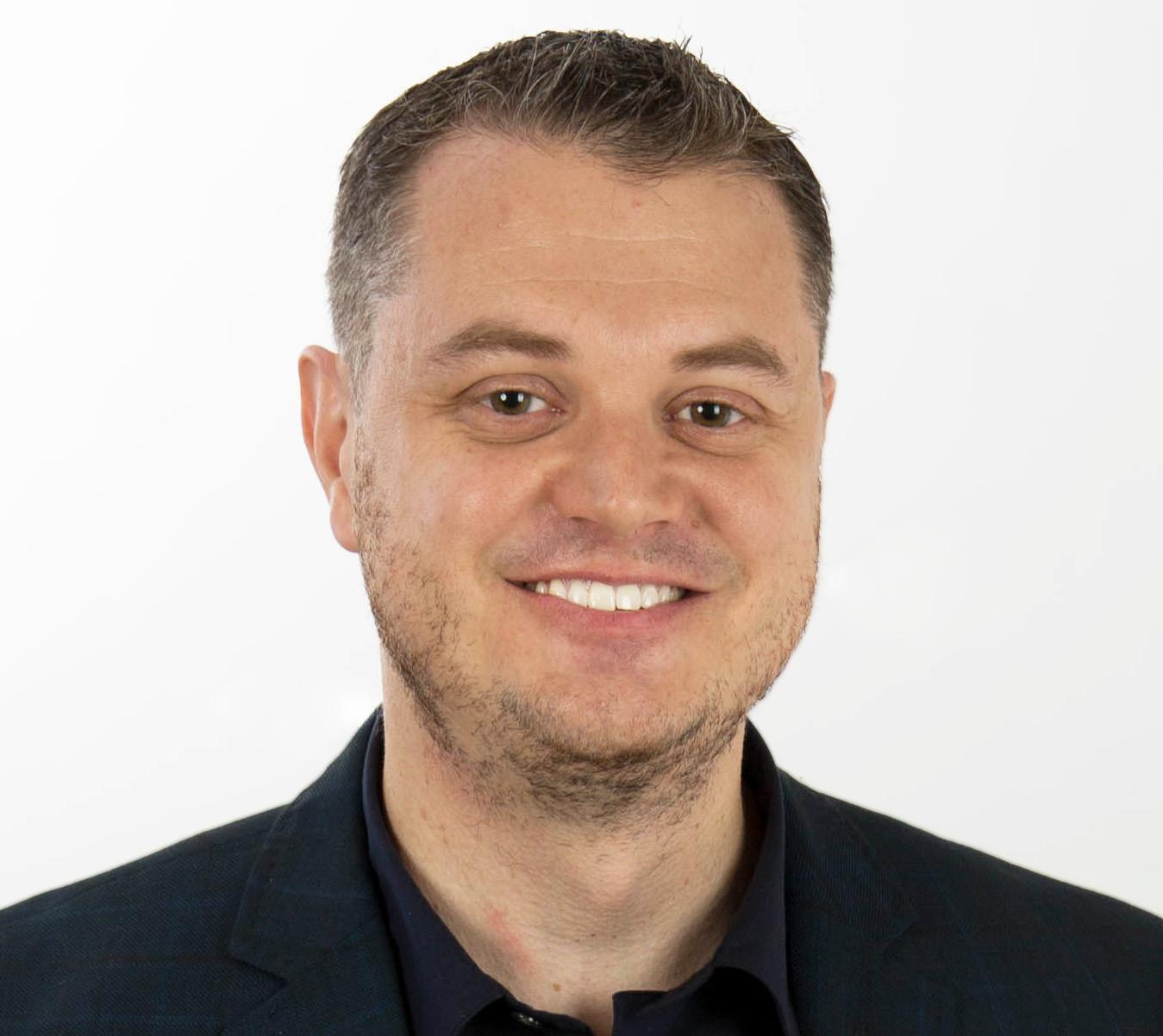
Position of Leader: President & Founder
Organization Name: Ideas Collide
No. of Years with Organization: 17
but have a lot of work to fully reach that potential. It requires showing up, listening at all levels, and participating in knowing what GPEC, the Greater Phoenix Chamber, the ACA, the Arizona Tech Council and other entities that are actively working daily to shape and influence economic development are envisioning and doing – then knowing what we as business owners and leaders can do to support to make impact. From there we need to fully partner to help meet that vision. It requires constant investment in coming to the table actively working together on solutions. One area I am most proud to support is recent giving with impact that further builds on economic development via Local First and their We Rise initiative and Fuerza Local program which supports black entrepreneurs and Latin/Hispanic business owners through education and mentorship programs. Along with the incredible workforce efforts and actions taken on by the Greater Phoenix Chamber Foundation towards education through the ElevateEdAz program. There are endless opportunities to participate, support and build a stronger economy and opportunities for more Arizonans if we all work together.
What is new and notable for your company’s near future that will impact our economy?
We know that students who don’t read at grade level by the end of 3rd grade arWe are seeing new opportunities and expanding in marketing technology, brand development and content marketing that are attracting new business both inside and outside the state. This includes helping build a market vision for advance manufacturing. Building workforce development positioning in the construction industry. Working with incredible startups like botco.ai and exciting growth brands like Fresh Cravings and Danzeisen Dairy. We’ve been fortunate to work with impactful brands building opportunities further in Arizona and across the nation in health, wellness, behavioral health and medical technology.
We have many clients across the nation and globally working with us that are further helping put Phoenix and Ideas Collide on the map for the future.
Main Local Office Address: 6125 E. Indian School Rd., Suite 1001 Scottsdale, AZ 85251
Phone: (480) 659-4520 Website: ideascollide.com
Number of offices in Greater Phoenix: 1 in Scottsdale + 1 Podcast “IC Streaming” in Downtown Phoenix
Year Established Locally: 2005
City Nationally Headquartered: Phoenix

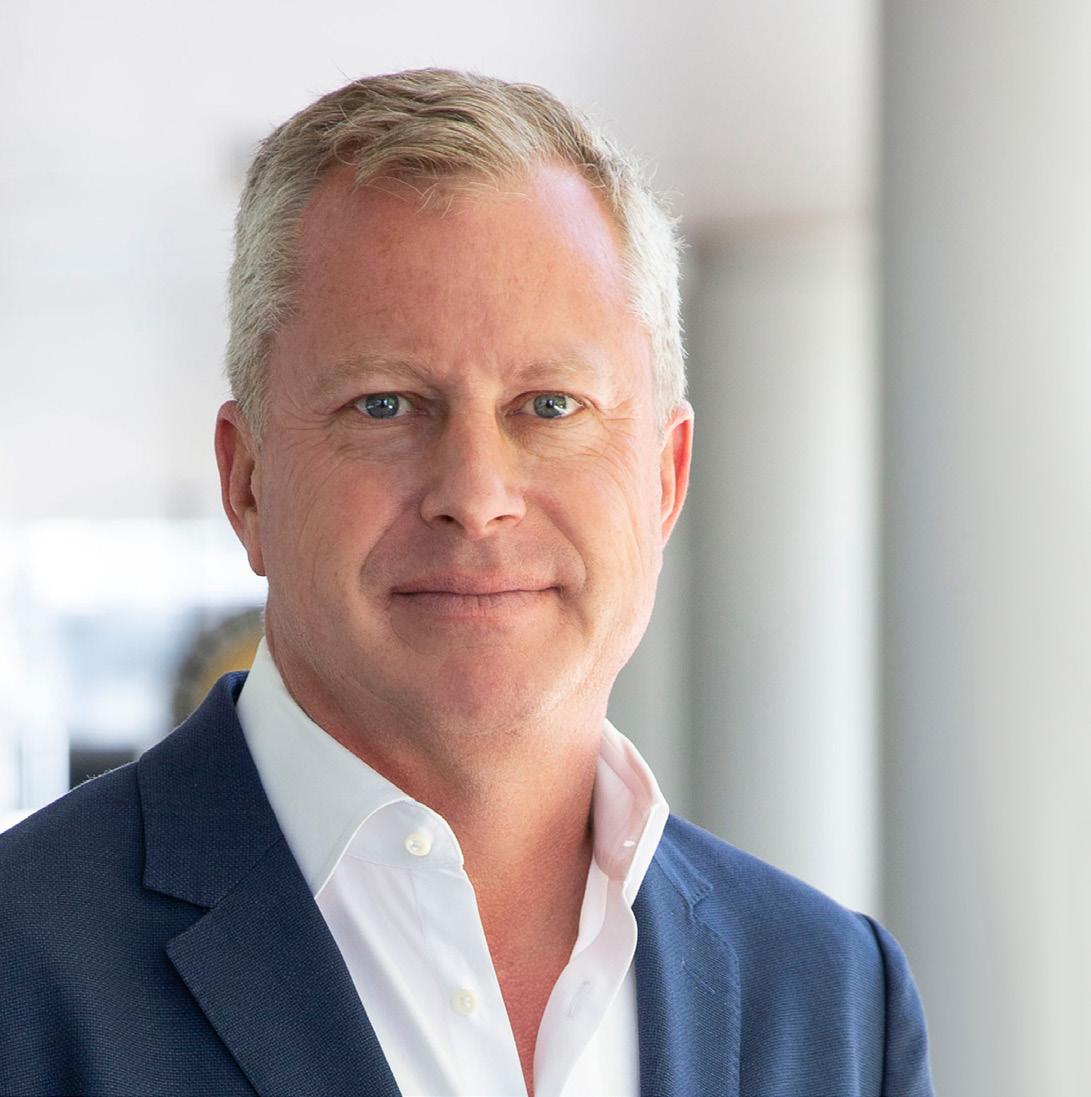
Q:What most notably stands out about your leadership style or what is an example of leadership success you can share with our readers?
At RED Development, we have created a highly successful flat organization where everyone plays a valuable role and we do not have any full-time managers. I practice leading by example because selfmotivated individuals thrive in our culture and building up strong leaders is key to success in the development industry. Our team is quick, decisive and they take ownership in the decisions that they make. Our company has the ability to accelerate or slow down based on current market conditions, and I empower our team to have the freedom to pivot or change course if need be.
Creating an environment of trust is one of the elements I am most proud of; we wouldn’t be able to execute at the level that we do if the team didn’t know that we have the utmost confidence in them and their skills. While not every idea will be successful, being able to fearlessly learn from mistakes and trusting they will be supported along the way makes all the difference.
What impact has COVID-19 or the disruptions of the past 18 months had on you as a leader?
In the past 18 months, COVID-19 has motivated us to greatly grow and develop our leadership team because we recognized that managing through this pandemic was too great a burden for only a few people to bear. Post COVID, we have continued to keep that expanded leadership team together and we are a better company now because of it. We have a culture that values being together, but we also recognize that our team needs flexibility and we have settled on a Monday through Thursday in-office program with a remote workday on Friday.
As a leader, I’ve always been of the mindset that it is a privilege to guide people through their career and help them grow. While COVID-19 certainly presented new challenges and we were all navigating unchartered territory together, I leaned into the opportunity to focus on how to best steer our team through challenging times.
What do you feel we can be doing as a business community to empower economic growth here?
Overall, I think the state has done a good job of promoting economic development through fair taxes and policies. However, the business community needs to provide better leadership at the local level. Arizona promotes being a business-friendly state, yet a number of cities are currently struggling to provide the services necessary for growth and that results in avoidable hurdles. To truly empower economic growth, the business community will need to band together on those efforts. Resources
such as leadership training, networking opportunities and business development tools are instrumental on the path to growth and creating economic value for the entire community.
What is new and notable for your company’s near future that will impact our economy?
We continue to experience a very strong demand for our product. Tenants and their employees, along with customers, lenders and investors, all value retail-led mixed-use projects. Due to this, RED Development currently has a number of major projects that will have a significant impact on the local economy, including The Grove at 44th and Camelback and PV.
The Grove, a $500-million, 750,000-square-foot mixed-use destination, is located at one of the most high-profile intersections in the Valley. It features a four-story Class-AA office building; two restaurants; two additional two-story office buildings; a self-storage facility by Hibernia Capital; a covered parking structure; a luxury apartment building by StreetLights Residential; and the highly anticipated hotel by restaurant innovator Sam Fox, The Global Ambassador. The Grove is also home to the new Phoenix Suns and Phoenix Mercury private training facility that opened in late 2020.
PV is the redevelopment of the beloved Paradise Valley Mall, which will turn the 100+acre site into a mixed-used destination with phase 1 to include a 400-residence luxury apartment building by StreetLights Residential, Whole Foods Market, a new Harkins dine-in luxury theater concept, upscale restaurants, an expansive 3+acre central park and community gathering place, and more.
Name
Main Local Office Address: 1 E. Washington St., Suite 300 Phoenix, AZ 85004
Phone: (480) 947-7772 Website: reddevelopment.com
Number of offices in Greater Phoenix: 1
Year Established Locally: 1995 City Nationally Headquartered: Phoenix
Q:What most notably stands out about your leadership style or what is an example of leadership success you can share with our readers?
Times of crisis and change require a sense of calm and clarity. More often than not, clients describe my personality as calming, which is an innate characteristic. So, it was easy to build ARG’s foundation on being the peace in the middle of chaos.
As the CEO of a change management consulting firm, I try to remain curious, listening first before initiating action. Next, I seek to understand the vision — where are we headed? Then, I look for purpose — why are we doing what we do? Here’s why:
• If no one is listening, confusion will ensue.
• If there is no vision, we can’t measure progress.
• If there is no purpose, we are aimlessly moving about.
Clarity and purpose are engrained in the culture of ARG.
As a leader, I try to remain future-focused and people-centric. So, I would say that my leadership style is a mix of servant and transformational leadership.
ARG’s philosophy is to Align, Redefine and Grow through change. My approach has benefited not only ARG’s growth but also the growth of our clients.
What impact has COVID-19 or the disruptions of the past 18 months had on you as a leader?
There are opportunities in every situation. As leaders in our homes, communities and businesses, we have to be open to seeing those opportunities and courageous enough to take action. I believe that has been the most prevalent lesson for me over the past 18 months.
However, during seasons of change, people tend to focus on what is being lost, losing sight of what could be gained. This leads to missed opportunities. Instead, we should focus on maximizing our time and energy toward something productive.
Change as drastic as the one that we just went through also reveals gaps in society. COVID-19 and the social unrest presented new opportunities for me to make a bigger impact on the business community, allowing ARG to support corporations with developing supplier diversity initiatives, cultivating psychologically safe work environments, and supplementing DEI efforts. I also started a nonprofit to create parity for woman- and minority-owned businesses.
Advocacy is crucial during change. COVID-19 helped me, as a leader in change management, elevate my platforms and my voice to support a more inclusive ecosystem.
What do you feel we can be doing as a business community to empower economic growth here?
Economic studies show that small businesses are the backbone of our society. As small businesses grow, they hire within and also give back to their communities, driving economic growth. Yet, we continue to see minority-owned businesses lag behind in both revenue and workforce
Name of Leader: Angela Garmon
Position of Leader: Founder & CEO
Organization
growth. Why? Because minorities continue to face more barriers to entry. We lack access to decision makers and capital, according to the 2019 “State of Women-Owned Businesses Report” from American Express.

My own journey in business ownership encountered barriers. For example, a supplier diversity professional asked me if I had ever considered changing the face of my organization. They went on to say that people are used to doing business with others who look like them. Imagine what isn’t being said.
As a business community, we can continue to advocate for a divers businesses in our ecosystem. Collective advocacy will empower economic growth across the state, seeking to find equitable solutions and removing barriers for diverse business owners.
If we can change the culture for homogenous environments, we will, in return, empower economic growth.
What is new and notable for your company’s near future that will impact our economy?
ARG is committed to cultivating the business ecosystem. Whether our clients are small businesses looking to grow and expand into corporations or corporations seeking expand their efforts in DEI and supplier diversity initiatives, ARG is here to assist.
Over the past year, I have been hyper focused on business growth and diversification. I have built a strong bench strength of collaborative partners and look forward to expanding our workforce in 2023. The plan is to continue diversifying our portfolio into utilities, construction, and government sectors, as they roll out their change management initiatives.
As a firm, ARG will build out services that focus on creating lean learning environments, ensuring our clients maximize their investments. We will continue to work hard to understand our clients’ needs and offer customizable solutions to meet those needs. We will build upon the efforts that we started this year, providing stronger support and services in the areas of DEI, developing supplier diversity programs, and cultivating psychological safety in the workplace.
Main Local Office Address: 4858 E. Baseline Rd., Suite 109 Mesa, AZ 85206
Phone: (480) 442-9841
Website: argccgroup.com

Number of offices in Greater Phoenix: 1
Year Established Locally: 2016
City Nationally Headquartered: Mesa, AZ

Q:What most notably stands out about your leadership style or what is an example of leadership success you can share with our readers?
Over the past 18 months, our world has seen heightened volatility through the pandemic/retirement, political issues and other uncertainties. I am a firm believer in building a foundation of authentic leadership through transparency in decision making. These priorities help in establishing realistic perspectives as well as expectations that can empower others to increase their ownership in an organization’s shared purpose. These fundamentals often generate a culture of stability in times of unrest. I want to continue to empower the extraordinary team that surrounds me as Maricopa continues to thrive during this difficult time for our students, our faculty and our community.
What impact has COVID-19 or the disruptions of the past 18 months had on you as a leader?
As you might imagine, the COVID-19 pandemic provided unprecedented difficulties for our staff, students and faculty. I am proud of our system’s ability to successfully transition 96% of our classes to remote learning while utilizing the college space available for testing and vaccine delivery. I am unbelievably proud to have led our amazing team to quickly adapt to
the existing situation, ensure our students and faculty were protected, and identify additional ways to provide assistance for our community.
What do you feel we can be doing as a business community to empower economic growth here?
As Maricopa County is the largest growing county in the nation, we have seen incredible expansion in industries like semiconductor manufacturers, battery manufacturers, and electric vehicle producers. Recognizing this growth as well as the suppliers that feed these employers, our System acted quickly to establish innovative partnerships and training to meet this extensive workforce vacuum. For example, Maricopa’s new Semiconductor Technician Quick Start is a two-week bootcamp-style program expedites workforce development for our students to quickly begin their employment as a semiconductor manufacturing technician. Maricopa is always looking to establish additional partnerships with companies and industries in need for our students.
What is new and notable for your company’s near future that will impact our economy?
Beginning in 2023 with our newly approved HLC accreditation, our System will be the first in the state offering our students the ability to pursue seven bachelor’s degrees in key industry sectors that include information technology, behavioral science and elementary education. Maricopa Community Colleges is the largest workforce development provider in Arizona as well as the cheapest opportunity for four-year degrees for students who might not be able to afford them, have access to them or desire to attend a large university. As the state continues to grow rapidly, adding these employees to the workforce will be imperative for our continued growth.
Name of Leader: Dr. Steven Gonzales
Position of Leader: Chancellor
Organization Name: Maricopa County Community College District


No. of Years with Organization: 10
Main Local Office Address: 2411 W. 14th St. Tempe, AZ 85281
Phone: (480) 731-8108 Website: maricopa.edu
Number of offices in Greater Phoenix: 10 Colleges Located in Maricopa County
Year Established Locally: 1920 City Nationally Headquartered: Phoenix
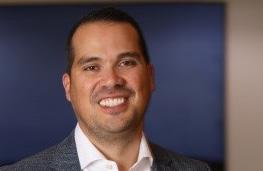
Q:What most notably stands out about your leadership style or what is an example of leadership success you can share with our readers?
Fennemore’s greatest strength is its people. I’ve seen that first hand since I started at the firm as a summer file clerk when I was 19 years old. In my current role, I have the great fortune of collaborating with talented, smart, caring people throughout the firm. Together, we focus on understanding market trends and the steps we need to take to prepare for tomorrow. It’s this mindset that has allowed us to adapt to a period of rapid change, thrive in the face of difficult market conditions, and position our 137-year-old firm for what’s ahead.
Our vision for the future involves strategic growth. Over the past two years, we’ve doubled in size — adding nine offices around the western United States. Our growth revolves around taking the steps we believe are needed to better serve clients with a deeper bench and greater resources. We’re thrilled to see the number of lawyers and legal professionals who share our values and vision for what’s possible in a law firm and have decided to join forces with us.
We also have significantly increased the investment we make in our people. We’ve spent considerable time launching initiatives focused on professional development, leadership training, DEI, internal career progression, mental health and much more. When our people are strong and feel fulfilled at the firm, they will be happier and do their best work.
It’s our consistent focus on the future and our people that has, in my mind, contributed to industry-leading job satisfaction and retention statistics. We want Fennemore to be a place where the most talented legal professionals want to practice for their careers.
What impact has COVID-19 or the disruptions of the past 18 months had on you as a leader?
COVID changed the game for law firms —adding rocket fuel to a series of changes that were already underway.
For us, COVID has caused us to reevaluate how we work and deliver legal services. Hybrid may grab the headlines, but it’s just the tip of the iceberg. Last year, we launched a new strategic plan that focuses on deploying new technology, workflows, communication systems, training programs and ways of practicing.
The law is a precedent-driven profession, where attorneys and legal professionals often look backward to determine how to move forward. COVID taught us that by sensing, seeking and seizing opportunities, Fennemore can further fortify its position as a market leader.
At Fennemore, finding these opportunities means systematically evaluating how we operate internally, looking at best practices, and exploring what works in other industries. We do this in formal and informal ways that allow us to use pilots and controlled experimentation to see which of our ideas take hold and which need to be collaborated. We embrace
Name of Leader: James Goodnow
Position of Leader: CEO
Organization Name: Fennemore
No. of Years with Organization: 22
a learning mindset that I believe is unique among law firms and has helped us pull ahead of competitors.
What do you feel we can be doing as a business community to empower economic growth here?
Empowering economic growth within the communities we serve is a core firm value. Our lawyers and legal professionals pursue this goal in the work we do representing leading businesses, and in the time they devote to pro bono community support — taking leadership positions in organizations and working with others in the community to help realize a vision for a more vibrant local economy.
To realize meaningful economic growth, the key is communication and collaboration. That is true across industries and also between the public and private sectors. We’ll never unlock our full potential unless we listen and coordinate to work toward the same vision.
What is new and notable for your company’s near future that will impact our economy?
Since our founding in 1885, Fennemore has been at the epicenter of economic and business growth in our markets. That is part of our DNA. We have a lot on deck in 2023. Here are a few highlights:
Growth: Fennemore was named the fastest-growing law firm in the U.S. in 2021, and we appear to be on pace to repeat in 2022. I would foresee continued growth that supports our clients and market position.
Supporting emerging businesses: We also intend to amplify the work we do for emerging businesses in all our markets, including through our Venture Accelerator that supports startups that are often growing technology-based businesses. These are the businesses that are pursuing the ideas that will change how we all do businesses — and certainly contribute to economic growth.
Sustainability: Sustainability will be a top priority for Fennemore going into the new year, and we’ll make investments in the firm and community by setting up an infrastructure that allows us to meet our obligations to the community.
We have a deep commitment to giving fuel to the economic engines that power our markets — both in the work we do and in our direct community and civic involvement. That won’t change in 2023, and in fact we only see it accelerating.
Main Local Office Address: 2394 E. Camelback Rd., Suite 600 Phoenix, AZ 85016

Phone: (602) 916-5000 Website: fennemorelaw.com
Number of offices in Greater Phoenix: 1
Year Established Locally: 1885
City Nationally Headquartered: Phoenix

Q:What most notably stands out about your leadership style or what is an example of leadership success you can share with our readers?
I started at Courtesy Chevrolet as a retail salesperson right out of college 26 years ago and rose through the ranks to assistant used car manager, director and general manager. When I took over as CEO, I established an autonomous group of general managers and opened four new dealerships representing Chevrolet, Kia, Chrysler, Dodge, Jeep, Ram, Volvo, Isuzu Truck and Polestar brands. We’ve increased revenue 331% since I took over and will see more than $1 billion in sales in 2022. I learned a lot from my grandfather and father about leadership — treat people like you want to be treated; this has helped me hire and retain teammates.
I attribute much of our success to a deeply held personal philosophy called “The Courtesy Way.” It’s my commitment to our people and it teaches them how to treat our customers, so we gain their lifetime loyalty. The Courtesy Way is also our approach to hiring as we dig deep into the communities located around our five central and east Valley stores to find employees who, themselves, are vital members of the communities we serve. I’m proud that many of our employees are Hispanic, female and military veterans and I’m gratified that many new hires come on because a family member or a friend used to work at Courtesy.
What impact has COVID-19 or the disruptions of the past 18 months had on you as a leader?
As a family-owned business in the Valley since 1955, we like to be on the leading edge and play the long game. While we’ve all been impacted by the disruptions over the past 18 months, Courtesy Automotive Group has taken that time to evolve. As an essential service provider, we never shut down. Like others, we had some challenges with low inventory levels, staff shortages, and finding new ways to connect and work with customers. What we realized is that our staff are the most important part of bringing us through this. We strengthened our training programs, empowered our staff with expanded career paths, developed new apprentice programs and really grew our team. We have come out of these challenging times as a stronger organization.
What do you feel we can be doing as a business community to empower economic growth here?
When I look at the car business, I think the best way we can empower economic growth is to empower our employees to adapt because the speed of technology impacts everything. The way cars are made is changing. Traditionally, car engines have had hundreds of parts for our mechanics to master and repair. As the industry moves steadily toward electric motors, we are retraining our mechanics to use laptops instead of tools to keep
Name of Leader: Scott Gruwell
Position of Leader: President & CEO
Organization Name: Courtesy Automotive Group
No. of Years with Organization: 26
EVs on the road. As we invest in our people so they can help move Courtesy into the future, we, as a business community, should commit to more local investment in training and development to increase skill levels. This is especially important in more difficult economic times.
What is new and notable for your company’s near future that will impact our economy?
Just as the technology in cars is evolving at a rapid pace, the way people buy cars is changing. The pandemic taught many of us that through technology we can speed up the process and deliver a vehicle to your door so you can experience physical environments virtually and feel comfortable making big purchases digitally. We now have the showroom of the future, complete with augmented reality technology enabling a unique digital/ physical car-buying experience like most have not seen before. This includes test drives on your schedule in your environment. We’ll bring the car to you. In addition, EV adoption means a huge focus on training and technology upgrades at every store. The laptop will become the wrench of the future. We are fully committed to automotive retail across our gas, hybrid, plug-in hybrid and EV brands.
This past spring, we became the only family-owned Arizona auto group to have a dedicated, 100% electric vehicle store with our Polestar Scottsdale location at the Scottsdale Fashion Square. I believe EV adoption will grow over the next 18–24 months. What’s important to me is that, unlike our EV competitors, we can deliver our affordable, luxury Polestar 2 vehicles the same day they are purchased right here in Scottsdale. It’s a real differentiator for us and we are proud to lead the industry in that way.
Main Local Office Address: 1233 E. Camelback Rd. Phoenix, AZ 85014
Phone: (602) 892-3352 Website: courtesychev.com
Number of offices in Greater Phoenix: 6
Year Established Locally: 1955
City Nationally Headquartered: Phoenix (there is also a Courtesy Chevy in San Diego)

Q:What most notably stands out about your leadership style or what is an example of leadership success you can share with our readers?
No filter. Tell it like you see it. After placing more than thousands of people on boards in the past 15 years, leaders want leaders who will tell them what they “need” to hear versus what they “want” to hear. This philosophy has directly benefited my company because of truly — I mean truly — moving the football down the field for our clients.
Trying to pinpoint a style of leadership was tough for me. I think it stems back to my childhood. I am number 10 of 12 children and lived in Asia for four years with different sets of siblings. You must learn to get along with the family unit, which probably started my style. I learned to truly love other people to the core started with my family. I use the term today of being a mile wide and a mile deep with relationships. After an incredible career in healthcare from clinician to administrator and leading a billiondollar organization with 13,000 employees, myself and my staff dealt with thousands of people on the worst day of their life, and our job was to make it just a little bit better; it was always about patient care. Then, serving on a huge hospital system board as chair that was doing $37 billion in revenue 16 years, it always came back to people and learning to love others. This is what I cut my teeth on when I started Board Developer, serving and loving others. I believe if you work hard, you get lucky, and I’d rather be lucky than smart.
What impact has COVID-19 or the disruptions of the past 18 months had on you as a leader?
The largest impact for our business was trying to navigate board meetings remotely and making decisions to bring people on boards without ever meeting them. Now, with people expecting to either work remotely or a hybrid model, we need to make sure people actually have the ability to work remotely. About six months into the pandemic, I wrote an algorithm that took our assessment results and compared it to thousands of people to assess their ability to function well in a remote environment. We are now still proving the hypothesis, but the results have been astonishing. Simply put, some people are not wired well to function in a remote working environment while others thrive. This tool has been the result of the pandemic and it has become a game changer for our clients as they are now able to assess this ability or lack thereof prior to hiring.
What do you feel we can be doing as a business community to empower economic growth here?
All too often, we live in our personal and professional bubble. If we are going to truly impact our economic growth, we have to lean in and think outside our comfort level. Get involved with activities that you can provide your professional acumen to make a difference. Just think, if every one of us engaged on one more activity by serving a nonprofit, coaching a leader
Name of Leader: Jim Hayden
Position of Leader: Founder & CEO
Organization Name: Board Developer
No. of Years with Organization: 15
or working with a for-profit board of an organization with the motivation to improve economic growth within our community, imagine what kind of impact we could have. We can’t do it if we don’t try.
What is new and notable for your company’s near future that will impact our economy?
Hiring right. We have actually cracked the code with predetermining a formula to determine fit for role and fit for culture. With remote or hybrid working, we can now determine if your new hire can actually work remotely before you hire them. And from a culture perspective, we can empirically determine fit with the team before they start.
A couple of people who are very familiar with the new or existing role take an assessment to future determine fit for role and fit for culture. Once you have determined a few finalists, you simply ask them to complete a different assessment to see how they are going to fit within the team. We have been providing this tool for years for our clients and not one time has a potential employee declined taking the assessment.
While I believe the résumé, interview and references are vital and you can determine a tremendous amount of knowledge, we believe that’s only about one-third of the selection process. The last two-thirds are fit for the actual role within the organization and fit for culture within the leadership and team. After watching this evolution for years, the profound impact now is immeasurable. If you hire right the first time, you will save thousands of dollars and hundreds of hours.
At a board level with our clients, our largest continued impact are aha moments in board meetings. These are those nuggets that move the needle with an organization. Having been a witness to these events for decades, watching our clients grow because of these meetings provides such a motivation for our entire team.
Main Local Office Address: 120 E. Rio Salado Pkwy., Suite 303 Tempe, AZ 85281

Phone: (602) 803-5000
Website: boarddeveloper.com
Number of offices in Greater Phoenix: 1
Year Established Locally: 2007
City Nationally Headquartered: Tempe, AZ
Q:What most notably stands out about your leadership style or what is an example of leadership success you can share with our readers?
For me, being an impactful leader is a choice I make every day. We are all pulled in so many different directions, it’s critical to prioritize and balance!
I adapt my style to the priorities directly in front of me. Some days, I’m in strategy or industry partner meetings planning for future AOT initiatives and programs to continue the success of Arizona’s tourism industry. On other days, our grants team might have 50 grant applications to be reviewed and assessed, so I prepare to buckle down and do that. And on still other days, I might need to jump in and help one of our divisions that is short-staffed because a team member is out with a sick child. I’m always willing to do whatever is needed and never ask my team to do something I’m not willing to do myself.
Approaching each day individually enables me to be versatile in how I help our team and industry succeed, which is my overall leadership goal.
What impact has COVID-19 or the disruptions of the past 18 months had on you as a leader?
I learned that it’s definitely easier to sustain success and then focus on growth while we were already experiencing all-time record visitation and visitor spending, as we did for several years prior to the pandemic. When Arizona’s tourism industry was effectively grounded in March 2020, we recognized very quickly how severely our economy would be impacted by the loss of tourism. Survival, adapting to changing circumstances and, ultimately, rebuilding required our industry to communicate even more openly and frequently than we had before. As the state’s tourism industry leader, we initiated and led those collaborative efforts and discussions.
The past three years reaffirmed for me the importance of maintaining strong relationships with our industry stakeholders and government leaders. But probably of more value, this time period was a great reminder about the importance of balancing work, family and personal priorities — not just for myself, but also for our team.
What do you feel we can be doing as a business community to empower economic growth here?
Here in Arizona we have a strong and collaborative tourism industry that understands the importance of the roles we all play in Arizona’s overall economic vitality. Tourism consistently delivers positive economic impacts to all 15 Arizona counties, and that’s only possible because businesses, organizations and government entities at multiple levels work together to deliver an amazing experience for visitors. We contribute nearly $1 billion annually to our state’s general fund, in addition to hundreds of millions of dollars to our local community governments to maintain key services for our Arizona residents.
Name of Leader: Debbie Johnson

Position of Leader: Director
Organization Name: Arizona Office of Tourism
No. of Years with Organization: 7
All these things are possible only when we recognize that empowering economic growth within Arizona begins with tourism. Virtually every CEO who chooses to move their business to our state is a visitor first, and the more our business community supports tourism, the greater benefit our economy will experience.
Additionally, I encourage all Arizonans to view our state as a vacation destination! We have a great website at VisitArizona.com that helps everyone — residents and visitors — explore our state and discover our amazing geography, food, attractions and communities. It’s a perfect opportunity to support your fellow Arizonans by truly shopping local!
What is new and notable for your company’s near future that will impact our economy?
Our state welcomed a record 46.8 million visitors in 2019, which was the fourth year in a row of setting an all-time record. In 2021 we recovered to 40.9 million, and we’re on pace to top that in 2022. This confirms that Arizona is a resilient, in-demand travel destination, enjoyed by people all over the world. As industry leaders, it’s imperative that we set the stage for tourism to continue to deliver strong benefits for all Arizonans while also protecting the natural areas and communities that attract so many visitors to our state.
Our AppreciateAZ sustainable tourism program, launched in 2020, reinforces how simple, individual actions result in positive impacts for our whole state. We achieve this through promoting our 7 AppreciateAZ Principles, such as Plan Ahead & Prepare, Stick to Trails and Be Careful with Fire, which are derived from Leave No Trace and customized specifically for Arizona.
Along with our partners who share the goal of protecting the great outdoors, we believe this statewide educational approach to responsible tourism will help us reach the most residents and visitors possible. Our longterm goal is that AppreciateAZ continues to drive Arizona going forward, so tourism here is embraced in all communities for the high quality of life it delivers while also prioritizing preserving our amazing natural areas and communities for those who live there and for future visitors to enjoy.
Main Local Office Address: 1110 W. Washington St., Suite 155 Phoenix AZ 85007
Phone: (602) 364-3717
Website: visitarizona.com
Number of offices in Greater Phoenix: 1
Year Established Locally: N/A
City Nationally Headquartered: N/A
Q:What most notably stands out about your leadership style or what is an example of leadership success you can share with our readers?
We have an abundance of amazing nonprofits in Phoenix doing great work. Just imagine what we can do if we can find new ways to collaborate? My goal has been to meet with as many nonprofit leaders as I can and to strategize how we can work together more effectively. How can we make sure every young person is matched with the program that best meets their needs? How can we foster an “abundance mindset” when it comes to sharing and building on all the resources of this community? How can we support each other and ensure that we are all successful? The belief in collaboration is core to my leadership approach. I also believe that having a great sense of humor is a critical leadership skill.
What impact has COVID-19 or the disruptions of the past 18 months had on you as a leader?
The most important lesson of the pandemic is that our people got the work done whether in the office or at home. The challenges we all faced never shook the commitment of our teams to the mission. We all found our inner core of creativity and focus that kept our organizations moving forward. We built trust in our work and in each other. The challenge now is to create an environment where people can still enjoy the flexibility and lifestyle benefits of working from home while meeting the needs of our clients and youth in person at the office. The future is in building a strong
organizational culture that transcends physical location. We have to find ways to strengthen relationships and maintain trust while working in the office and at home.
What do you feel we can be doing as a business community to empower economic growth here?
The current job market challenges are a reminder that we have to build workforce from the bottom up. We must ensure that every young person has the opportunity to achieve in education and in employment. They are all our future employees. I would love for every company to “adopt” a youth-serving nonprofit and work closely with them to develop workforce opportunities that provide mutual benefit. Young people want to learn about all the opportunities available to them as careers and employers need to cultivate their future workers. This is a great opportunity to build partnerships that will have a long-term positive impact on our economic growth.
What is new and notable for your company’s near future that will impact our economy?
We are excited to launch the new brand and name for our youth program: Level Up by New Pathways for Youth. We know this name will better communicate to teens how our program can help them gain new skills that will propel them toward a brighter future. We hope it will excite more volunteers to join us as mentors as well. Our curriculum helps our youth level up their relationships, their communication, their skills, and their goals. The bonus is that our program has the same positive impact on our mentors. New Pathways is poised to grow our program to serve even more youth in our community.
Name of Leader: Karen D. Johnson, Ph.D.

Position of Leader: President & CEO
Organization Name: New Pathways for Youth

No. of Years with Organization: 1
Main Local Office Address: 901 E. Jefferson St. Phoenix, AZ 85034
Phone: (602) 422-9261 Website: npfy.org
Number of offices in Greater Phoenix: 1
Year Established Locally: 1989
City Nationally Headquartered: Phoenix

Q:What most notably stands out about your leadership style or what is an example of leadership success you can share with our readers?
HonorHealth has grown to become a complete healthcare system across a continuum of care that focuses holistically on enhancing the well-being of its patients and community with world class service.
My leadership style is situational, based on what is needed by our team and the circumstances. During the pandemic crisis, our team needed to feel my calm and confidence. During our transformation to a full healthcare system, our team needed to believe in that vision though my communication and transparency.
What surfaced through the daily grind of an Incident Command Center, bedside caregiving during surge conditions and improvisation in virtually
every function of our enterprise was just how tough and dedicated our team is. We learned to appreciate the unique gifts that so many subject matter experts brought to the table and how it took all of us to have a successful collective response. And because people submitted to a purpose larger than themselves, and rallied through collaboration and coordination, we saved lives and helped patients get better, faster.
What do you feel we can be doing as a business community to empower economic growth here?
HonorHealth agreed to anchor an effort to perform the first Blue Zones assessment in Scottsdale, Arizona. Blue Zones is an initiative designed to make healthy choices easier through public policy and tactics that encourage sustainable changes to the environment.
Worksites could benefit from increased productivity, lower turnover and a potential savings in healthcare costs. Employers would have access to experts, tools and resources of proven practices, hands-on support from a local Blue Zones team and clear metrics to measure impact.
What is new and notable for your company’s near future that will impact our economy?
HonorHealth will continue to expand access to coordinated, affordable, high-quality care and an exceptional patient experience.

We expect to adopt virtual health, remote monitoring, home health and community care network solutions. And through data analytics and targeted use of artificial intelligence, we expect to be able to deliver predictive interventions and evidence-based practices through the platform of a digitally connected provider network.
Number of offices in Greater Phoenix: 110+
Year Established Locally: 1927 City Nationally Headquartered: Scottsdale, AZ

What impact has COVID-19 or the disruptions of the past 18 months had on you as a leader?
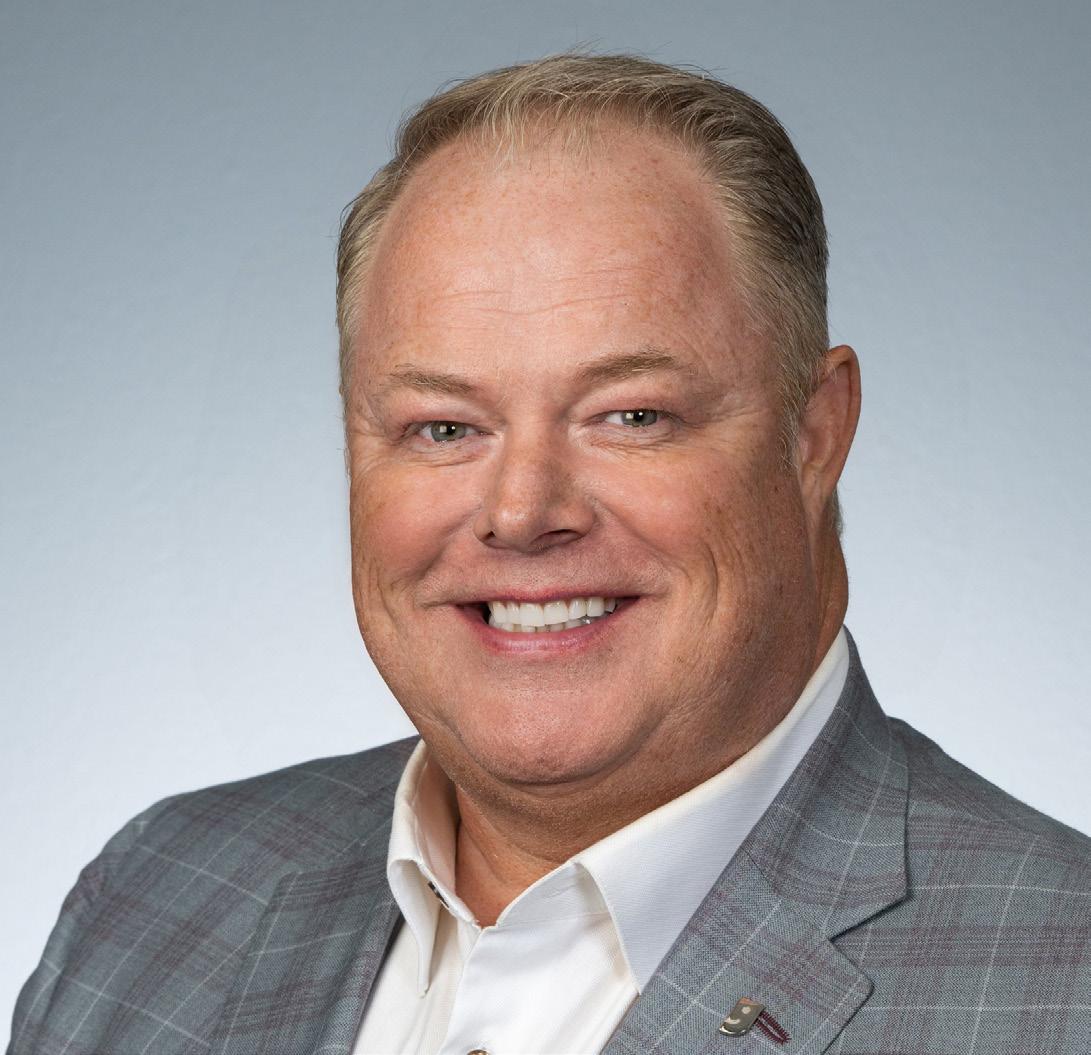
Q:What most notably stands out about your leadership style or what is an example of leadership success you can share with our readers?
I have been called a visionary business and social innovation leader because I have dedicated my career to creating programs and services that help underserved people thrive. My personal vision is to build bridges that uplift entire communities.
But when it comes to leading a team, I am inspired by the great work of servant leaders, especially in building a positive culture for our team members.
When I took over as president and CEO of Goodwill of Central and Northern Arizona in January 2015, we immediately dedicated ourselves to implementing a culture change because we recognized the organization’s departments were operating in silos. Top leaders were not consistently working together to achieve their goals, and some of them had never even met before, despite working in the same building.
Together, we embarked on a comprehensive journey to change the way we interacted with each other, relying in those early days on the teachings of Patrick Lencioni’s book The 5 Dysfunctions of a Team
We focused on building trust, engaging in healthy conflict, committing to decisions together, then keeping each other accountable in order to deliver top-notch results for our community.
Thanks to this important work, we grew the organization from one that had 15 retail stores when I first started in 1999, to more than 100 stores here today, enabling us to serve more people in the community than ever before.
As a team, we are dedicated to Ending Poverty Through the Power of Work, and if my role as a leader can enable us to do that at a greater scale, I consider it a privilege to serve.
What impact has COVID-19 or the disruptions of the past 18 months had on you as a leader?
The pandemic solidified many things for us as an organization and for me as a leader. We knew it was imperative to keep our doors open, not only to offer affordable goods to families in need during a difficult time, but also so we could continue offering our no-cost career development, training and education services to laid-off Arizonans who needed new jobs. People were scared and at a loss for resources when other agencies closed their doors.
It wasn’t easy, but we worked with the Governor’s office to be declared an essential business, so after a few weeks we were able to reopen our doors and continue serving the community.
As an organization, we had to pivot our operations. Whether it was implementing all the safety precautions in our stores, offering our skills trainings virtually, or holding multi-employer hiring events over Zoom, it showed me as a leader that when you give your team the freedom to think creatively,
Name of Leader: Tim O’Neal
Position of Leader: CEO
Organization Name: Goodwill of Central and Northern Arizona
No. of Years with Organization: 23
they come up with amazing solutions to complicated — and complex — issues.
What do you feel we can be doing as a business community to empower economic growth here?
I believe the business community has a responsibility to better utilize the most important resources available to us in Arizona: its people.
Arizona currently suffers from an $8 billion economic gap due to an under-skilled workforce. If businesses can come together with the nonprofit community to upskill the individuals who are here to fill jobs, we can stimulate economic growth, attract more businesses to Arizona, and reduce poverty in our state on a massive scale.
Together, it’s time for us to think radically differently about how we solve poverty to stimulate economic growth. And we can do it together.
What is new and notable for your company’s near future that will impact our economy?
Goodwill is celebrating its 75th anniversary in Arizona. In September, we opened the doors to our state’s first Excel Center, an adult high school that gives individuals 18 years old and over the career development, training and education they need to gain their high school diplomas. Beyond academics, The Excel Center offers students access to life coaching, child care, transportation assistance, flexible scheduling, college credits and industryrecognized certifications, preparing them for life after graduation.
Preparing them to fill positions that will stimulate economic growth in Arizona — all at no cost to them.
The school in Maryvale was our first, but we plan to expand the model to 25 schools across Arizona to serve the more than 700,000 working-age adults in the state without a high school diploma.
Arizona is one step closer to Ending Poverty Through the Power of Work.
Main Local Office Address: 2626 W. Beryl Ave. Phoenix, AZ 85021
Phone: (602) 535-4000 Website: goodwillaz.org
Number of offices in Greater Phoenix: 1 corporate center, and more than 80 stores in Phoenix metro
Year Established Locally: 1947
Q:What most notably stands out about your leadership style or what is an example of leadership success you can share with our readers?
I’m a firm believer in understanding where we’ve been to be better equipped when planning for our future. Since 1997, I’ve proudly served in the Town of Gilbert in many different roles: as a town volunteer, as an appointed planning commissioner (for more than 14 years), as a councilmember (for more than five years) and, as of my most recent election (in 2020), as mayor. Each position I have held with the town has provided me the opportunity to grow as a leader, as well as afforded me a long historical and in-depth town perspective. This perspective has proven invaluable when I evaluate future plans as I understand the circumstances, reasonings and history of what Gilbert’s accomplished and the strong community roots that residents still cherish and value. I strongly feel that one of my most important responsibilities is that of an educator to both current leaders on the unique perspective as an elected official, as well as to the public on local government code, ordinances, policies and procedures. If there is anything
I have learned as the mayor of Gilbert, it is that the bigger Gilbert gets, the smaller it stays. Gilbert has strong and deep community roots that are firmly embraced and revered even today. As mayor, I thoroughly enjoy meeting, learning from and working with my fellow mayors and other regional and national leaders on many different topics and challenges facing our state, region and town. These relationships are invaluable in serving Gilbert residents and make Maricopa County and the East Valley stand out for the way we embrace business and community.
What impact has COVID-19 or the disruptions of the past 18 months had on you as a leader?
During COVID19, we learned that our town staff were able to successfully and safely work remotely while meeting the needs of our organization and the community. This made the once-difficult decision to renovate Gilbert’s Town Hall Complex much easier. Over the last 18 months, we’ve adapted meeting locations to be held in facilities not necessarily designed to hold formal council meetings, neighborhood meetings nor resident meetings. The flexibility embraced by town staff and many of the councilmembers ensured residents still received quality and efficient services. It has been remarkable to observe and, while it definitely hasn’t always been easy, I remain incredibly proud of the way it has all been handled.
What do you feel we can be doing as a business community to empower economic growth here?
I am proud of Gilbert’s business community, which is driven by a strong sense of corporate responsibility and community roots. When I think about Gilbert’s economic development vision, our ability to empower growth within our community and region is unparalleled. We convene, catalyze and empower change that sustains targeted and strategic growth for the good of the community and the region. Driving sustainable economic growth over the long term relies, in part, on our efforts to support safe, strong and healthy communities that provide residents greater opportunities to be prosperous.
What is new and notable for your company’s near future that will impact our economy?
In 2023, we see the continuation of innovations and developments in transformative technologies such as artificial intelligence (AI), the internet of things (IoT), virtual and augmented reality (VR/AR), cloud computing, blockchain, and super-fast network protocols like 5G. These transformational digital technologies do not exist in isolation from each other but rather work in tandem, and, as a business community, we will see new solutions for augmented working, hybrid and remote working, business decision-making, and the automation of manual, routine and creative workloads combine these technologies in ways that enable enhancement amongst each other. This brings us closer than ever to the point where we are able to create “intelligent enterprises” where systems and processes support each other to complete menial and mundane tasks in the most efficient way possible.
Name of Leader: Brigette Peterson

Position of Leader: Mayor
Organization Name: Town of Gilbert, AZ
No. of Years with Organization: Elected to represent Gilbert in 2014 Gilbert Community Volunteer since 1997
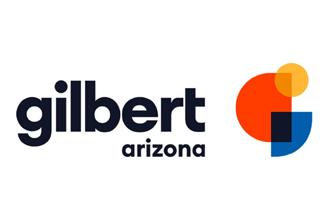
Main Local Office Address: 50 E. Civic Center Dr. Gilbert, AZ 85296
Phone: (480) 503-6764
Website: gilbertaz.gov/departments/ town-hall/mayor-town-council
Number of offices in Greater Phoenix: 1
Year Established Locally: 1920
City Nationally Headquartered: Gilbert, AZ

Q:What most notably stands out about your leadership style or what is an example of leadership success you can share with our readers?
I am fortunate to work in an industry and with a company of selfmotivated people who are passionate about what they do. My leadership style is based on positive motivation that encourages others to be better people, not just better workers. For me, success is not just about winning the next deal or making the most money. It is about doing what is best for your client and creating balance in your work and personal life, while giving back to your community.
What impact has COVID-19 or the disruptions of the past 18 months had on you as a leader?
My father passed away at the onset of the pandemic, just prior to any isolation restrictions, so my family was fortunate to be able to be with him for his last weeks. Then the commercial office markets came to a standstill. My role quickly became one of an advisor, making sure my clients and colleagues had the best data and insight available to make really important decisions. Transactions were slow but that gave me nine months to focus on my family. That helped me put the panic of the market into perspective and enjoy the time I’d been given with those closest to me. I continue to put things in perspective and encourage others to do the same. Our market will always be cyclical, and with that knowledge we can set and achieve new goals in a brand new way.
What do you feel we can be doing as a business community to empower economic growth here?
Phoenix is in an advantageous position where it comes to our economic growth. In the span of about five years, we’ve transitioned from a largely regional and back-office office market into one that is on the corporate radar for major regional and national headquarters, and new tech and R&D endeavors. But the office landscape has changed and both tenants and employees have new requirements, including a heavy focus on amenities and flex-work scenarios. As a commercial real estate expert, my job is to help companies deploy those needs into office space that works for them. That will help to attract and retain the best employees in metro Phoenix, will help our existing companies grow and will help to attract new companies.
Continuing to focus on community will also empower economic growth. I have been active with a number of local nonprofits, and the impacts are tremendous for both the causes and the community of people who support
Name of Leader: John G. Pierson
Position of Leader: Managing Director
Organization Name: JLL – Jones Lang LaSalle

No. of Years with Organization: 22
the cause. For example, my work with Fighter Country Foundation, which supports the men, women, families and mission of Luke Air Force Base, has been amazingly fulfilling. Strengthening the health and well-being of our active military and supporting the mission at Luke Air Force Base supports the ability for the base to have an economic impact of more than $2.4 billion in Arizona. Metro Phoenix would be a very different place if we no longer had this asset in our community.
What is new and notable for your company’s near future that will impact our economy?
Since establishing its Phoenix office in 2008, JLL has consistently invested in talent and technology and its overall support for the commercial real estate industry in Arizona. That formula is clearly working. The JLL Phoenix office recently relocated into brand new office space at 44th Street and Camelback Road, where it has doubled its footprint to best enable it growing business lines. Many of these business lines are growing to proactively and strategically support the growth of Arizona. This includes the traditional office, retail, industrial and capital markets sectors, as well as Phoenix’s booming demand for services like facility management and construction management, and growth industries like healthcare, life sciences and data centers. Even with the challenges of the day, our office is energized and in sync with the opportunities that lie ahead.
Main Local Office Address: 4300 E. Camelback Rd., Suite 100 Phoenix, AZ 85018
Phone: (602) 282-6277 Website: jll.com
Number of offices in Greater Phoenix: 1
Year Established Locally: 2008
City Nationally Headquartered: Chicago
Q:What most notably stands out about your leadership style or what is an example of leadership success you can share with our readers?
As president of the nation’s third-largest not-for-profit community-based utility, my leadership approach has evolved over time.
I have transitioned from being vision-focused to directing my attention to what is possible.
In managing the board of Salt River Project (SRP), I have gained a deeper appreciation for the value of relationships. By building a strong rapport with SRP’s CEO and executive team we can work together for the betterment of our customers.
What impact has COVID-19 or the disruptions of the past 18 months had on you as a leader?
Our generation had never before seen the disruption of a global pandemic. For me, COVID-19 was a serious deterrent to my style of connecting with people in person.
I do not believe we will ever fully return to our pre-pandemic lifestyles, professionally speaking. The flexibility that the hybrid workplace offers to be more inclusive in our work, and to connect and create in new ways has brought positive changes.
What do you feel we can be doing as a business community to empower economic growth here?
SRP operates on three fundamental pillars: reliability, affordability and sustainability.
Our paramount dedication to reliability serves to drive our approach to economic development.
In addition, SRP ‘s nonprofit status allows us to be true to our mission.
As a business community, the more we can do to power our state’s smart growth with a focus on sustainability, the more all of us will benefit.
SRP understands the importance of sustainable initiatives that help to provide water and power to our customers while working to reduce carbon emissions, strengthen the grid to allow more customer choice and improve water resiliency.

More companies and customers expect that sustainability is part of all planning. A comprehensive and inclusive way to progress forward is by developing a stakeholder review process of a company’s sustainability goals. An example of this is what SRP did when we developed SRP’s initial 2035 Sustainability Goals: We hosted opportunities to gain public feedback from customers to inform the goals and ensure we considered all perspectives. The effort generated more than 4,000 comments, many of which were integrated into our updated initiatives.
Name of Leader: David Rousseau
Position of Leader: President
Organization Name: Salt River Project
No. of Years with Organization: SRP President since 2010, SRP Vice President 2006–2010, Served on SRP’s board and council 1990–2006
What is new and notable for your company’s near future that will impact our economy?
Not only has SRP undertaken industry-leading 2035 Sustainability Goals, but we continue to balance affordability for our customers throughout the costly transition.
In addition, SRP has among the largest utility-scale battery investments in the Western U.S., with more than 800 megawatts in battery storage that will be operating on our power system by 2024 — and more projects that will soon be announced. It is enough to power more than 180,000 averagesize residential homes during a four-hour period.
These early battery deployments help SRP and the industry gain experience with this technology, which will play a major role in reducing carbon emissions.
In addition, SRP is well on its way to reaching its goal to add 2,025 megawatts of new utility-scale solar energy by 2025, as part of SRP’s commitment to reducing carbon intensity (from 2005 levels) by more than 65% by 2035 and 90% by 2050.
With the passing of the Inflation Reduction Act, SRP will be able to invest more in developing its own battery storage and solar energy systems, giving us direct dispatchability of these systems and first-hand, real-time access to performance analytics.
We also continue to work — just as we have for more than 100 years — to ensure a resilient water supply for our shareholders and the metro Phoenix area by partnering with the public and private sectors on innovative solutions. This critical issue is at the heart of what SRP does, and we look forward to working alongside community partners to ensure Arizona’s future.
Main Local Office Address: 1500 N. Mill Ave. Tempe, AZ 85288
Phone: (602) 236-8888
Website: srpnet.com
Number of offices in Greater Phoenix: 11
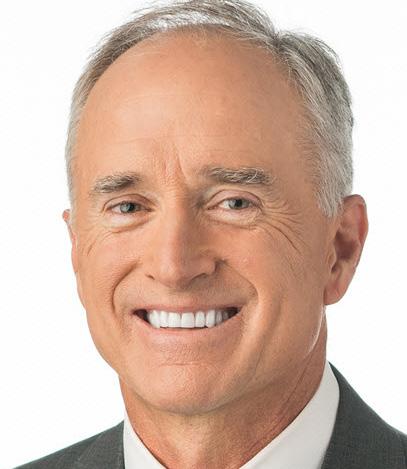
Year Established Locally: 1903
City Nationally Headquartered: Tempe, AZ
Q:What most notably stands out about your leadership style or what is an example of leadership success you can share with our readers?
Every leader develops their own leadership style through some combination of natural talent, formal training, mentorship, observation, experience and luck. It’s an evolutionary process that is unique and personal to each leader. Fundamentally, however, any leadership style or philosophy must reflect, support and advance the values and culture of the organization the leader serves.
Our organization, which is comprised of the Phoenix Suns, Phoenix Mercury and Footprint Center, is relentlessly committed to a culture of winning, both on and off the court. To drive this culture, we have identified five “Winning Behaviors” — the values we expect our teammates to aspire to live by every day. These Winning Behaviors are Integrity, Accountability, Resilience, the Pursuit of Excellence, and Teamwork. The consistent application of these values is as impactful to success on the basketball court as it is to success in the boardroom.
Our Winning Behaviors are more than just words on a wall. We incorporate them into our short- and long-term planning; our employee recognition and rewards programs; our annual review process and incentive compensation plan; and our recruiting, retention, and employee development programs. But, most importantly, we expect our leaders and managers to reinforce these behaviors through modeling them in their own daily interactions with their co-workers. The results speak for themselves — in a few short years, we have transformed our company into a model sports and entertainment enterprise, and a point of pride for the City of Phoenix, the Valley, and the State of Arizona.
What impact has COVID-19 or the disruptions of the past 18 months had on you as a leader?
Every business was negatively impacted by COVID in one way or another. For our industry, it was devastating. The live sports and entertainment business model essentially evaporated for nearly a year, as did most associated revenue streams. At the time, some industry observers even prophesied that live events were a thing of the past and would never return to prior form (thankfully they were very, very wrong).
I learned from this experience that even in the worst of circumstances, you can still find ways to successfully advance your business through focused leadership. For us, that came in the form of two major projects — our $250 million arena renovation and $50 million state-of-the-art practice facility. These two projects were originally scheduled to break ground the summer of 2020, which turned out to be deep in the heart of the pandemic. Thankfully, Governor Ducey had the wisdom to designate construction as an “essential service” in Arizona, thereby allowing us to commence construction of the projects. Amazingly, we finished the projects on budget and ahead of schedule, all during the worst pandemic in 100 years.
Name of Leader: Jason Rowley

Position of Leader: President & CEO
Organization Name: Phoenix Suns, Phoenix Mercury and Footprint Center
No. of Years with Organization: 15
Despite some periodic setbacks, our market has enjoyed significant economic growth over the last two decades. We have attracted companies from a wide range of industries, thereby injecting greater economic diversity and opportunity into our state. We have done a good job planning for and creating the basic infrastructure necessary to support a burgeoning corporate base and ever-growing population. However, large gaps still exist in the areas of education, access to services for traditionally underprivileged communities, water, and affordable housing. As the world continues to innovate and transition to the digital economy at an accelerated pace, the Arizona business community needs to support policies and political candidates that seek rational, common-sense solutions to these issues.
Arizona has become a premier sports and entertainment destination, and at the heart of it all is our newly renovated arena in downtown Phoenix, which was renamed as Footprint Center in July 2021 as part of a long-term partnership with Footprint, a material science company based in Gilbert, Arizona. Footprint’s mission is creating a healthier planet by reducing dependency on single- and short-term-use plastics.
As part of the partnership, Footprint will bring its food and beverage solutions and a team of dedicated experts to help Footprint Center become carbon-neutral and single-use-plastic-free while creating a living innovation lab for food and beverage suppliers to learn more about consumer sentiment and how they can transition away from plastic. Together, we are forging solutions that can be scaled outside Footprint Center and across the industry, helping companies concerned with ESG to integrate plant-based fiber solutions that are designed to be recycled and composted into their core product lines.
Fans at Suns and Mercury games or concerts and shows have already begun to experience food served in Footprint’s biodegradable, compostable and recyclable solutions as well as educational points about the positive impact of making a switch from single-use plastics in their everyday lives. Ultimately, Footprint Center will become an immersive living innovation lab for fans, enterprising partners and likeminded venue operators from around the world to visit.
Main Local Office Address: 201 E. Jefferson St. Phoenix, AZ 85004
Phone: (602) 379-7000
Website: suns.com
Number of offices in Greater Phoenix: 2
Year Established Locally: 1968
City Nationally Headquartered: Phoenix
What do you feel we can be doing as a business community to empower economic growth here?
What is new and notable for your company’s near future that will impact our economy?

Q:What most notably stands out about your leadership style or what is an example of leadership success you can share with our readers?
I believe that a leader is best judged by what they leave behind, not what they accomplish today. This standard has guided me throughout my career and driven many of my actions at ACF. No organization can innovate or be responsive without a stable and strong infrastructure. This was not the case when I arrived 13 years ago. But it is today, along every dimension by which one might judge us: core values, governance, leadership, talent, grantmaking and scholarship growth, scale and stewardship of assets, community engagement and program expansion, inclusion and diversity, fiscal and operating strength, transparency, and digital transformation.
What impact has COVID-19 or the disruptions of the past 18 months had on you as a leader?
As an organization built by and for the community, ACF was both impacted by COVID-19 and had an opportunity to make a bigger impact than ever before on the nonprofits, small business owners and the people who benefit from those essential services. As ACF’s leader, it was my role to keep my team safe while getting immediate relief funding to organizations that were seeing demand increase exponentially and continuing to provide exceptional service to our donors who were also seeking to support these needs. We were able to meet these needs while also expanding our services to help municipalities across the state distribute grant funding to small businesses that on its own exceeded our previous annual grantmaking by more than $20 million. The sale and pace at which we work multiplied even as we adapted to a largely remote work environment. This tested my leadership style because relationships are essential to our work, and I still have yet to see a connection between people that is not made better through in-person interaction. I don’t think any of us have a solution to that challenge, but I’m learning to be open to the innovative ideas that may emerge from this period in our history.
It was also impossible to ignore the inequities that were brought to light through this crisis, both in philanthropy and in our communities. This spurred me to act thoughtfully and intentionally as ACF continued upon our own diversity, equity and inclusion journey. We looked inward at our hiring and promotion practices and outward at our grantmaking process, involving community and stakeholders while incorporating lessons learned from the pandemic along the way. I’m proud to say that, today, we have the most diverse board and staff in our organization’s history and are making grants to organizations that had not previously received direct support from ACF. While
Name of Leader: Steve Seleznow
Position of Leader: President & CEO
Organization Name: Arizona Community Foundation
No. of Years with Organization: 13
work in this space is never finished, COVID-19 was a reminder that we can always innovate and improve, seeking ways to bring our donors along on this important reality.
What do you feel we can be doing as a business community to empower economic growth here?
Throughout my tenure at ACF, we have been laser-focused on building trust and enduring relationships with donors from all walks of life. Our growth, scale and reach would not have been possible without serving our donors as a first order priority, then building the foundation’s focus around their collective vision for Arizona. I believe the same recipe is needed for empowering economic growth overall — trust and relationships are essential for creating meaningful change.
Economic growth comes when more individuals, families and businesses are inspired to invest in our community, and more of them will be willing to do that when they see the current business community making investments in our education system, our arts and cultural institutions, our natural resources and one another.
What is new and notable for your company’s near future that will impact our economy?
ACF is on an amazing trajectory and is in the best position ever to have impact on the many new challenges Arizona will face in the years ahead — some we have yet to know or understand. But our scale could likely triple in the next decade, enabling ACF and our donors to take on a wide array of new challenges at levels never imagined. I see ACF creating even more affordable housing, funding innovations for sustainability driven by high heat and diminishing water supplies, strengthening the common good through constructive civil discourse and community engagement, and inventing creative new tools in social finance to strengthen nonprofits and better equip them to address the community challenges of the future.
Main Local Office Address: 2201 E. Camelback Road, Suite 405B Phoenix, AZ 85016
Phone: (602) 381-1400 Website: azfoundation.org
Number of offices in Greater Phoenix: 1
Year Established Locally: 1978
City Nationally Headquartered: Phoenix
Q:What most notably stands out about your leadership style or what is an example of leadership success you can share with our readers?
When Troy Watkins and I started Conceptually Social in 2014, we wanted our culture and leadership styles to be reflected in our mission statement and principles. Showing Passion, Being Selfless, Bringing the Positivity, Never Negotiating Standards and Integrity Always are the principles which we ask all our leaders to maintain — and that starts at the top. Maintaining this example is a fundamental leadership goal, best summarized by our mission statement: We, with joy and gratitude, serve uncommonly delicious food & drink while building everlasting relationships with our team and community. Ultimately, the leadership style that I have gravitated toward focuses on garnering credibility, relationship building, exhibiting humility, empowering others and staying present with a passion-forward presence.

What impact has COVID-19 or the disruptions of the past 18 months had on you as a leader?
The impact of COVID-19 and the pandemic’s disruption to our industry tested our resolve as business owners and our commitment to lead the company through a very challenging time. We learned how it felt to truly have our “back against the wall” and, in full transparency, understand in a stronger way the responsibility of being a leader — whether we could help our team believe that we were all in it together and could make the most out of a challenging environment or simply adapt to our unwavering belief that Conceptually Social would come out of the thick of things as a stronger company. Hard choices needed to be made throughout the 18-plus months and it required myself and the other leaders to keep those choices or priorities hyperclear.
What do you feel we can be doing as a business community to empower economic growth here?
Phoenix is in an advantageous position when it comes to our economic grWe believe that a large part of the responsibility we bring as leaders through Conceptually Social is continually investing in our team. We focus on how we can build an environment and company culture in learning, pushing through difficult times, reinforcing accountability and, most importantly, providing the tools and training our team can use toward personal growth and success. Our hope is that this focus can help develop highly skilled professionals who take pride in their efforts and continue to grow themselves with Conceptually Social or another organization.

What is new and notable for your company’s near future that will impact our economy?
We are excited to not only continue the significant investment in resources and bringing on high-level, experienced leadership into Conceptually Social Catering, but to as well announce a second Kaizen Sushi location. We will also be continuing the development and growth of our concept Konbini Sushi and its partnership within AirGuitar in Epicenter / Gilbert. We also hope to announce soon possible new projects in Tempe and in the Biltmore area. Both locations are reflective of the significant opportunity that has been created in this “post pandemic” economy and workplace. We believe that a new view and appreciation of food-andbeverage retail within office space and development has been realized. We also believe a strong F&B operator can bring value to business development projects and/or an office building as a true amenity service and offering; we believe in a true partnership with developers and commercial real estate as a workplace solution.

Q:What most notably stands out about your leadership style or what is an example of leadership success you can share with our readers?
I have been described as a servant leader and I consider my team to be my internal customers. I am charged with empowering them and enabling them to do their best work. It is a small but mighty team stretching a $3-million budget to make a $200-million impact in Arizona’s economy. I could not be prouder than to serve with these remarkable colleagues.

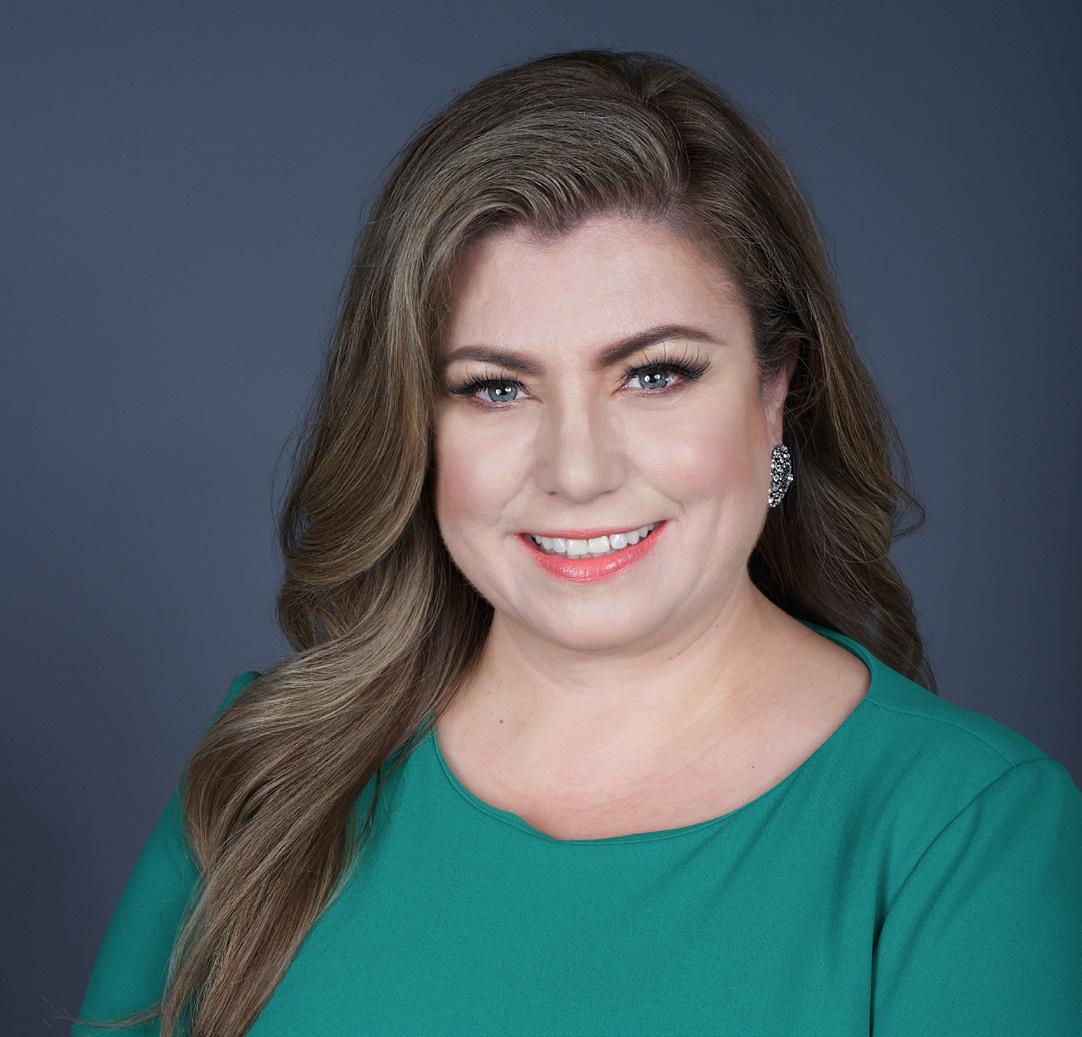
What impact has COVID-19 or the disruptions of the past 18 months had on you as a leader?
During the pandemic, we all had to level up! It was a time to bear down and hold the line. We delivered $200,000 in micro-grants to our members and retained our entire staff without layoffs, furloughs or salary reductions. The pandemic stretched our capacity but I knew that if we could not deliver for our members when they needed us most, then we might as well close our doors. We found the resources that minority-owned businesses needed desperately to stay open and pivot their strategy, if necessary.
What do you feel we can be doing as a business community to empower economic growth here?
Small businesses need us now more than ever to help start, grow and scale. They are the backbone of Arizona’s economy, and our organization works to provide access to contracts, access to financing and job creation.
Currently, Arizona is a race- and gender-neutral state with regard to small business certifications. Diversity nurtures innovation, and providing opportunities for minority-owned businesses to compete will contribute to our state’s economy.
What is new and notable for your company’s near future that will impact our economy?
For nearly three quarters of a century, the Arizona Hispanic Chamber of Commerce has served the state’s small businesses. What’s next? Another 75 years of economic development, market intelligence, capacity building, advocacy and education for our future leaders. We can be the blueprint for other state economies through support of small businesses … that become successful BIG businesses!

A growing market like Phoenix can present both a wide range of financial opportunities as well as challenges for business owners. Arizona holds more than 150 of the nation’s fastestgrowing companies, according to the Inc. 5000 lineup, a list ranking business revenue growth over a three-year period, from 2018 to 2021. The listed businesses, mostly located in the Phoenix area, have added more than 12,000 jobs the past three years, driving $18.5 billion in revenue, according to Inc.
A high-growth market can open doors to increased revenue, acquisitions and other financial investments. But current economic obstacles like inflation and supply chain disruption can pose a threat to newly acquired assets. Understanding current trends can help business owners manage their finances safely and effectively in the current climate, while taking advantage of the growth happening within the region.
Phoenix is home to an expansive and diverse population of manufacturers, some of the largest sectors producing microchip technology and aerospace technology. The manufacturing industry impacts businesses across all sectors. Every dollar in manufacturing sales supports $1.34 in output from other sectors — the largest multiplier of any sector, according to The Manufacturing Institute. Global economic uncertainty and supply chain disruptions are prompting owners to reexamine their supply chain management.
Expanding and diversifying one’s supplier base can potentially lead to new partnerships that could increase one’s buying power. Businesses should consider exploring suppliers that are in close proximity to their business. Working with a local manufacturer can reduce transit time and costs, providing an affordable solution that not only helps the business’s finances but supports its local economy, too.
As demand rises, so does the potential for running out of stock. Adjusting one’s inventory management is a great way to make sure one’s business is keeping pace with the growing market. If the budget allows, investing in additional inventory may be an option to increase one’s available supply.
The recent nationwide economic challenges have inspired some business owners to consider a merger or acquisition (M&A). While some business owners are driven to sell, others are motivated to expand. On either side of a merger or acquisition, significant financial consequences may follow. Whether buying or selling, it’s important business owners stay on top of factors that are shaping the process to ensure they are investing in their company’s future in a way that aligns with their long-term financial goals.
Due to its importance across industries, M&A value is often impacted by a company’s supply chain operations. A diverse supply chain can promote rapid business growth, improved
cash flow, operational efficiency and lower expenses in a time when recent supply chain disruptions provoked a defensive response from businesses. As a result, owners are now willing to pay a high price for a diverse supply chain in order to withstand future financial instability.
Shifts in our economy have highlighted business qualities that encourage sustainability and strength through periods of uncertainty. When buying or selling, a company that has a strong balance sheet, broad financial capabilities, geographic diversification and product diversification will stand out to the interested party. Furthermore, during M&A transactions, it is common for a company’s Environmental, Social and Governance (ESG) impacts to be measured through a metric-based report. Investors are using ESG reports to make investment decisions and are interested in businesses that are low risk with room for growth.
High prices from inflation have affected virtually every industry, causing owners to rethink how they do business. When deciding where to invest, businesses with plenty of cash and capital at their disposal may consider purchasing assets with growth potential to stay ahead of inflation. Property or equipment investments, for example, can allow for greater operational capacity or efficiency, thus strengthening a business’s position against inflationary pressure.
In a high-growth market, it’s important businesses keep up with their budgets to plan for future investments and to set aside funds in case of economic instability. To assist with budgeting, there are several financing alternatives and tools that can help manage interest rate risk. Scheduling a meeting with one’s banker and other financial advisors is a great first step when exploring opportunities that best fit one’s needs.
Owning a business in a high-growth market amidst economic uncertainty may mean risky financial investments or unforeseen challenges. A strong consultative banking partner can help business decision makers form a financial strategy tailored to their business’s unique needs and expansion goals. Working with a consultative bank can help one successfully take advantage of the wide variety of financial opportunities available in Phoenix.
Due to its importance across industries, M&A value is often impacted by a company’s supply chain operations.
Enterprise Bank & Trust. With more than 20 years of banking experience and close ties to the Phoenix business community, he oversees all aspects of the bank’s operations in the state and facilitates the bank’s growth in the region to meet existing and prospective clients’ expanding needs. enterprisebank.com

Rana Lashgari is an attorney and president of Arizona Municipal Strategies, LLC, a government relations law firm dedicated to helping businesses build stronger municipal relationships and better navigate local government policies. az-ms.com

 by Rana Lashgari
by Rana Lashgari
For many businesses, the recent economy has presented opportunities for growth, but unexpected challenges may still be standing in the way. Whether a company is a brandnew small business looking to get started or an established giant needing to expand quickly to meet new needs, local municipalities have a surprising number of resources dedicated to helping businesses in their communities overcome challenges and grow.
Across Arizona, cities make economic development a priority. From strategies designed to create more high-wage jobs to tax and development incentives, as well as economic aid, each city has a host of offerings to help businesses grow. A stronger local economy benefits everyone and leads to a more balanced workforce, a stronger housing market and, ultimately, more growth and revenue for the municipality. For this reason, city economic development departments offer a full range of resources dedicated to keeping businesses in their jurisdictions thriving.
For example, a brand-new small business may need help figuring out what permits it may need to operate. Many cities have training workshops available to help new business owners navigate regulatory compliance, connect with local suppliers and even provide help with funding. Post-COVID, many cities offer small business grants to help new businesses get started and can connect business owners with organizations providing micro loans and other sources of funding.
For mid-range companies, a partnership with the city can help address workforce shortages. Many cities have their own workforce development departments, or have existing partnerships in place with nonprofits that can assist develop a pipeline of qualified applicants to meet immediate growth needs. If a company is short on space, an economic development team can quickly help identify temporary office space, perhaps at another office site where employees may be working remotely and extra space may be available. Often, city staff can
aid in finding a quick solution to an unexpected challenge due to their understanding of the local market as a whole.
For large companies, relocation is a major challenge. Before committing to a new site, large companies should meet with city leadership to explore potential incentives available. Cities want to create strong local economies with quality employment opportunities for their constituents. As such, there are often a host of incentives available for large companies looking to relocate — from tax incentives and infrastructure investment aid to fast-tracking building permits in order to avoid traditional delays. The local economic development team can also share demographic data to help the company find the right area of town. Additionally, city staff can help identify which sites are best suited for the company depending on how a site is zoned or the infrastructure available. Finally, economic development staff can advise businesses with permitting or regulatory compliance to ensure a quick and successful opening.
The public resources available range from city to city. However, most municipalities have economic development departments focused on business assistance. Even in cities with limited resources, access is available to statewide or federal funding. Overall, Arizona provides a business-friendly atmosphere and cities welcome the opportunity to work with companies.
Here are a few examples to help understand the range of resources available to businesses in Arizona:
For those looking for a new or better location for their business, local municipalities offer a host of data and demographic information to make the decision easier. For example, the City of Phoenix will prepare a site selection report of locations that match any given criteria provided by a prospective business. More importantly, city staff can help business owners better understand the future of a specific site
Post-COVID, many cities offer small business grants to help new businesses get started and can connect business owners with organizations providing micro loans and other sources of funding.
Across Arizona, cities make economic development a priority
by providing information about future uses or projects around the potential site. Site selection assistance from cities can be even more immediate and custom tailored. In Peoria, business development staff will facilitate partnerships between local businesses that have excess commercial or office space with those that are short on space and need additional square footage quickly but don’t have the time or resources for a full lease. This assistance helps businesses pivot and adjust rapidly to changing needs.
In addition to traditional funding methods, many cities offer alternative sources of funding to new or small businesses. The City of Tucson partners with many nonprofits to provide bonds, grants or loans to new and expanding businesses. In partnership with Growth Partners, an Arizonabased Community Development Financial Institution, the City of Tucson offers opportunities for small businesses to gain access to and qualify for Small Business Success Loans and other technical or capital assistance. For larger loans, the Tucson Industrial Development Authority (IDA) helps small businesses secure community-based loans up to $500,000. Businesses in search of funding of more than $3 million may be eligible to secure taxexempt funding from Tucson IDA for the purchase or lease of land, buildings or equipment that enhances the local economic landscape.
While growth has remained steady, labor shortages have plagued Arizona businesses. Select cities have developed robust workforce development strategies to help meet local labor needs. For example, the City of Phoenix has a team fully dedicated to workforce services. According to the City of Phoenix, the Business and Workforce Development Center can “coordinate customized services, and programs, tailored to meet the special needs of specific employers.” Through a partnership with Arizona@Work, assistance includes anything from recruitment and hiring to on-boarding, training and retention.
Several jurisdictions provide tax incentives to attract economic development. For example, the City of Buckeye has a variety of potential tax advantages for businesses located in the city. First, significant areas within Buckeye are designated as Federal Trade Zones and Opportunity Zones. According to the City of Buckeye, “In addition to federal benefits, Foreign Trade Zones can reduce real and personal property taxes by 72%.” Additionally, Buckeye contains more than 100 square miles of land within the Opportunity Zone, which “provides tax incentives on capital gains monies invested into the zone.” For qualifying manufacturers, the City of Buckeye is also the only city in Arizona to “eliminate the city sales tax” and has “one of the lowest sales tax rates on items over $2,000 in Maricopa County,” according to Buckeye Economic Development. Partnering with a city to maximize tax relief could yield significant tax benefits for local businesses.
As many in the construction industry know, permit delays can cause significant hardships for businesses in the current market. But for qualifying companies, cities offer concierge-like services to help navigate the development review process. The City of Peoria has Priority Track, which provides reduced time frames on development plan review at no additional cost to the business or industry prospect. City of Peoria Economic Development Director Jennifer Stein tells me that “business growth is the economic driver for any community, and maintaining a dedicated team that engages with businesses, opens lines of communication and builds those ties can help local businesses grow and expand in Peoria.”
City staff can help identify which sites are best suited for the company depending on how a site is zoned or the infrastructure available.
No one likes to pay taxes. And everyone hates paying more taxes than they need to. Yet, each year, Americans make billions of dollars in tax overpayments. In J.K. Lasser’s 1001 Deductions and Tax Breaks 2023: Your Complete Guide to Everything Deductible, expert attorney and small-business advocate Barbara Weltman delivers a thorough and carefully researched explanation of the constantly changing tax laws as they apply to ordinary, taxpaying Americans.
The latest edition of this book has been completely updated to reflect recent legislation, the latest tax court rulings, and IRS guidance, allowing readers to easily refer to relevant deductions and credits in the easy-to-follow guide. Perfect for taxpayers and tax-preparing professionals, this is a comprehensive handbook for American taxpayers looking for every legal tax deduction and credit.
J.K. Lasser’s 1001 Deductions and Tax Breaks 2023: Your Complete Guide to Everything Deductible Barbara Weltman $23.99

Wiley
Available 12/1/2022 464 pages
Small business owners in the U.S. face enough challenges without overpaying tax. Despite this, millions of small businesses miss out on crucial deductions, tax credits, and tax-saving moves every year, resulting in higher-thannecessary tax bills. In J.K. Lasser’s Small Business Taxes 2023: Your Complete Guide to a Better Bottom Line, renowned attorney and small-business advocate Barbara Weltman offers a thorough and exhaustively researched roadmap to legally minimizing tax liability and maximizing deductions and credits. In the book, readers will find tax facts and planning strategies that help make business decisions in the most tax-efficient way possible. A concise and plain-English guide for every small business owner in America, Small Business Taxes 2023 is a comprehensive guide to small-business tax write-offs and strategies from a leading name in tax.
J.K. Lasser’s Small Business Taxes 2023: Your Complete Guide to a Better Bottom Line
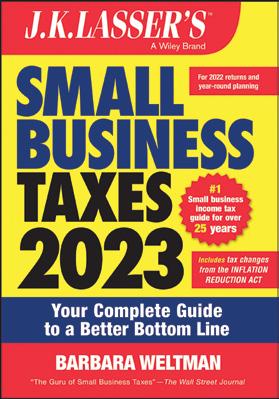
Barbara Weltman $23.99
Wiley
Available 12/1/2022 608 pages
The authoritative guide for navigating tax time, completely revised and updated for 2023–2024, the ninth edition of Lower Your Taxes – BIG TIME! shows taxpayers how to save thousands of dollars — legally and ethically! — during tax time. It offers proven methods for taking advantage of the tax system to get a yearly subsidy of $5,000 or more back from the IRS — and bulletproof the tax records forever.

Known for his engaging, humorous writing style, Botkin is a renowned expert who has worked for the IRS in multiple capacities; he knows the tax code inside and out. For consultants, small-business owners, independent contractors, or just individuals seeking to protect a hard-earned nest egg, Lower Your Taxes – BIG TIME! provides everything taxpayers need to make next tax season painless, both emotionally and financially.
Lower Your Taxes – BIG TIME! 2023-2024: Small Business Wealth Building and Tax Reduction Secrets from an IRS Insider
Sandy Botkin $24
McGraw Hill
Available 12/20/2022 352 pages
Edgar R. Olivo es un educador empresarial bilingüe, asesor económico y colaborador de varios medios de comunicación. Es apasionado por la educación y comunidad. Está certificado en finanzas y análisis de datos y posee un título en negocios de la Universidad Estatal de Arizona.
Edgar R. Olivo is a bilingual business educator, economic advisor and contributor for several media outlets. He’s a nonprofit executive who is passionate about education. He is certified in finance and data analytics and holds a business degree from Arizona State University.

El presidente Biden anunció una nueva meta audaz el verano pasado para aumentar la proporción de contratos destinados a pequeñas empresas desfavorecidas en un 50% para 2025. Se prevé que este objetivo sin precedentes agregará $100 mil millones a las pequeñas empresas en los Estados Unidos durante los próximos cinco años. Ahora es el momento de que las pequeñas empresas se preparen para encontrar oportunidades con el gobierno federal.
Según la Administración de Pequeñas Empresas, el gobierno de los Estados Unidos es el mayor comprador individual de bienes y servicios del mundo. Esto comienza a ser más evidente cuando se piensa en el gobierno federal como una organización que necesita más de 4,2 millones de
empleados federales para funcionar sin problemas. El gobierno necesita suministros como cualquier otra organización, como bolígrafos, papel, computadoras y software, papel higiénico, mantenimiento de edificios y materiales de limpieza.
Las pequeñas empresas deben considerar prepararse para las oportunidades que se avecinan realizando primero algunas actividades clave. Aquí hay seis actividades que el dueño de una pequeña empresa debe hacer para estar listo para venderle al gobierno federal.
1. Conozca su mercado objetivo. Investigue sobre los departamentos del gobierno federal a los que planea vender. Si comprende sus necesidades, puede crear una estrategia personalizada para satisfacer sus necesidades. Comience
El gobierno de los Estados Unidos es el mayor comprador del mundo, con compras que ascienden a unos 500.000 millones de dólares al año. Las agencias gubernamentales son un cliente tan grande de las pequeñas empresas que algunas empresas atribuyen su éxito financiero a los contratos gubernamentales.

buscando oportunidades de contratos en sitios de proveedores gubernamentales como USASpending.gov o SAM.gov.
2. Encuentre proveedores de asistencia técnica en su área. Las pequeñas empresas pueden obtener ayuda gratuita para prepararse para las oportunidades de contratación, especialmente en industrias de alto crecimiento como la construcción y la tecnología. Para encontrar ayuda, la Administración de Pequeñas Empresas proporciona una lista de Centros de Asistencia Técnica de Adquisiciones (PTAC por sus siglas en inglés) locales con mentores que pueden ayudarlo con la preparación de documentos para ayudarlo a ganar más contratos federales.
3. Mejorar las habilidades constantemente. Incluso el gobierno se encuentra en un estado constante de evolución, por lo que mantenerse al día con las tendencias y habilidades de su industria se convertirá en su mayor ventaja. Obtenga las licencias y certificados necesarios para aumentar su valor en el mercado y esté siempre atento a las oportunidades de aprendizaje.
4. Busque sus códigos NAICS/CAGE/ NCAGE. Su Código NAICS, o el Código del Sistema de Clasificación de la Industria de América del Norte, será utilizado por los funcionarios contratantes para conocer la naturaleza y la industria de su negocio. Hay un sitio web de autoservicio donde puede seleccionar entre los Códigos NAICS en la lista que mejor describe su oferta comercial. Si su negocio está ubicado dentro del país y sus territorios, se le asignará un Código CAGE. Necesitará un código NCAGE si su empresa está construida fuera de los EE. UU. y sus territorios. Puede obtener esto después de completar su registro en SAM.gov.
5. Registre su negocio en SAM.gov. Registrar su negocio en el sitio web del Sistema para la Administración de Adjudicaciones significa que ahora está calificado para presentar ofertas y ganar contratos federales. Para tener un perfil de proveedor completo en SAM.gov, deberá tener su número de identificación de empleador (EIN), un identificador único de entidad proporcionado por SAM.gov y su información bancaria y financiera.
Convertirse en un contratista federal para venderle al gobierno puede parecer complicado y, afortunadamente, la mayor parte se puede completar en línea. Un contrato del gobierno de EE. UU. puede generar ventas constantes para una pequeña empresa durante varios años. Es una estrategia que vale la pena seguir para hacer crecer su negocio.
President Biden announced a bold new goal last summer to increase the share of contracts going to small, disadvantaged businesses by 50% by 2025. This unprecedented target is projected to add $100 billion to small businesses in the United States over the next five years. Now is the time for small businesses to prepare to find opportunities with the federal government.
According to the Small Business Administration, the United States government is the largest single purchaser of goods and services in the world. This starts to become more apparent as you think about the federal government as an organization that has more than 4.2 million federal employees needed to run it smoothly. The government needs supplies like any other organization, such as pens, paper, computers and software, toilet paper, building maintenance and cleaning materials.
Small businesses should consider preparing for the opportunities ahead by doing a few key activities first. Here are six activities a small business owner must do to be ready to sell to the federal government.
1. Know your target market. Do research about what departments within the federal government you plan to sell to. If you understand their needs, then you can create a tailored strategy to meet their needs. Start by searching for contract opportunities on government vendor sites like USASpending.gov or SAM.gov.
2. Find technical assistance providers in your area. Small businesses can get free help to prepare for contracting opportunities, especially in high-growth industries like construction and technology. To find assistance, the Small Business Administration provides a list of local Procurement Technical Assistance Centers (PTAC) with mentors that can help with
document preparation to help you win more federal contracts.
3. Sharpen your skills constantly. Even the government is in a constant state of evolution, so staying up to date with your industry trends and skills will become your greatest advantage. Earn the necessary licenses and certificates to increase your value in the market and always be on the lookout for learning opportunities.
4. Find your NAICS/CAGE/NCAGE Codes. Your NAICS Code, or North American Industry Classification System Code, will be used by contracting officers to know the nature and industry of your business. There is a self-service website where you can select among the NAICS Codes in the list that best describes your business offering. If your business is located within the country and its territories, you will be assigned a CAGE Code. You will need an NCAGE Code if your company is built outside the U.S. and its territories. You can get this after you complete your SAM.gov registration.
5. Register your business at SAM.gov. Registering your business at the System for Award Management website means you are now qualified to bid and win federal contracts. To have a completed vendor profile in SAM. gov, you will need to have your Employer Identification Number (EIN), a Unique Entity Identifier provided by SAM.gov, and your banking and financial information.
Becoming a federal contractor to sell to the government can seem complicated and, luckily, most of it can be completed online. A U.S. government contract can generate steady sales for a small business for several years. It is worthwhile strategy to pursue to grow your business.
The U.S. government is the largest buyer in the world, with purchases amounting to about $500 billion dollars per year. Government agencies are such a big customer of small businesses that some small businesses attribute their financial success to government contracts.
A seasoned litigator, arbitrator and founding member of Guidant Law Firm, Gary Smith focuses on commercial matters, construction, real estate, cannabis and psychedelics law. He is also the author of several books and manuals on contracting and construction law, including The Orange Book: The Regulation of Arizona Contractors, 2nd Ed. guidant.law
Plan ahead for circumstances beyond a company’s control
 by Gary Smith
by Gary Smith
Between pandemic effects, the economy, the possibility of a railroad strike and a shortage of chassis in the trucking industry, businesses are likely to experience continued supply chain issues impacting their ability to deliver products and services on time and within budget.
Because delays put them at risk for breach of contract, companies who supply goods and services — and who are themselves dependent upon supplied goods and services — should consider adding or updating language in their contracts to address circumstances beyond their control. Some companies did this during the pandemic, while others did so when tariffs affected manufacturing and created scarcity of materials — but in many cases it is standard language that doesn’t fully address their needs.
One size doesn’t fit all. To minimize lawsuits and liability, companies must tighten their contracts by tailoring them to their individual business conditions.
Many contracts include a force majeure clause, which outlines limited circumstances when parties may be excused from fulfilling the contract — typically “acts of God” like natural disasters, inclement weather, riots and war. Although most force majeure clauses don’t contain language addressing tariffs, shortages and pandemics, businesses should include them. Unless they have an acknowledged excuse in the contract that they can point to for suspending their performance, companies can be found in breach for failure to deliver as promised.
Proactively identifying potential obstacles and addressing them in the contract provides both parties with a clear understanding of the timeline and consequences for not meeting it. Liability can be addressed in two ways:

1. Time is of the essence: A “time is of the essence” statement outlines the importance of receiving goods or services by a certain delivery date, while also listing the consequences for breaching the contract. Time is of the essence provisions are common in many industries, especially construction and manufacturing. Homebuyers and commercial tenants expect to move in by a certain date, and a delay will cause the new owner to pay out of pocket to extend a lease and incur an unplanned rent expense or much worse.
Companies relying on goods or professional services like website design where a delay impedes business should likewise insert a “time is of the essence” clause in their contracts. However, clauses that are too broad can be difficult to enforce in court. Identifying key milestones or tasks and tying them to specific completion dates strengthens a company’s chances of prevailing.
2. Liquidated damages: In a liquidated damages clause, parties agree in advance for a set amount of money or calculation to quantify what the damages are when a product or service isn’t delivered. Such an agreement is best when estimating the true measure of damage is difficult.
For example, a retail store having tenant improvements done before opening doesn’t have receipts or data to quantify lost revenue when a construction delay prevents it from opening. Agreeing to a daily damage rate eliminates the need for running formulas to prove the literal amount of catastrophic loss.
However, liquidated damages are not a penalty; there must be correlation to the loss for the court to rule in a party’s favor.
Besides updating their contracts, business can take several actions to diminish the impact supply chain delays have on their bottom lines.
• Obtain and carry business interruption insurance. Also known as contingent business interruption coverage or business income coverage, such policies provide compensation for revenue losses. Carriers may have exculpatory exclusions or require it be on a separate rider with an additional premium, but it can help cover operating expenses. Many insurance carriers offer business interruption insurance. Costs vary by industry, size of the company and location, but it can be a lifesaver.
Get ahead of difficulty. Companies able to anticipate orders and workflow accurately are in a better position to make decisions about how much inventory to carry. Conscientiously staying on top of business data like volume, flow and lead times allows them to predict what they’ll need.
• Develop relationships with back-up vendors. Every company has its preferred vendors, but getting to know competitors provides companies with options so they aren’t scrambling when one cannot provide needed items.
• Explore domestic options for manufacturing. China’s zero-COVID-19 policies halted production for a time and the war in Ukraine likewise caused manufacturing shutdowns. Acquiring more domestically reduces dependence on foreign goods while boosting America’s economy.
Many materials will be scarce in coming months, driving prices up and creating delays. Companies that proactively address such circumstances in their contracts and actively plan for contingencies will weather the storm best.
The U.S. transportation system moves a daily average of about 55.2 million tons of freight valued at more than $54.0 billion. (Source: The U.S. Department of Transportation Bureau of Transportation Statistics)
 by Tyler Butler
by Tyler Butler
In 1971, nine local business leaders gained approval from NCAA on the idea of an Arizona-based college football bowl game to enhance the stature of the state. Today, that game is the iconic Vrbo Fiesta Bowl. Over the years, the game has had many high-profile sponsors. And with their support, the Fiesta Bowl has created a world-class community organization that executes innovative experiences, drives economic growth and champions charitable causes, inspiring pride in all Arizonans.
The mission for this organization is simple: to create a positive economic impact for Arizona and focus on community while having fun. Supporting sports endeavors for thousands of Arizonians is core to the Fiesta Bowl commitment to community. And the organization realizes that the pathway to success for today’s youth and teens starts in the classrooms of those called to educate the next generation. It is these reasons that drive the Fiesta Bowl’s focus on youth, sports and education.
“The Fiesta Bowl’s ‘More Than Just A Game®’ is not just a tagline; it’s how we make a difference in the lives of Arizonans every day,” says Randal Norton, chair of the Fiesta Bowl Board of Directors. “Our annual events help support statewide nonprofits that provide a wide range of programs that are truly inspiring to our foundation, volunteers and fans. When you witness firsthand how these deserving charities deliver to their beneficiaries, it validates our mission and motivates us to do more.”
In addition to this legacy, the organization is also a local association made up of more than 3,000 business and civic leaders that — through its year-round events — help provide critical funds to nonprofit organizations across Arizona that positively impact through youth, sports and education. Among these groups is the Yellow Jacket Committee. The community leaders who comprise this assembly dedicate their time and effort to fundraising and helping stage all the events.
The commitment and leadership of many enables the execution of the bowl games, the charitable giving efforts and positive outreach into the community. And, through a series of major annual programs, The Fiesta Bowl, its sponsors and its host of community supporters join forces and activate integral outreach efforts that are leaving an indelible impact on Arizona. Through the bowl games and events such as the Fiesta Bowl Parade, corporate partnerships and numerous
community events throughout the year, Fiesta Bowl Charities has granted nearly $20 million in charitable giving in the last six years alone and nearly $25 million to the Arizona community in the last 11 years. Charitable giving and legacy programs are the core of this organization’s DNA.
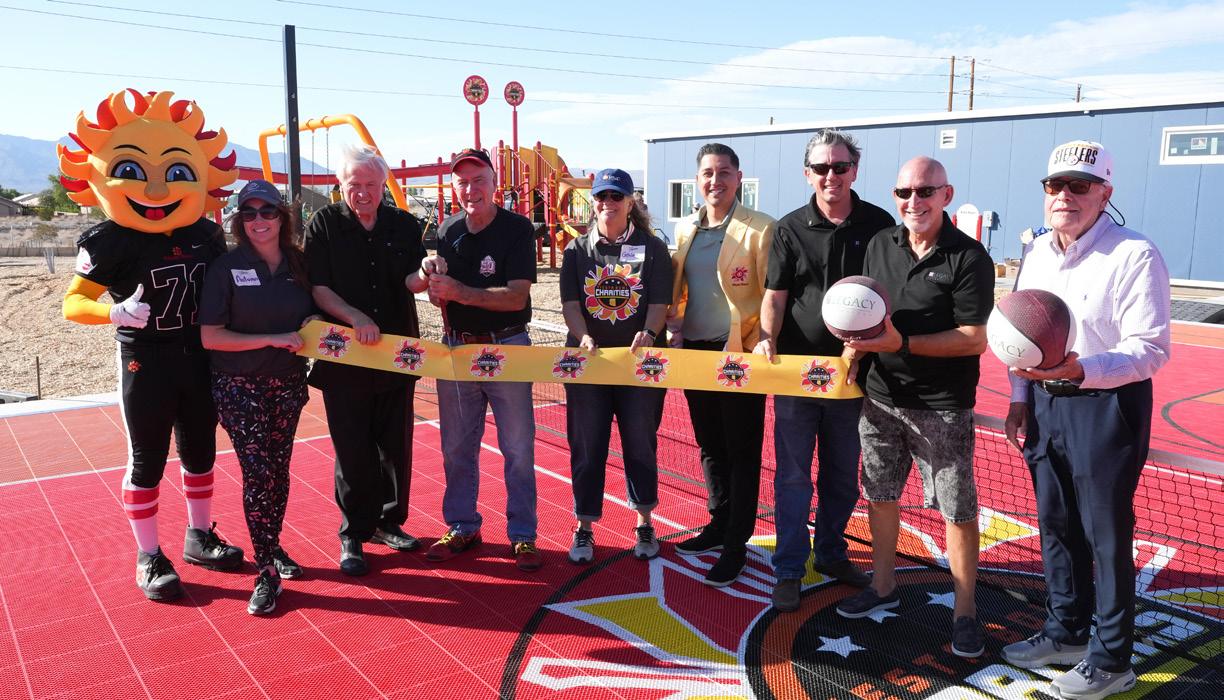
The Fiesta operates with the belief that tomorrow’s great stories come from the investments made today. So, through a variety of initiatives, the organization is making permanent change possible in our communities. Wishes for Teachers, now in year seven, provided $2,500 awards to 400 teachers for a total of $1 million in donations in November of 2022.
Through the organization’s KABOOM! Playground Builds, volunteers from the Fiesta Bowl come together with partners — including BHHS Legacy Foundation, PNC Bank, Lerner & Rowe and KABOOM! — to build new, innovative playground and multi-purpose sports courts for areas in need. And in October, more than 100 volunteers from Fiesta Bowl Charities, BHHS Legacy Foundation and KABOOM! came together to build the state-of-the-art playground and sports court for more than 800 children in the Fort Mohave community. A similar group came together in November 2022 to build a playground in Glendale, the organization’s 13th site for a Fiesta Bowl Charities playground legacy project over the last five years.
Bringing the joy of football directly to the community is also of importance. Each year, The Fiesta Bowl holds its annual Youth Football Clinic for kids ages 5 to 14. The non-contact clinic teaches more than just fundamentals to kids and is led by trained athletes and coaches. The kids spend the day learning, practicing and going through various drills. The Fiesta Bowl says this clinic also builds confidence, a strong work ethic and motivation that will help kids succeed on and off the field.
Through its two annual bowl games in the Valley, the Vrbo Fiesta Bowl and the Guaranteed Rate Bowl, as well as community events throughout the year, Fiesta Bowl Charities aided 40 Arizona nonprofits through its 2022–23 Grant Cycle, impacting an estimated 1 million Arizonans. With a wealth of community support and established, strategic initiatives raising funds for meaningful programs, the future Fiesta Bowl impact on Arizona will undoubtedly continue to be much deeper than the annual game, thus solidifying this organization as a real game changer for Arizona.
Vrbo Fiesta Bowl fiestabowl.org/sports/vrbofb
Catch the Vrbo Fiesta Bowl on Saturday, December 31, at State Farm Stadium — which this year serves as a College Football Playoff Semifinal Game. The winner will go on to the College Football Playoff National Championship on Jan. 9, 2023. For tickets, visit seatgeek.com/fiestabowl-tickets

For more details on the Fiesta Bowl and its series of regular programs, find their annual impact report at fiestabowl.org/ sports/2020/5/27/ community-impact-report
Tyler Butler is a chief social impact officer for a publicly traded corporate portfolio where she leads programs that positively impact humanity. She is also the founder of 11Eleven Consulting and she is often cited as a subject matter expert by Forbes, SHRM, Entrepreneur, U.S. News & World Report and more. linkedin.com/in/tylerbutler
Through the bowl games and events such as the Fiesta Bowl Parade, corporate partnerships and numerous community events throughout the year, Fiesta Bowl Charities has granted nearly $20 million in charitable giving in the last six years alone and nearly $25 million to the Arizona community in the last 11 years.
The college football bowl game drive economic growth while championing charitable causes
Supporting a flexible work environment, Google provides “distributed work playbooks” for leaders, managers, distributed employees and their buddies to ensure they are “getting connected, being connected and feeling connected” to their overall workplace.
Burnout? Recent studies by Gallup and ThriveMyWay revealed that 50–60% of employees say they are burned out, for reasons that include needing to be available 24/7 for their employers, lack of support by their managers (many of whom may also be overwhelmed), unreasonable time constraints and other reasons. A Korn Ferry study just one year ago indicated 89% of professionals say they have experienced burnout in the last two years, and 80% of that group say they’re more burned out now than at the start of the pandemic.

The future of work is dynamic. One would need an entire book to describe the many forces affecting trends in the workplace now and in the years to come. Unfortunately, by the time that book made it to print, its contents would be out of date.
So rapid are the forces of change, many organizations in the United States are still reckoning with the effects caused by the COVID-19 pandemic and the Great Resignation. The proliferation of remote work, and a class of highly skilled employees increasingly empowered to seek better jobs with better pay and benefits, still echo among the top workplace trends in store for 2023. For C-suite and HR leaders, the challenges of tomorrow will evolve quickly from the challenges of today.
Here are five workplace trends that will take center stage in 2023:
1. Addressing the global talent shortage: Korn Ferry estimates that the global human talent shortage will reach 85 million people by 2030. Private organizations and governments will be challenged like never before to help find ways to accelerate their development processes, and build expanded talent acquisition capabilities, to meet this demand. Companies will need strategies to incentivize their employees to stay — using long-term incentives, benefits and flexible workplace policies — to stem the outflow of employees who possess in-demand skills. Their options will expand significantly amid the coming competition for talent. Companies will also be challenged to find ways to automate work that is more tactical or transactional, looking to AI and robotics to fill gaps.
departmental barriers. Employees will be asked to take on projects based on skills that transcend traditionally defined roles. The World Economic Forum suggests investing in “human” skills — creativity, originality and initiative, critical thinking, persuasion and negotiation, emotional intelligence, social influence — to help navigate this emerging future. McKinsey’s survey of 18,000 people in 15 countries conducted last year further defined skills needed in the future world of work: cognitive skills like mental flexibility; interpersonal skills like inclusiveness and conflict resolution; digital skills like programming literacy and data analysis; and self-leadership skills like self-motivation, grit and persistence.
4. Physical and mental well-being gain importance: Talent shortages, supply-chain difficulties, business uncertainty and war are among the global forces exacerbating the demand on today’s employees. The risk of burnout will remain high. Employers will need to invest in a series of countermeasures: improved workforce planning to better predict what skills/roles and how many roles are needed, more generous hours and/or flexible schedules (including extra time off to recharge), tools and techniques for mental health and well-being, and expanding support for groups that may have left the workforce in an effort to woo them back. Companies will need to help improve their frequency of communication, appeal to and support employees’ common social interests, and determine ways for in-person and remote staff to connect more frequently to drive a sense of integration and belonging.
Jesse Meschuk is a career and human resources expert, and a senior advisor with Exequity. Meschuk has more than 20 years of consulting and human resources experience and has worked across a wide variety of industries, including technology, entertainment, gaming, retail, hospitality and sports. Meschuk’s work has spanned across the Americas, Europe and Asia. exqty.com
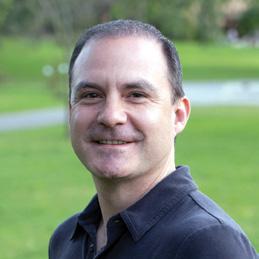
2. The emergence of the agile workplace: One solution to address the global talent shortage includes becoming more fluid and agile with regard to acquiring and employing talent. Many companies are moving toward a borderless talent acquisition strategy in which leaders hire based on skill sets regardless of where the employee is located (often creating additional legal entities or utilizing payroll services companies). Another popular strategy is the flexible work environment, in which in-person, hybrid and remote work combine to meet the needs of the business with the right talent. Some companies are moving to an office-less model to help go remote-only. GitLab, as an example, has 1,500 employees in more than 65 countries with no company-owned offices.
3. The emergence of the flexible workforce: The demands of work will require working across traditional
Korn Ferry estimates that the global human talent shortage will reach 85 million people by 2030.
5. The importance of sustainability: Creating a sustainable future is a trending topic as nations and private organizations pursue measures to limit global warming and address the climate crisis. Even institutional investors such as Blackrock are making Climate one of their key issues in evaluating their investment choices and voting decisions for companies. This will be further highlighted as Gen Z (born from 1997–2012) comes into the workforce. Addressing Climate change is the No. 1 concern among this age group, according to a recent Deloitte survey. Nearly half — 49% — state their personal ethics and beliefs have played a role in their career choices. Companies won’t just push forward on sustainability because it’s the right thing to do, or a good business practice, but because it will be required to attract and retain the talent they need for the future.

Broader
by Tim BeyerWhen COVID-19 arrived on our doorstep, the shift in B2B buying preferences from in-person to online was already well underway. The pandemic simply sped up the tide of change by pressing the digitally reluctant to take the leap.
Newbies soon found that B2B e-commerce offered them a slew of advantages. For buyers, online purchasing made it easier to identify suppliers and compare products as well as to place and manage orders. Sellers also reaped benefits. Compared to in-person, telephone or email orders, a wellthought-out e-commerce strategy allowed suppliers to grow revenue and decrease operational costs by expanding customer reach, eliminating human error and better managing inventory.
As a result, web stores have become the most frequent channel through which B2B buyers place orders today. In such a digital-first world, e-commerce is key to an organization’s ongoing success. But the successful deployment of an e-commerce solution often depends upon how well it aligns with a company’s existing technology base. Unfortunately, it is all too common that the keepers of this tech, the IT leaders, are not consulted during the e-commerce search.
B2B leadership teams who purchase e-commerce software anticipate only positive business outcomes from their investments. Unfortunately, reality doesn’t always meet those expectations. In fact, recent research into the impact of B2B e-commerce solution effectiveness has found that 84% of IT leaders believe their company’s chosen solution actually has a negative impact on business.
Why? When enthusiastic non-IT business leaders are sold an e-commerce solution without the extensive input of their IT team, the chosen technology actually may hurt rather than help the organization. Executives who understand business goals often lack a full view of their own business’s technology ecosystem. They forget to consider IT basics — how a solution fits into the current tech stack, deployment complexity, team capabilities and training requirements, software upgrades. Overlooking these fundamental issues can cause waves of problems.
One impact of a poorly aligned e-commerce solution is a high maintenance requirement. IT leaders report that, on average, two to three of their team members are tasked to work on the B2B portal, with 41% of their time spent on maintenance. They also noted spending 37% of their budget
on integration. The ripple effect of diverting IT resources — both time and money — to e-commerce software problems not only limits capabilities for other necessary IT projects (such as security), but also decreases budget available for innovation. When constantly putting out fires, IT simply cannot perform as leadership or others in the organization expect it to perform.
A business’s revenue is at risk, as well. A web store that goes down or isn’t working as expected leads to frustrated customers who are less likely to return. A solution with an outdated design, poor user experience and lack of desired features means low e-commerce adoption. On average, 188 orders are at risk each month due to web store downtime, according to a survey of IT leaders.
When the finger pointing begins, more often than not those fingers are aimed at the IT team. Sixty-seven percent of IT leaders say their relationship with commercial teams has been harmed because customers don’t use the online store as much as expected. And when the team’s performance doesn’t meet internal expectations because it must devote an inordinate amount of time and energy to one problem software system, its reputation within the organization takes another hit.
To avoid e-commerce collapse, businesses must embrace the idea that in today’s digital-first ecosystem, IT is the business. Every single functional area needs technology to meet its and the overall organization’s mission.
A business that wants to stop problem waves from forming must, therefore, treat its IT leaders as equal stakeholders when it comes time to evaluate the efficacy of any software solution. When e-commerce tools or software are under consideration, IT leaders are the ones best positioned to understand how prospective software will align with a current tech stack, recognize the true cost of the software beyond software fees (e.g., IT labor, budget) and provide the tech intelligence required to evaluate platform capabilities.
The truth is that IT leaders serve as the bridge between strategy and technology. When the perspectives of IT leaders are not heard by the highest levels of management, the waves of consequences can be huge. By serving as the bridge that connects strategy with operational processes — whether discussions are centered on e-commerce solutions or, for that matter, any other significant tech tool — IT leaders who have an equal seat at the table with other key decision makers are able to help ensure that an organization’s efforts in digital transformation and optimization ultimately lead to business success.
Recent research into the impact of B2B e-commerce solution effectiveness has found that 84% of IT leaders believe their company’s chosen solution — chosen without their input — actually has a negative impact on business.

vision is wiser than enthusiasm by non-IT business leaders
Tim Bottke is a senior strategy partner at Monitor Deloitte and an associate professor for Strategy and Digital Transformation at SDA Bocconi, a Financial Times/Forbes/ Bloomberg Businessweek

Top-Five European business school. He has more than 22 years of top management consulting and (digital) transformation experience from two global strategy boutiques and Deloitte, working with clients in more than 20 countries.
In Digital Transformation Payday: Navigate the Hype, Lower the Risks, Increase Return on Investments (Wiley, December 13, 2022)
Bottke delivers a provocative new perspective on digital business transformation — using research to get beyond the hype and uncover its real financial payback. wiley.com
How can companies design their digital transformations to maximize value?
by Tim BottkeDigital transformation as we see it is the business transformation of a firm/corporation. These transformations have five characteristics.
Numerous frameworks and strategy approaches have evolved over time, become the hype of the day, and then vanish again (Mintzberg, Ahlstrand, and Lampel 1998). No matter what the approach chosen actually is, one thing I have learned over almost two decades of strategy work is that any transformation approach not based on a clear strategy to win will almost certainly fail. This is probably even truer for digital transformation, where the sweet temptations of digital technology can lead to losing sight of the true goal of any business: sustainable success.
Organization and strategy research is usually clear in the sense that most if not all strategic transformations of a given firm are influenced by the market context. Numerous frameworks and strategy approaches related to this idea have evolved over time (Mintzberg, Ahlstrand, and Lampel 1998) usually with one idea interwoven: There is a more or less complex supply and a more or less complex demand consideration. In managerial practice, industry sector, industry concentration, or similar data points serve as moderators for statistical firm performance and value analysis, as for example nicely summarized for technology/IT/IS value research by Kohli and Deveraj (2003).
As visible in practitioners’ and academics’ digital transformation work so far, there is some agreement that, in the end, the firm overall is the ultimate reactant in scope of the digital transformation. Beyond perspective advice, however, there is no common structure for further breaking down this scope (reactants) in terms of where to start, in which order to proceed, and even less which planning and execution process (reaction mechanism) should be applied to achieve the desired outcomes. As already proven in digital transformation practice and discussed in sporadic managerial articles at least some common themes to better structure digital transformation scope emerge. It all depends where in your firm you start and where you are planning to end. Leveraging — similar to established innovation research — the distance to the core business (Strecker 2009), the distinction between “core,” or the “center” business (Gray et al. 2013), the “adjacent”
business, and the “frontier” business, also called the “edge” (Gray et al. 2013) is applied to define your starting point or current transformation focus. This is always based on the view that these scope questions only mark the starting point of a digital transformation, never losing the full firm scope out of sight. Because the whole firm needs to adopt (AndalAncion, Cartwright, and Yip 2003), firms need to find the right balance between exploitative transformation in the “core” (for example, modernizing their legacy infrastructure) and explorative transformation in “adjacent” and “frontier” areas (for example, launching new business units or diversifying into very different or close-by industries).
Interestingly, and opposite to the widely accepted ingredients of a clearly broken-down winning strategy (Lafley and Martin 2013), practitioners are shifting more and more away from discussing the transformation reactants (i.e., the actual transformation scope) to the reaction mechanisms (i.e., the transformation process). Without a clear target in mind, business buzzwords of the day, originated from software and IT development practices, like “agile,” “hybrid,” “dual-speed,” “bimodal,” come into play and need to be carefully described and understood to allow for a meaningful integration into our framework.
Finally, outcomes (products) are structured in two different categories with distinct characteristics: abstract outcomes and concrete outcomes. The first category includes all subjective digital transformation outcomes, which are not observable by shareholders. Unfortunately, it still forms the major body of digital transformation impact analysis in research and practice and encompasses all questionnaire/survey or other subjective analysis-based maturity models. This category serves as an element of the transversal framework for the sake of completeness, but it is of little value for empirical-driven research. Instead, the second, the objective category, likely includes more unbiased descriptions best proxied by publicly available statements on digital transformation efforts, actions, or qualitative achievements, operational KPIs — that is parameters, for example, on customer experience or employee experience (net promoter scores) — and productivity parameters and financial KPIs — that is directly linked digital transformation data from P&L statements, balance sheets, cash flow statements, and these can provide more adequate inputs for empirical findings.
Excerpted with permission from the publisher, Wiley, from Digital Transformation Payday by Tim Bottke. Copyright © 2023 by John Wiley & Sons, Inc. All rights reserved. This book is available wherever books and eBooks are sold.
One thing I have learned over almost two decades of strategy work is that any transformation approach not based on a clear strategy to win will almost certainly fail.
This new intercooled, twin-turbo powerhouse is the most powerful engine ever in a Nissan Z.


The Nissan Z 3.0-liter twin-turbo V6 engine boasts 400 horsepower, 240,000 rpm and is a strength of power. An aluminum-alloy block and heads keep things light, while a water-cooled intercooler helps keep things cool. Optical turbo speed sensors help the turbines produce power up to a dizzying 240,000 rpm.
The first on any Nissan Z, an available launch control helps reduce wheel spin and hop by holding the engine at a
pre-set rpm and modulating power to give fast, consistent acceleration. The driver can feel the g-force in the sensation of being pushed against the bolstered sport seat and can revel in the balance from the Front Midship chassis design as the rear wheels power out of the turn.
A horizontal instrument panel design wraps around the driver to create a true cockpit, while an available 9-inch center touch-screen display features Wi-Fi and wireless Apple CarPlay®. Feel is everything, so the thickness and shape of the wheel was inspired by the GT-R. A new telescoping steering wheel and switches put control at the driver’s fingertips. The driver’s seat employs anti-slip material and a slide-reducing center pad in the lower seat cushion. Padded knee bolsters help the driver in enthusiastic cornering.

The Nissan Z’s 12.3-inch display Sport screen — one of three selectable modes — was designed with input from Tsugio Matsuda, a racer for NISMO in Super GT in Japan. In the new 2023 model, the driver gets key information angled in the line of sight, including turbo boost, turbine speed – yes, up to 240,000 rpm – and voltage. —Mike Hunter
Nissan nissanusa.com
Get non-medicated relief from headache pain and anxiety, sleep better and feel less stressed with The Desk Light from Allay. Everyday light creates very large electrical signals in the eye, with a direct path to the brain. This influences everything from mood to sleep. Developed by Harvard Medical School professor and neuroscientist Rami Burstein, a world leader in the science of migraine and headache pain, the innovative Allay lamp works by emitting a precise band of natural green light, which generates far smaller electrical signals to the eye and brain. The result is a calmer mind, which helps improve sleep and reduce pain — even during headaches and migraines.
2023 NISSAN Z
MSRP: $39,990 City: 18 mpg Hwy.: 24 mpg
Trans: 6-speed manual or 9-speed automatic 0–60: 4.3 sec

Allay’s The Desk Light is great for lighting up a workspace or focusing on a book before bed. Allay’s patented glow naturally soothes the brain, reducing stress, anxiety and headaches. Its cutting-edge technology features simple touch controls and
includes a built-in wireless charger for a phone. The Allay team is focused on one simple mission: to help people with light sensitivity emerge from the darkness and get back to doing what they love. While many can benefit from this innovative product, it’s especially helpful for those who are not able to use the stronger prescription migraine medications or when acceptable over-the-counter headache medications don’t work well enough. —Merilee Kern, a Forbes Business Council, Newsweek Expert Forum and Rolling Stone Culture Council member
Mission-Ready at a Glance The Nissan Z’s fully digital, 12.3-inch display can quickly be configured with three preset screens to suit the driver’s needs, whether it’s the daily commute, navigating a new area or our favorite: enjoying the awesome performance. Photos courtesy of Nissan (top), Allay (bottom)
Allay allaylamp.com

House-made pasta, beef ragu or vegetarian, ricotta & mozzarella cheeses and fresh garden greens, served with toasted Noble bread $18

 by Jim Cunningham
by Jim Cunningham
Merkin Vineyards in Old Town Scottsdale is on a mission to delivering a 100% Arizona experience through the use of its homegrown produce and wine. It is a mission few would choose to take on, but it is essential when regional, sustainable and a sense of place are the main goals.

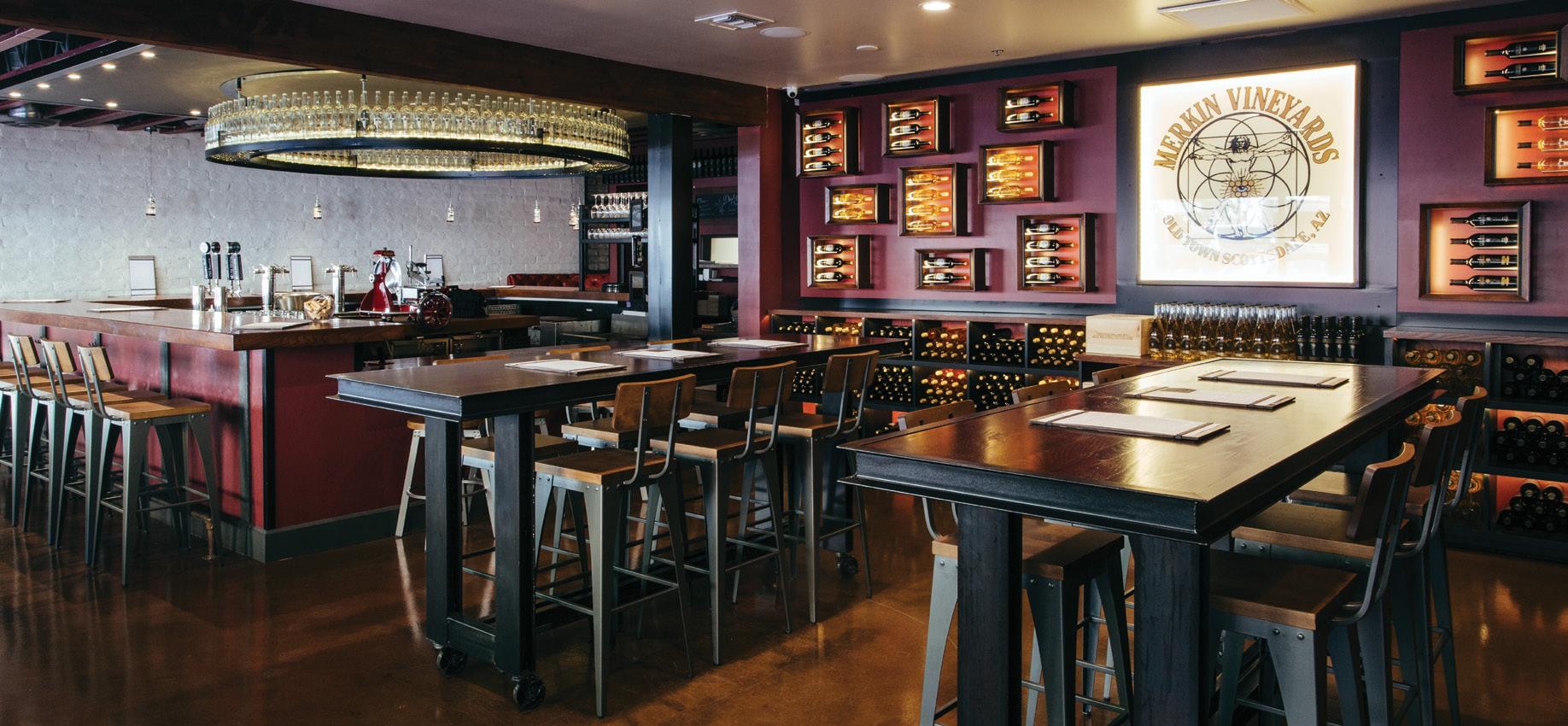

locally owned and operated and celebrate the abundance of our agriculture.
Merkin field greens, orange, apple, pistachio, pomegranate seeds, Crow’s Dairy Goat Cheese, raisins and a citrus dressing $14
Merkin Vineyards’ and its sister label Caduceus Cellars’ backyards are known across the state and abroad for their unique estate wines. The backyards are also home to ducks, quails, fruit orchards, greenhouses, herb beds and rows of vegetables that become the ever-changing seasonal focus of the restaurant’s culinary teams.
As the saying goes, it takes a village, and that is where we can highlight the vast selection of Arizona’s bounty. For instance, Two Wash Ranch in New River, Arizona, is our go-to option for fresh chicken, as well as Rovey Family Farms, which provides high quality, locally raised Wagyu beef. Hassayampa Farms and Crow’s Dairy are other notable choices, as they make delectable cheeses. The German Sausage Company also offers cured meats to complete Merkin Vineyards’ charcuterie board checklist. All these purveyors, like Merkin Vineyards, are
There is a small window when the peak flavors are bursting after fresh fruits and vegetables are first harvested. It is a challenge to maintain this freshness if produce must be trucked in from across the country or even outside borders. Besides the fresh factor, knowing the growers, the soil they grew it in and the care they gave it can make a huge impact on the meal. The modern grocery store mentality has left us blind to the simple fact that not everything is always in season. Mother Nature beats the drum to which we march and jump.
Roasted garlic parmesan spread, Merkin farm vegetables, fresh fontina and mozzarella cheese $16
The Merkin Vineyards menu remains flexible and changes weekly — or even daily, depending on Mother Nature’s whims. This ultra-seasonality based on the constant ebb and flow from Arizona growers creates our true sense of place in this muddled food landscape. A few of our stellar dishes include the Lasagna Cupcake made with house made pasta, beef ragu (or seasonal vegetables for a vegetarian version), ricotta and mozzarella cheese, fresh garden greens and toasted Noble bread; the Harvest Salad mixed with Merkin Vineyards’ field greens, orange, apple, pistachio, pomegranate seeds, Crow’s Dairy goat cheese, raisins and citrus dressing; the Crucifixen Wood Fired Pizza crafted with roasted garlic parmesan spread, farm vegetables, fresh mozzarella and fontina cheese; and the Charcuterie Board served with locally produced meats, cheeses and seasonal accompaniments.
Overall, sustainable may be considered a catchy marketing word, but Merkin Vineyards plans to be in Arizona for years to come, offering lunch, dinner and wine tasting. Growing grapes is a long-term plan and keeping future seasons in mind is a necessity. Our friends at Local First AZ said it best: “By sourcing more products and services locally, we are investing our dollars to create self-reliant local communities that offer opportunity and prosperity for all.”
Merkin Vineyards Old Town Scottsdale 7133 E. Stetson Dr., Scottsdale (480) 912-1027 merkinvineyards.org
Pointing out, “The growth of seasonal and weekly farmers markets across our Valley is a great indicator of the capabilities of this state’s producers,” Cunningham, the restaurant’s general manager, says, “It is now up to the restaurants and home cooks to do them justice.”
Allen-Etchart, Sophie, 34
Beyer, Tim, 61
Botkin, Sandy, 55 Bottke, Tim, 62
Bremer, John F. Jr., 30
Butler, Tyler, 59 Clyde, Matthew, 35
Crisp, Brian, 53
Cunningham, Jim, 64 Daly, Michael, 22
Ebert, Mike, 36
Garmon, Angela, 37
Gonzales, Dr. Steven, 38
11Eleven Consulting, 59
345 Wealth Management, 26 Allay, 63
ARG Coaching & Consulting Group, 37
Arizona Commerce Authority, 68 Arizona Community Foundation, 4, 50
Arizona Hispanic Chamber of Commerce, 31, 52
Arizona Municipal Strategies, 54
Arizona Office of Tourism, 17, 42 Arizona Opera, 16
Axiom Care, 28 Axon, 12
AZP Multifamily, 14
Board Developer, 41 Caliber, 22
Conceptually Social, 51
Courtesy Automotive Group, 5, 40
Desert Financial Credit Union, 12 Duffy Group, 16
ECM Technologies, 22 Enterprise Bank & Trust, 53
Goodnow, James, 39
Graham, Cathy, 12
Gruwell, Scott, 40
Guay, Candie, 30
Guiliano, Neil, 11 Hart, Elizabeth, 12 Hayden, Jim, 41 Johnson, Debbie, 42 Johnson, Karen D., 43
LaPorte, Todd, 44 Lashgari, Rana, 54 Lopez, Nick, 16 Mason, Kelli, 18
Mathew, Titus, 24 Melton, Heath, 24 Meschuk, Jesse, 60 Micklethwait, James, 20 Micus, Dillan, 26 Mukundan, Shanmugam, 16 Nasis, Rania, 66 Norton, Randal, 59
O’Neal, Tim, 45 Peterson, Brigette, 46 Pierson, John G., 47 Rawson, Darren, 14 Rousseau, David, 48
Envida, 30 Exequity, 60 Fennemore, 15, 39 Footprint Center, 49 Gilbert, Town of, 46 Goodwill of Central and Northern Arizona, 7, 45
Greater Phoenix Leadership, 11 Guidant Law Firm, 58 Holualoa, 22 HonorHealth, 2, 44
Howard Hughes Corporation, The, 24
Ideas Collide, 9, 35 Jive, 8 Jll, 23, 47 JobPage, 18 Kahoot!, 20 Kinessage, 25 Kiterocket, 67
Larry H. Miller Hyundai Peoria, 16 LiftedViz, 30
LIME Painting of Phoenix, 16
In each issue of In Business Magazine, we list both companies and indivuduals for quick reference. See the stories for links to more.

Maricopa County Community College District, 38
Merkin Vineyards Old Town Scottsdale, 64 New Pathways for Youth, 21, 43 Nissan, 63
Phoenix Mercury, 49 Phoenix Suns, 13, 49 ProTech Detailing, 25 Read Better Be Better, 19, 34
RED Development, 36 Sana Commerce, 61
Rowley, Jason, 49
Seleznow, Steve, 50 Smith, Gary, 58
Specter, Joseph, 16 Stevens, Christine, 28 Utsunomiya, Kyu, 51 Vigano, Davide, 28 Villalobos, Monica, 52 Weltman, Barbara, 55 Yates-Woods, Whitney, 12
Bold listings are advertisers supporting this issue of In Business Magazine
Sensoria Health, 28
SRP, 27, 48
Stearns Bank, 8
Super Awesome Care, 66
Tri Pointe Homes, 16
TruWest Credit Union, 16
U.S. Egg, 16
UnitedHealthcare, 29
Vrbo Fiesta Bowl, 59
WM Phoenix Open, 3
Yates Buick GMC, 12
Rania Nasis M.D., MBA, is the founder and CEO of Super Awesome Care, a tech-enabled healthcare platform for kids with food allergies and their families. A physician entrepreneur and digital health expert, her mission is to bring the best food allergy care to all families, when and where they need it. superawesomecare.com
Enough about “cracks” in the glass ceiling. We’re wielding sledgehammers; cracks seem beside the point now.
Don’t get me wrong. We have a long way to go in a “traditional” sense. Sure, more women are running Fortune 500 companies than at any previous point in Fortune 500 history, but that figure amounts to a paltry 5%. Instead, let’s take a closer look where it matters: The number of womanowned startups in the United States has increased 74% over the past 20 years. Especially in digital health.
Why? Good ol’ traditional gender roles. Women have historically served as CMOs of their families, the chief medical officer in charge of choosing primary care physicians for spouses, pediatricians for kids and eldercare for parents. We face the brunt of childcare, daycare, parenting and healthcare; and the sheer drudgery of all that on-the-job training has made us irreplaceably experienced innovators of digital health.
Take Maven, for example. Founder Kate Ryder noticed how the healthcare system seemed to go out of its way to work against working women, particularly poor working women of color. So, in 2014, Ryder founded a virtual health clinic for women and families that is now valued at more than $1 billion. “I want to be able to show up to every person who is thinking about starting a family, or in those early years of building their family,” she said in an interview with Goldman Sachs earlier this year. “And we’re showing up in a way you need us to show up.”
Because entrepreneurship affords founders and CEOs a way to effect meaningful change, close the pay gap and lead on their own terms, it is becoming an increasingly attractive option for more women. Determine your hours, your salary and your mission? Please, and thank you!
Since the decade before the pandemic — and continuing today — women have been starting businesses at five times the national average. Woman-owned businesses have generated $1.6 trillion in revenue each year, outperforming the national average.

Yes, sometimes we’re mistaken for arm candy, as Anne Wojcicki discovered when she was both the cofounder of 23andMe and Sergey Brin’s wife (guess which of those titles trailed the selfmade billionaire like toilet paper on the bottom of her shoe?).
And, while female founders still face steeper barriers to
The growing number of female founders is supported by a growing number of female funders interested in investing in their peers.
funding than men, times they are a-changin’. According to the New York Times in an article November 2, 2021, “This year, start-ups with female founders … have raised more venture capital dollars and have executed more exits at greater values than at any point in the last decade. Start-ups with a female founder raised more than $40 billion through September, almost double the amount invested in companies founded by women in all of 2020 or 2019.”
This growing number of female founders is supported by a growing number of female funders interested in investing in their peers. And mentorships, angel groups and networking groups are creating a new girls’ club that rivals the old boys’ club.
Studies have shown female-founded businesses deliver more than twice as much per dollar invested as those founded by their male counterparts. These startups also generate 10% more in cumulative revenue over a five-year period. It should surprise no one that those who ask for directions find the big, fat exits.
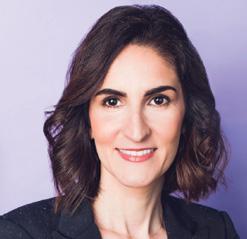
McKinsey shows that “gender-diverse” businesses are 15% more likely to financially outperform the industry median. And studies like “How Diverse Leadership Teams Boost Innovation” continue to prove that companies with women in leadership roles surpass the more male-dominated ones in profit and healthy work culture.
Particularly noteworthy is that last point: culture. In the era of the Great Resignation, workplace culture is shouldering a bigger piece of overall success.
“A flexible workplace is inherently inclusive and can substantially increase the diversity of your talent pool,” writes Alex Schrecengost, founder and CEO of Virtual With Us and Culture With Us. “Seek out the ideal talent, not the ideal arrangement, because everyone has a different lifestyle and goal, and everyone should truly have a seat at the table.”
Women have been incredibly successful at doing just that. Spanx founder Sara Blakely even teaches a Master Class in entrepreneurship and building a strong workplace culture.
So, while it’s true that starting a company isn’t easy, it isn’t impossible, either. What makes an entrepreneur successful is passion and drive — traits shared in equal measure by both women and men.
The new girls’ club gains on the old boys’ club























































Every business strives to grow revenue, diversify their buyer base, and create more jobs. In Arizona, we help make those goals a reality. Through the Arizona State Trade Expansion Program (AZSTEP) and ExporTech, small business owners can collaborate with public and private sector partners to get assistance exporting their products and services around the world. Together, these programs will help you develop global strategies, implement go-to market initiatives, attend international trade shows and access resources to compete on a global scale. Visit our site to accelerate your expansion and grow your business.
